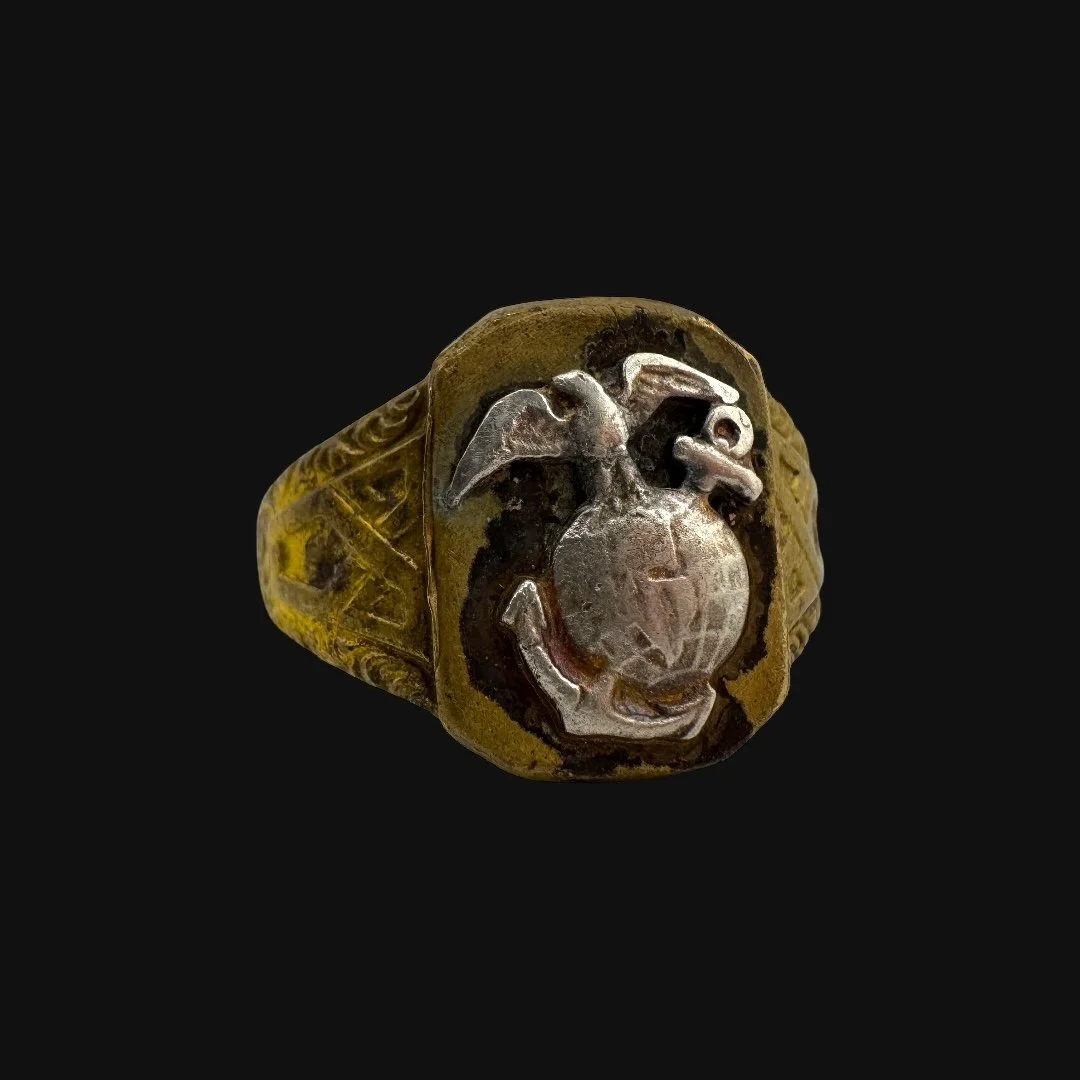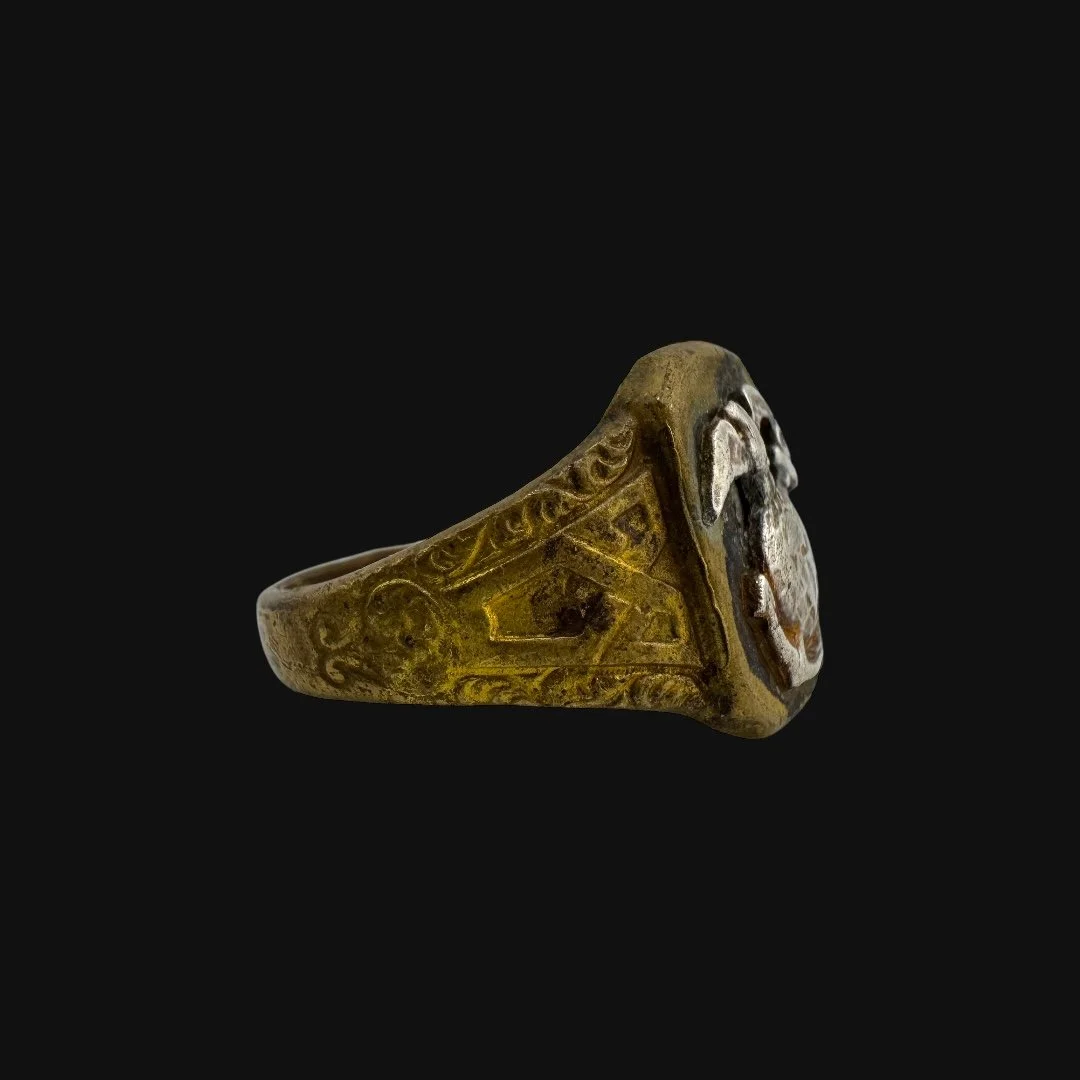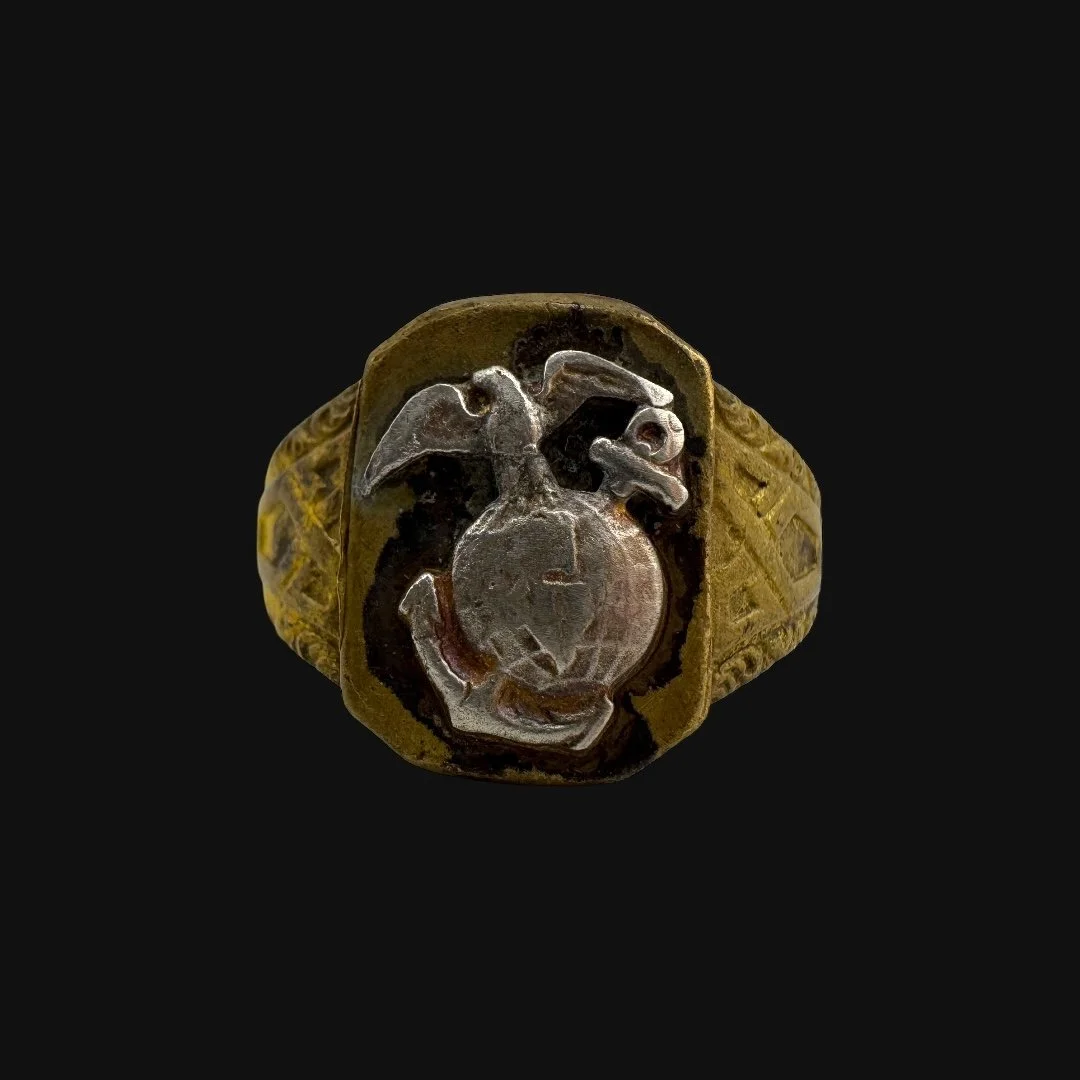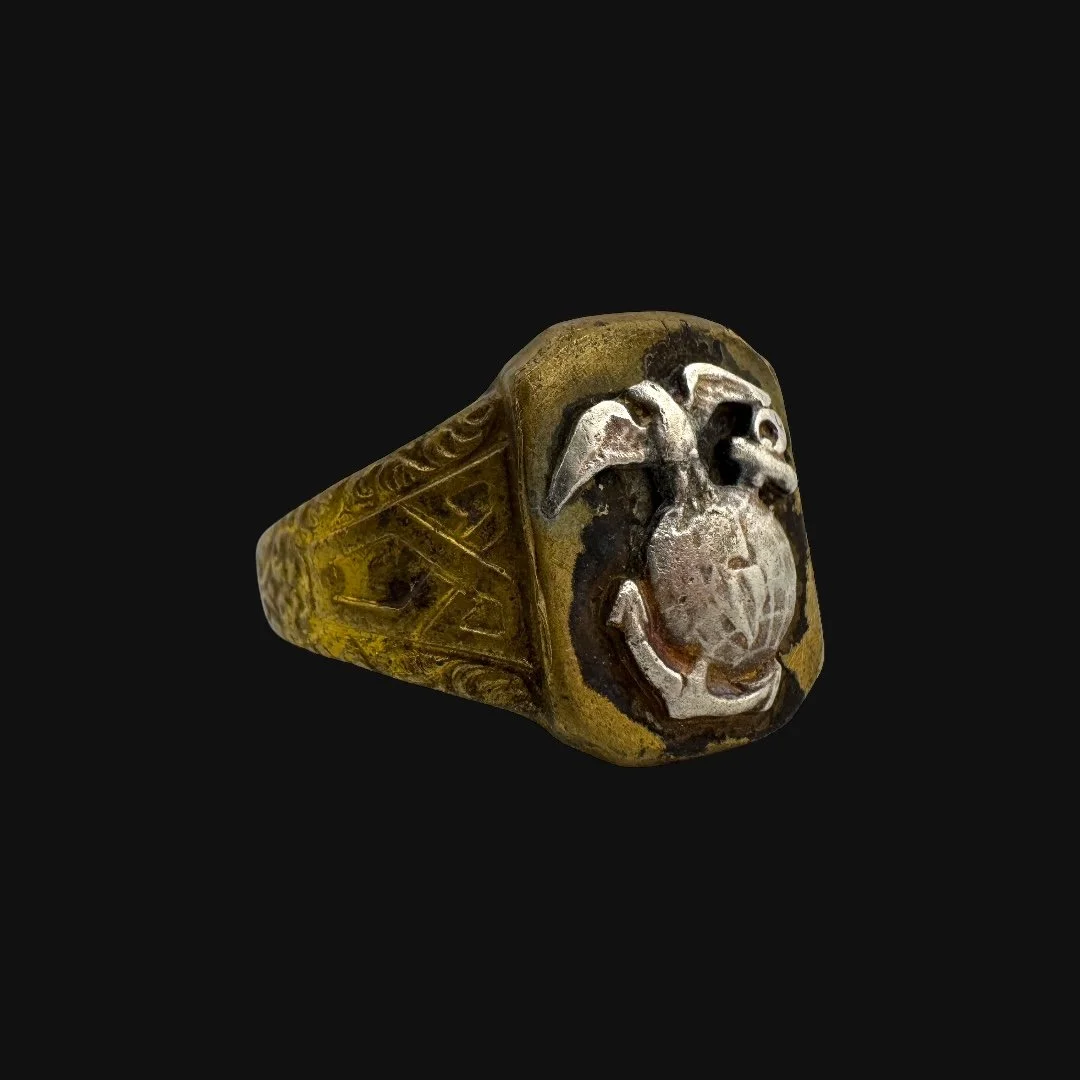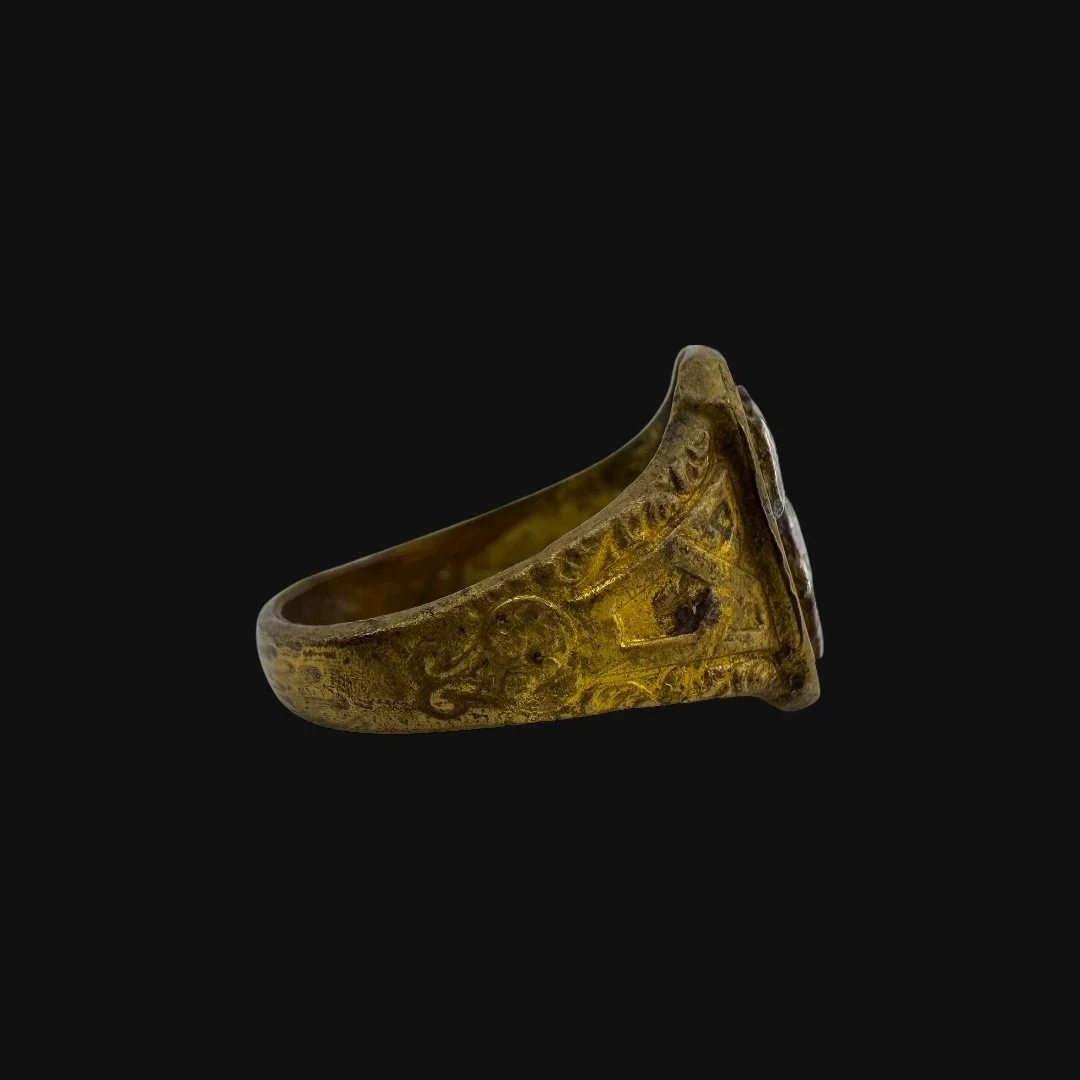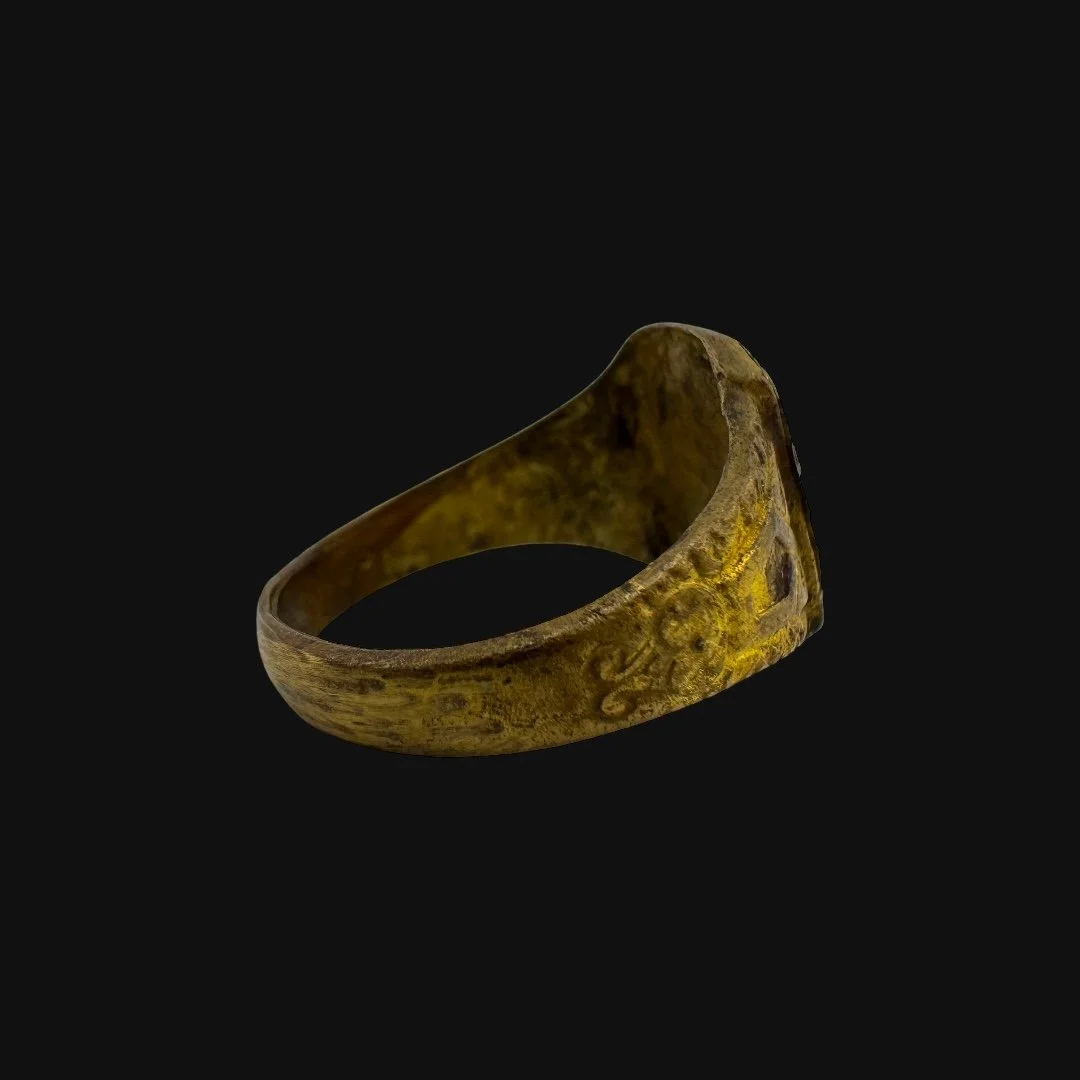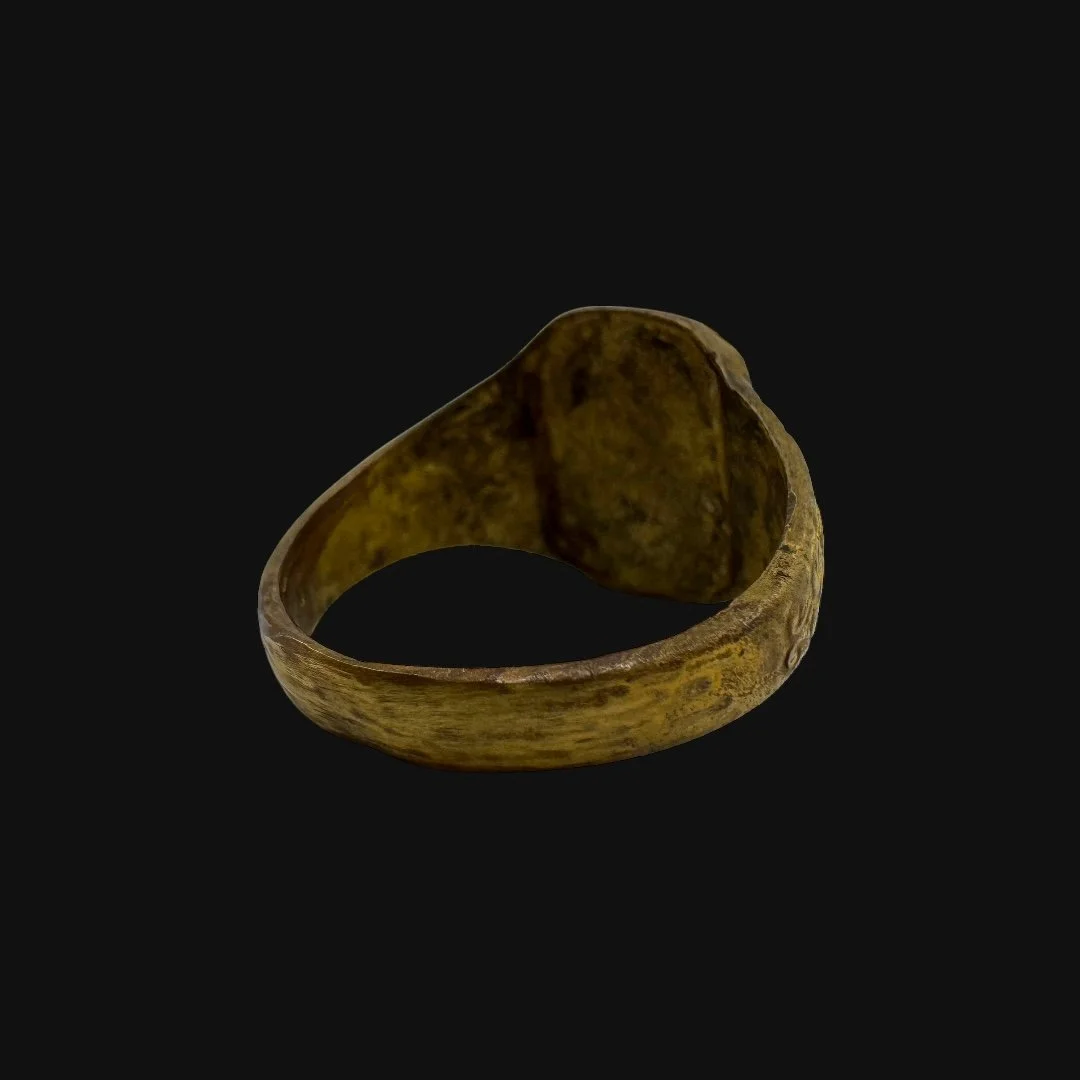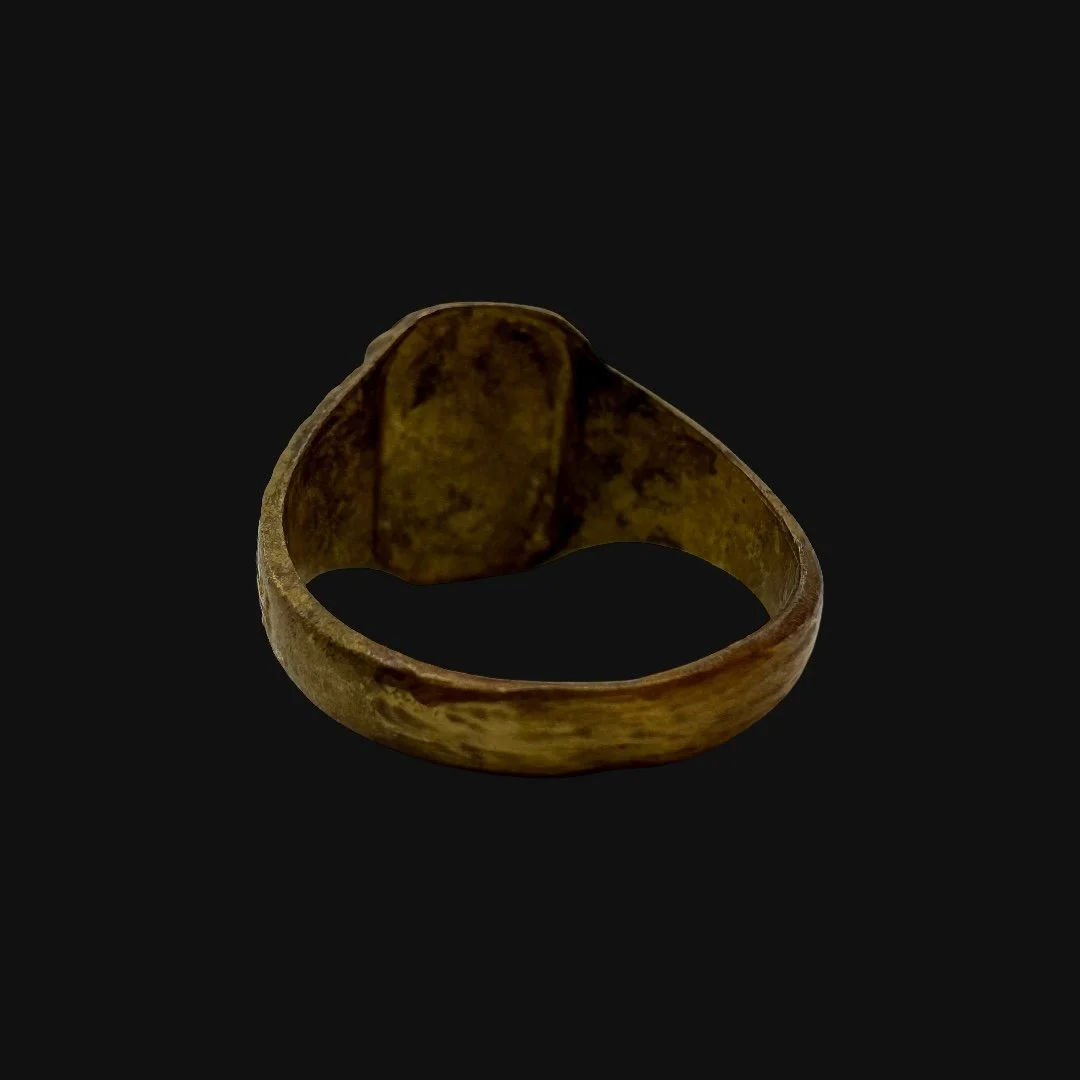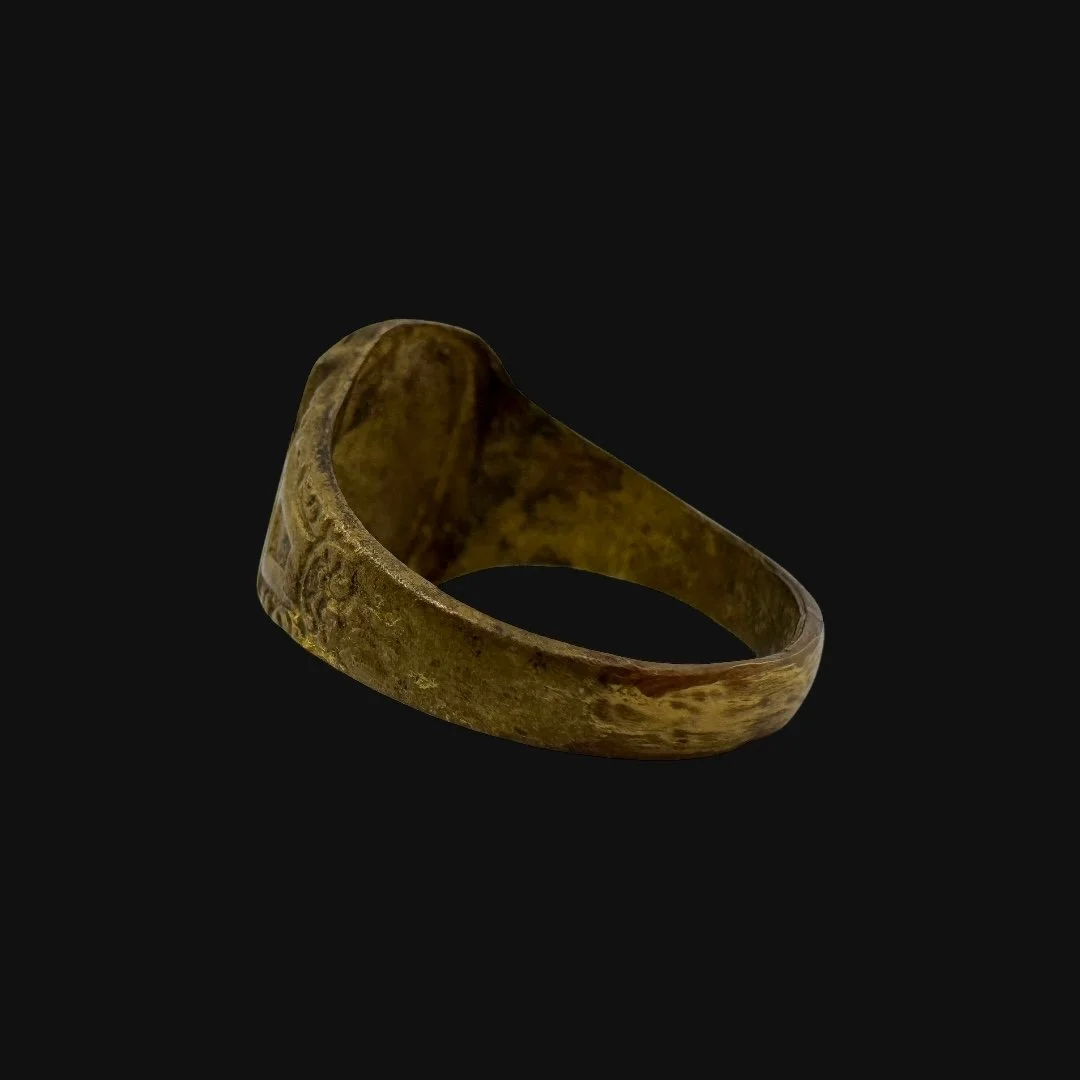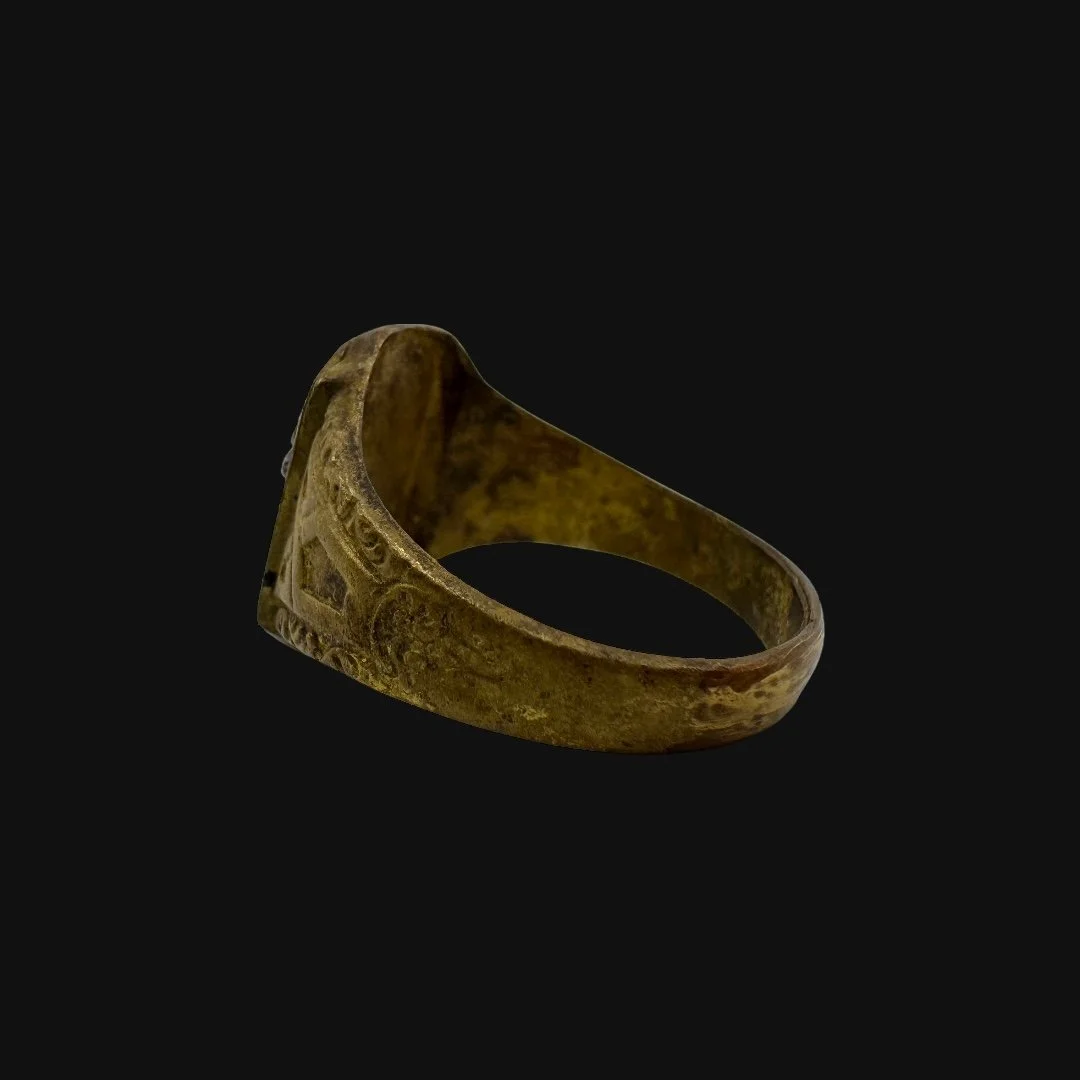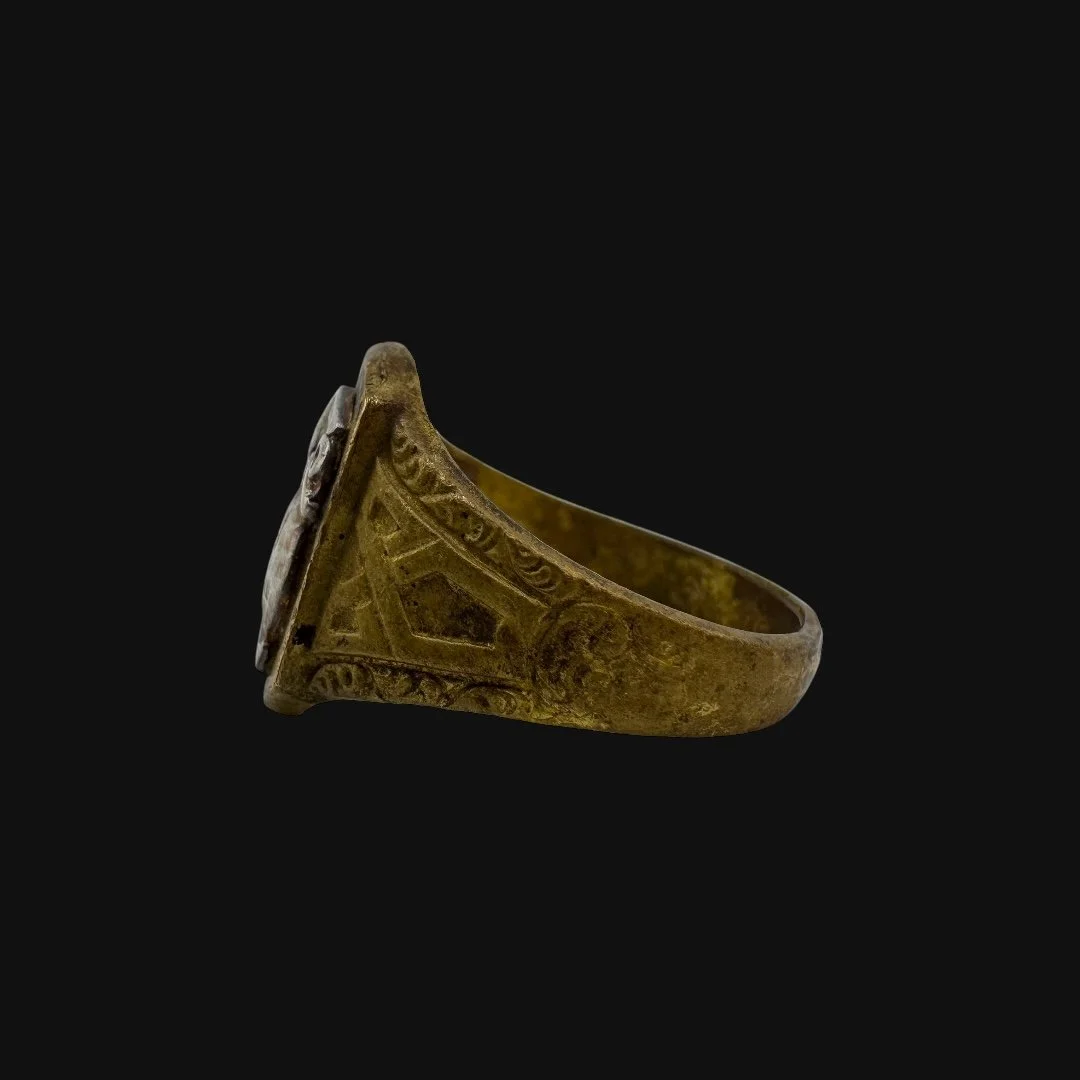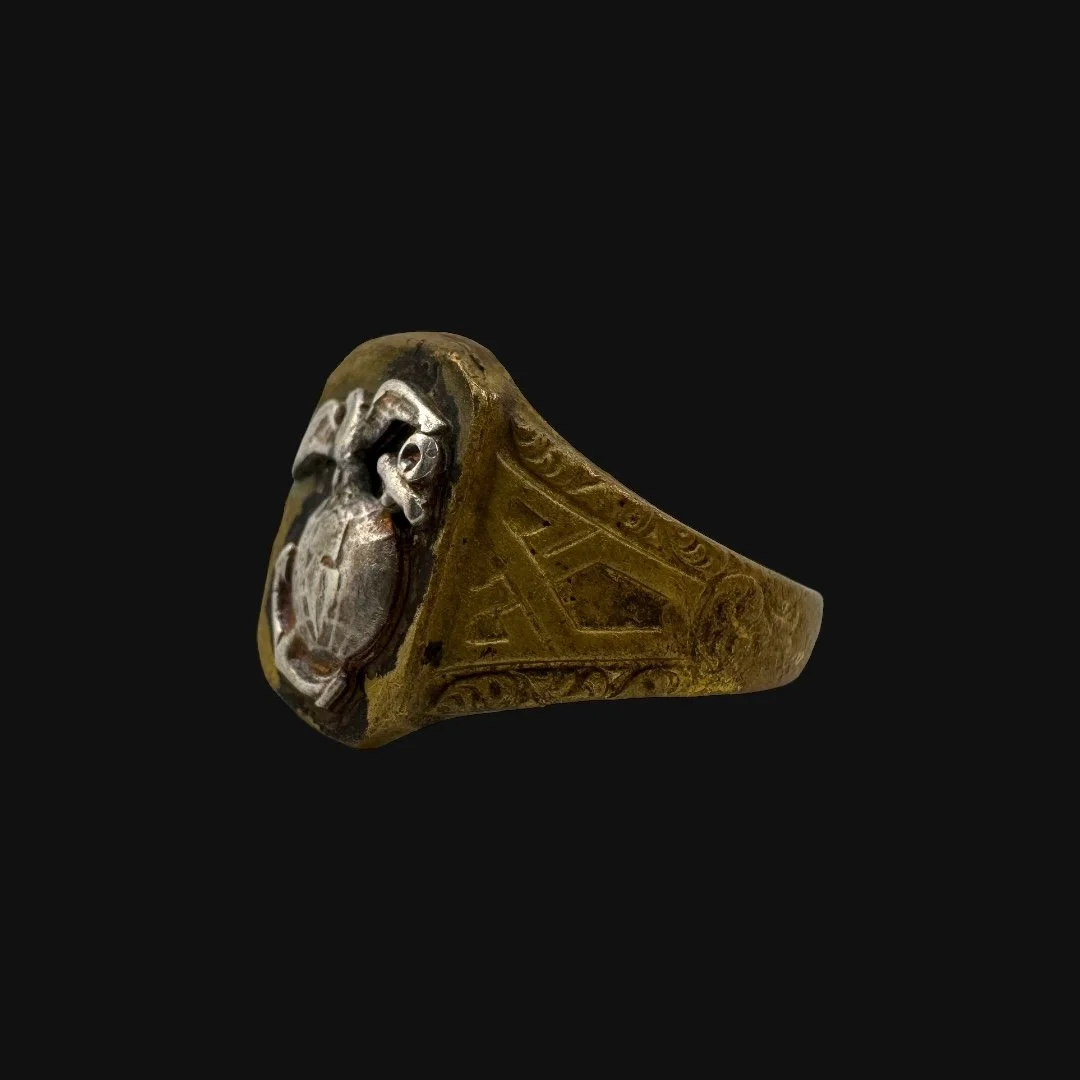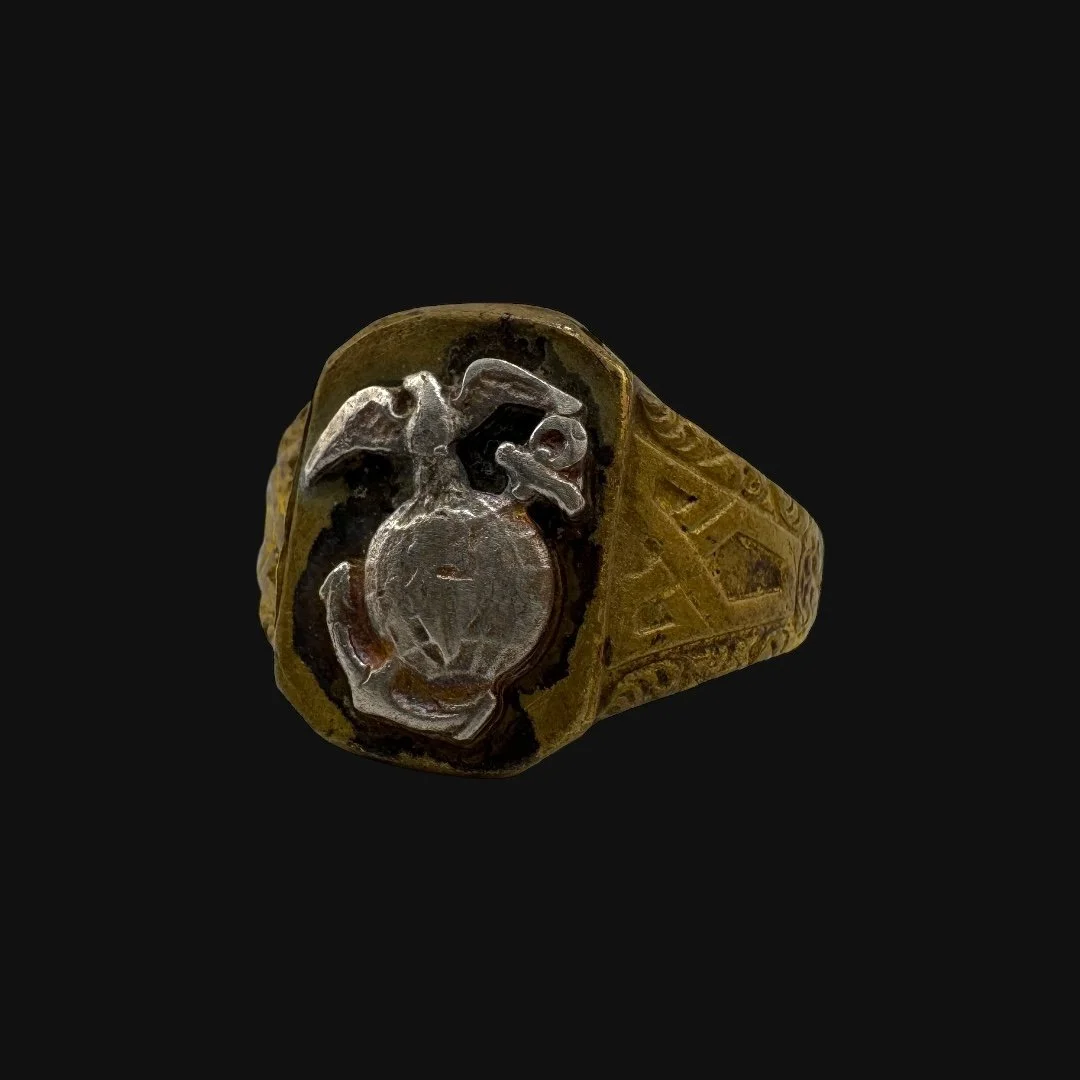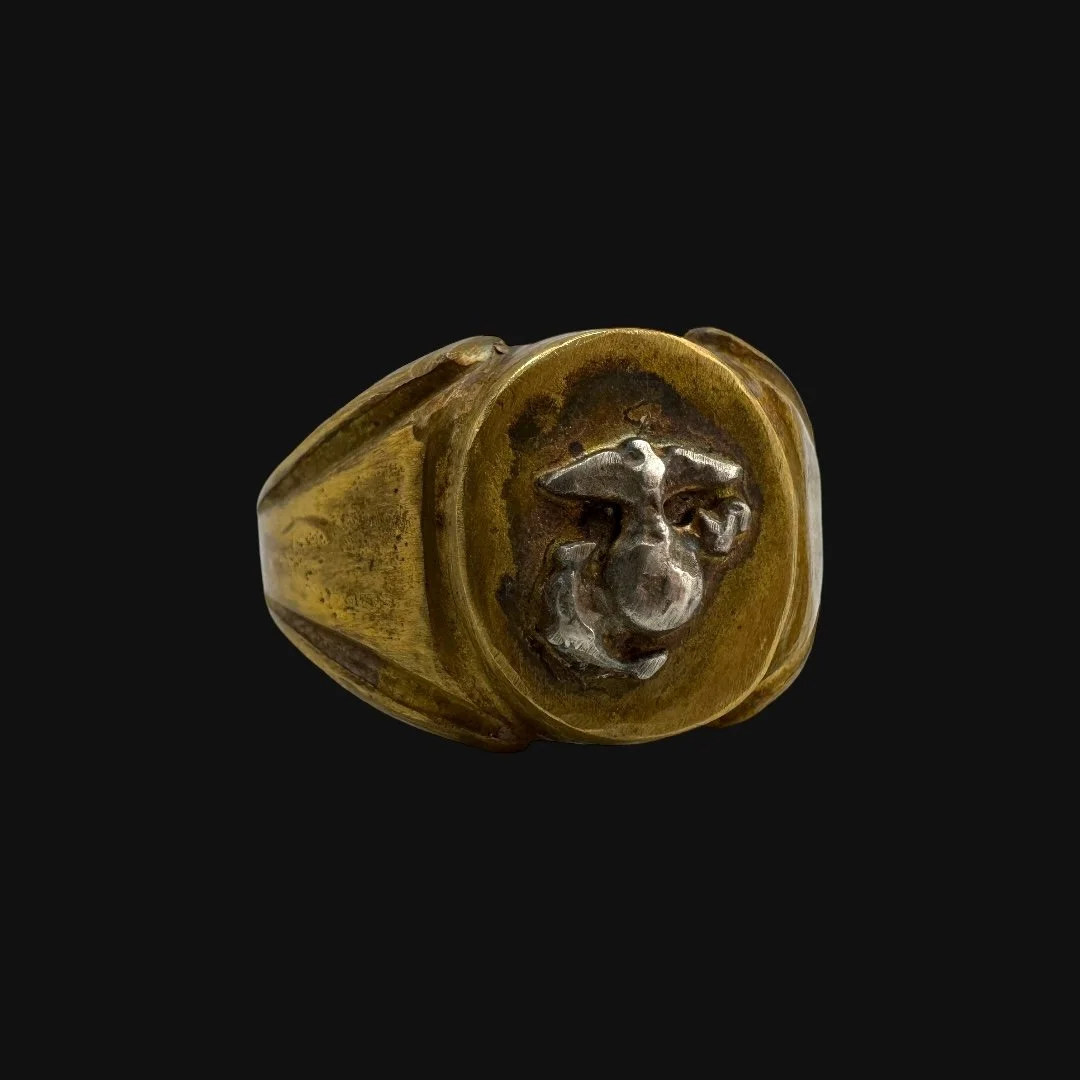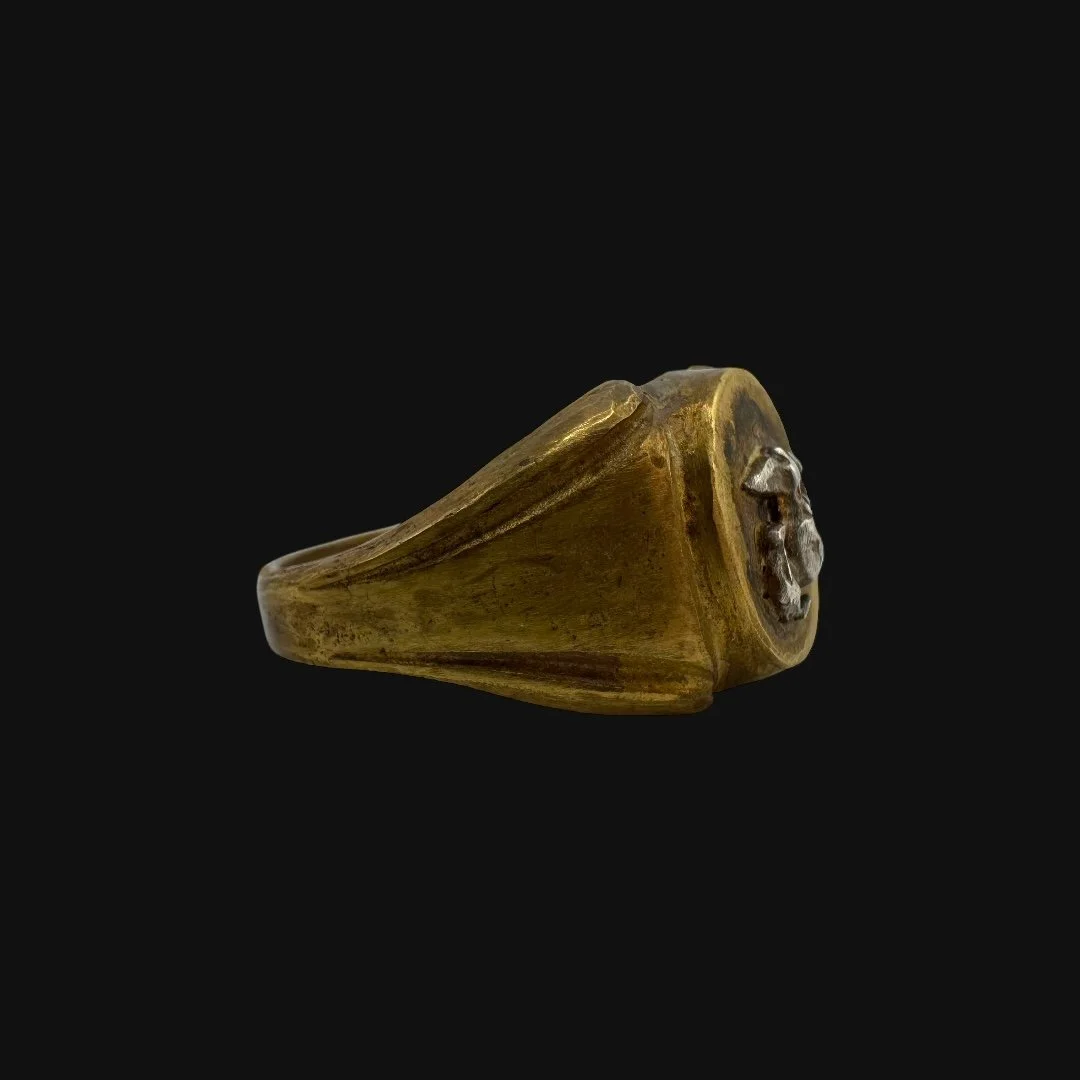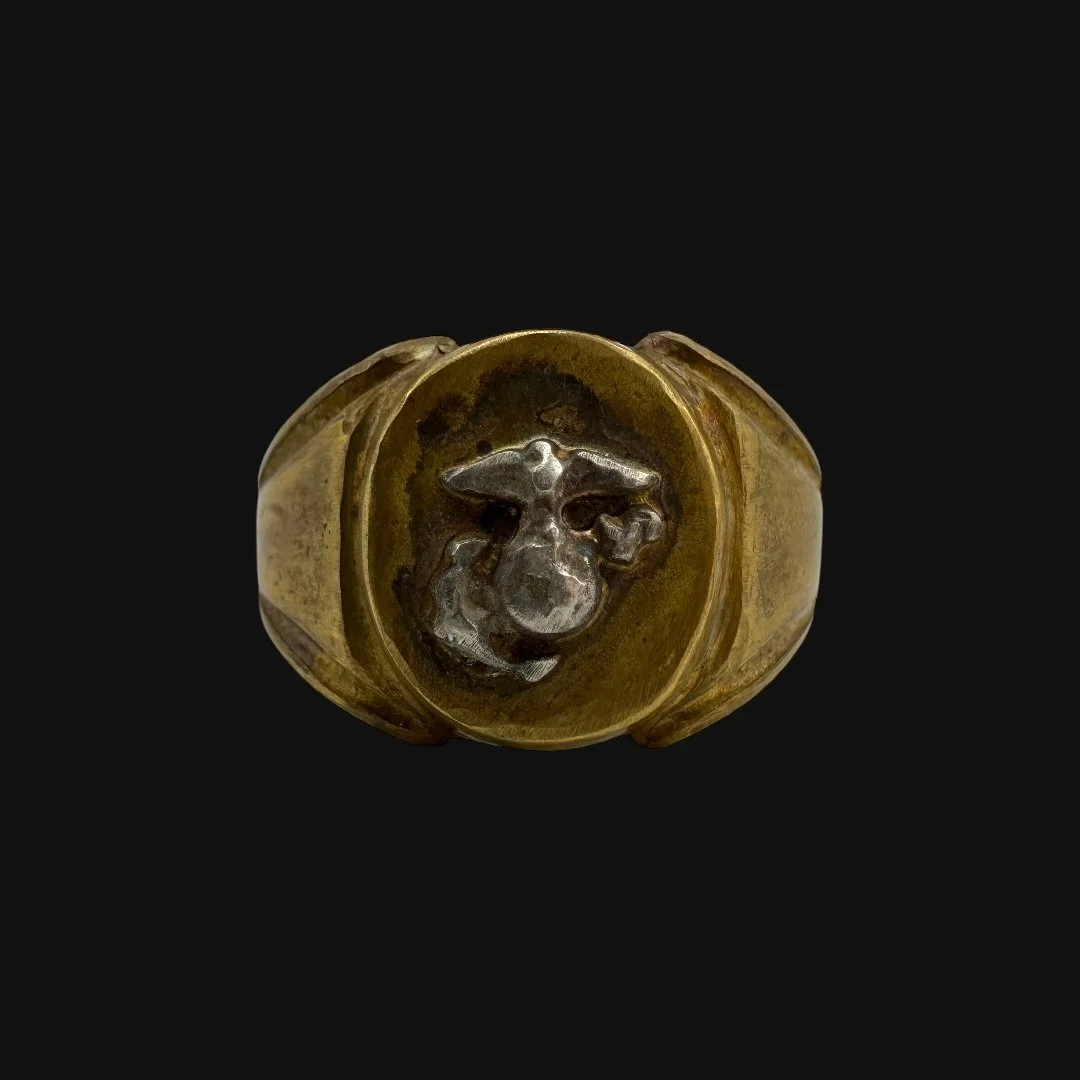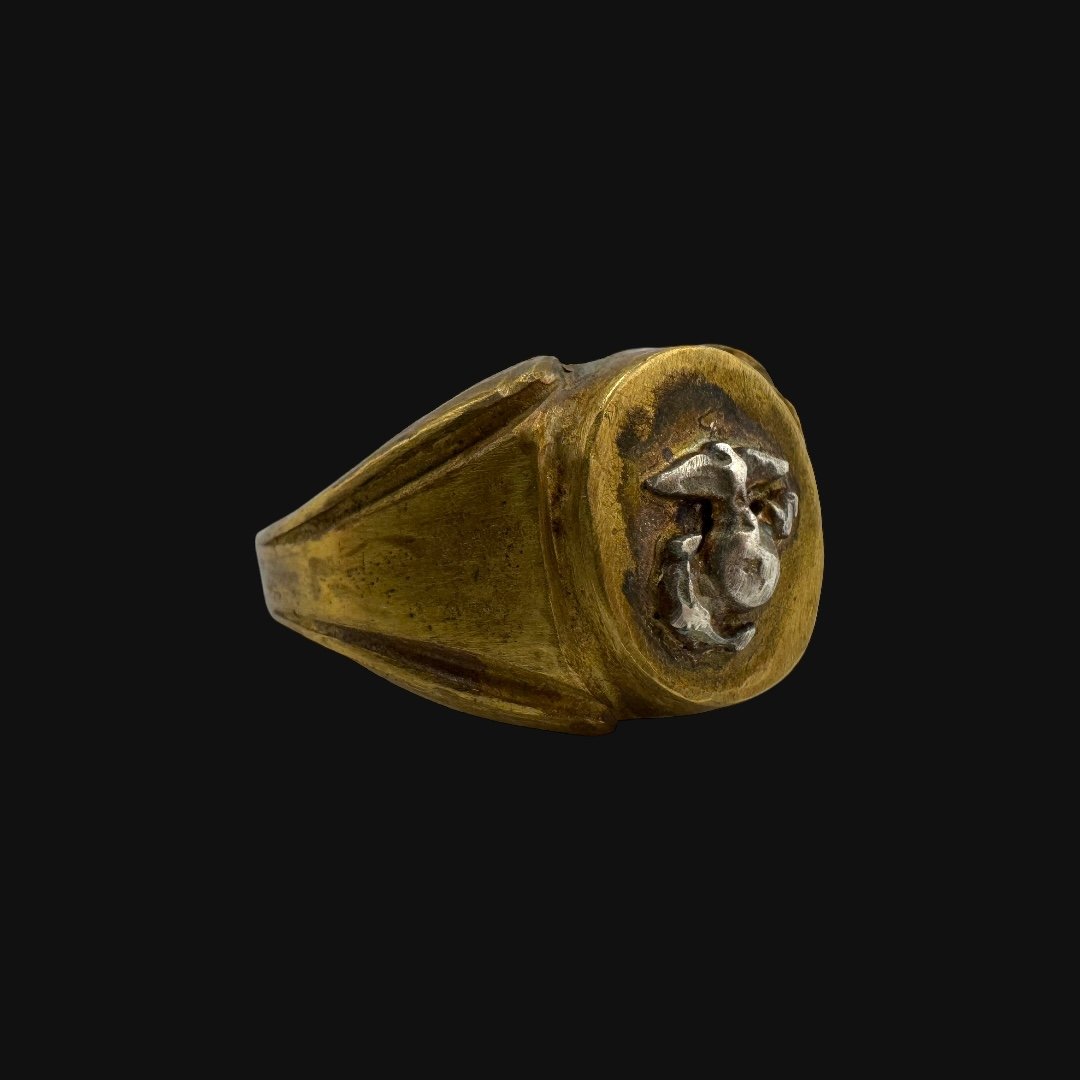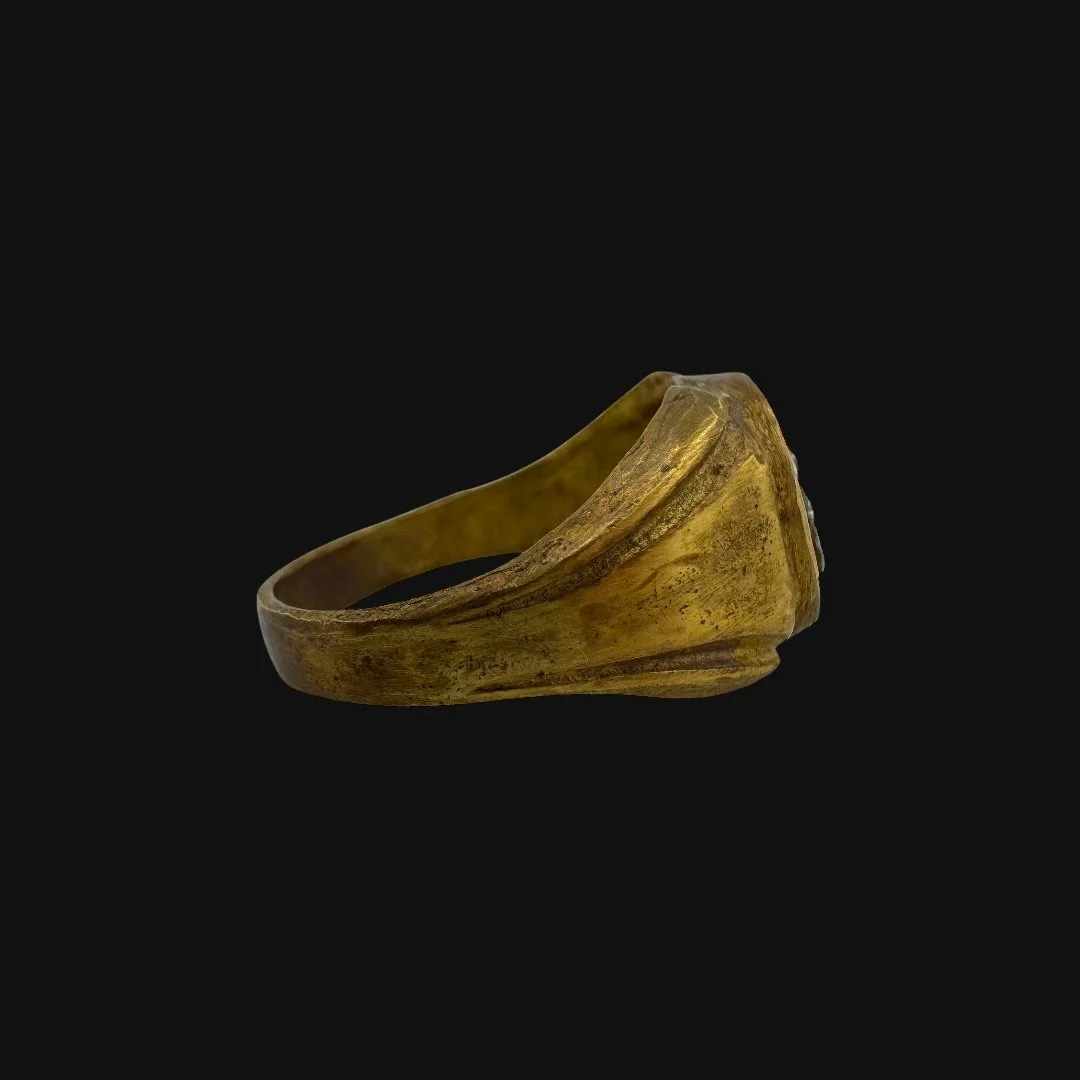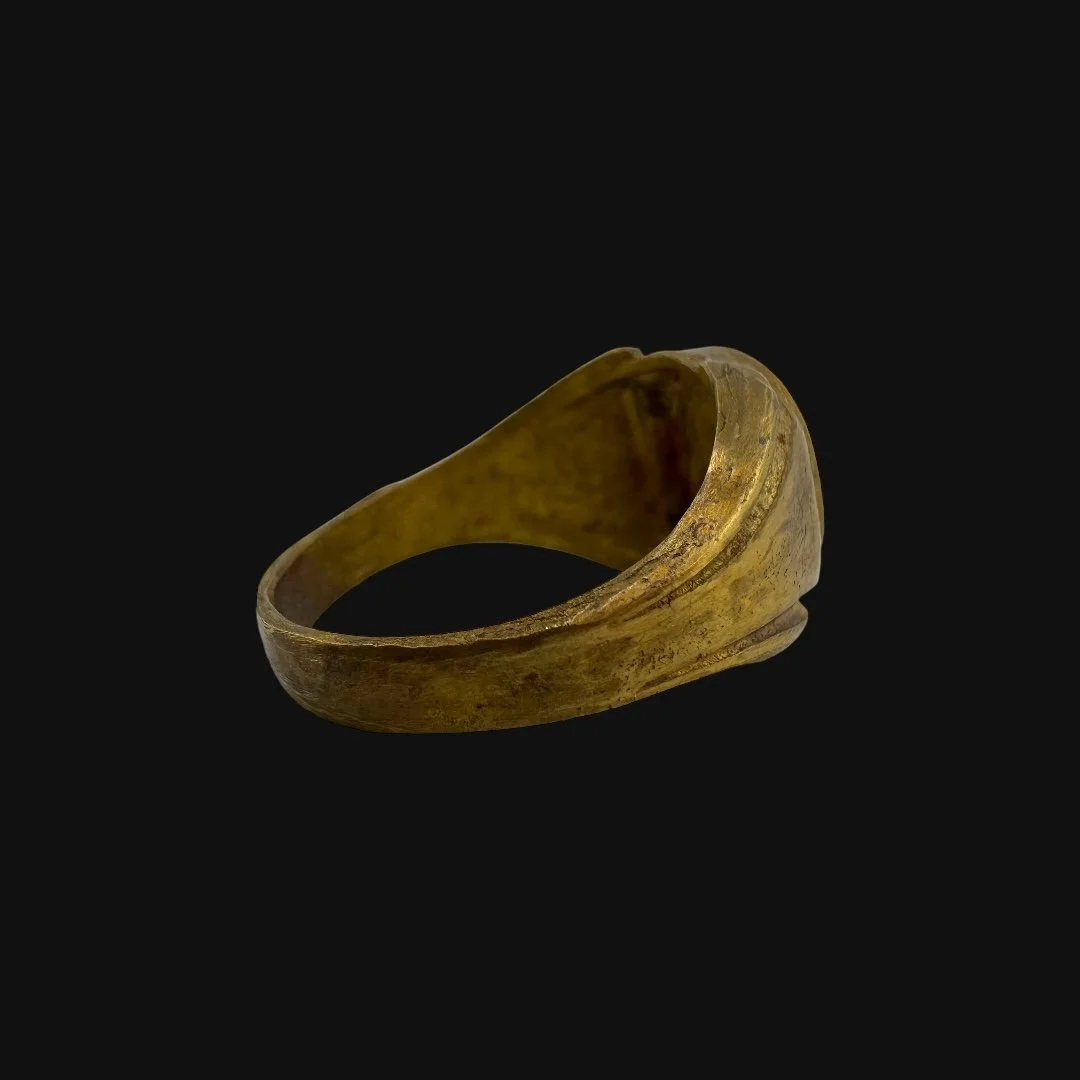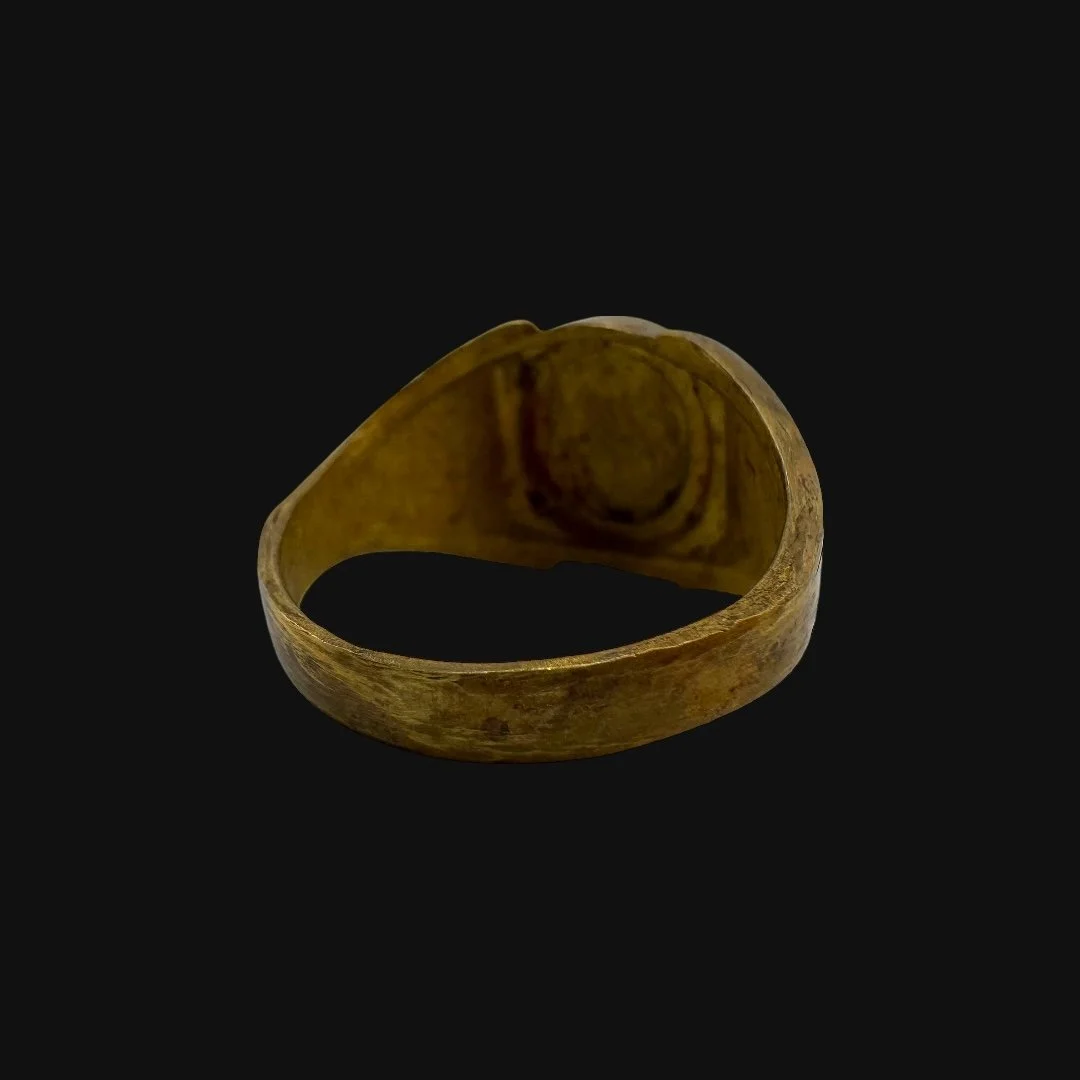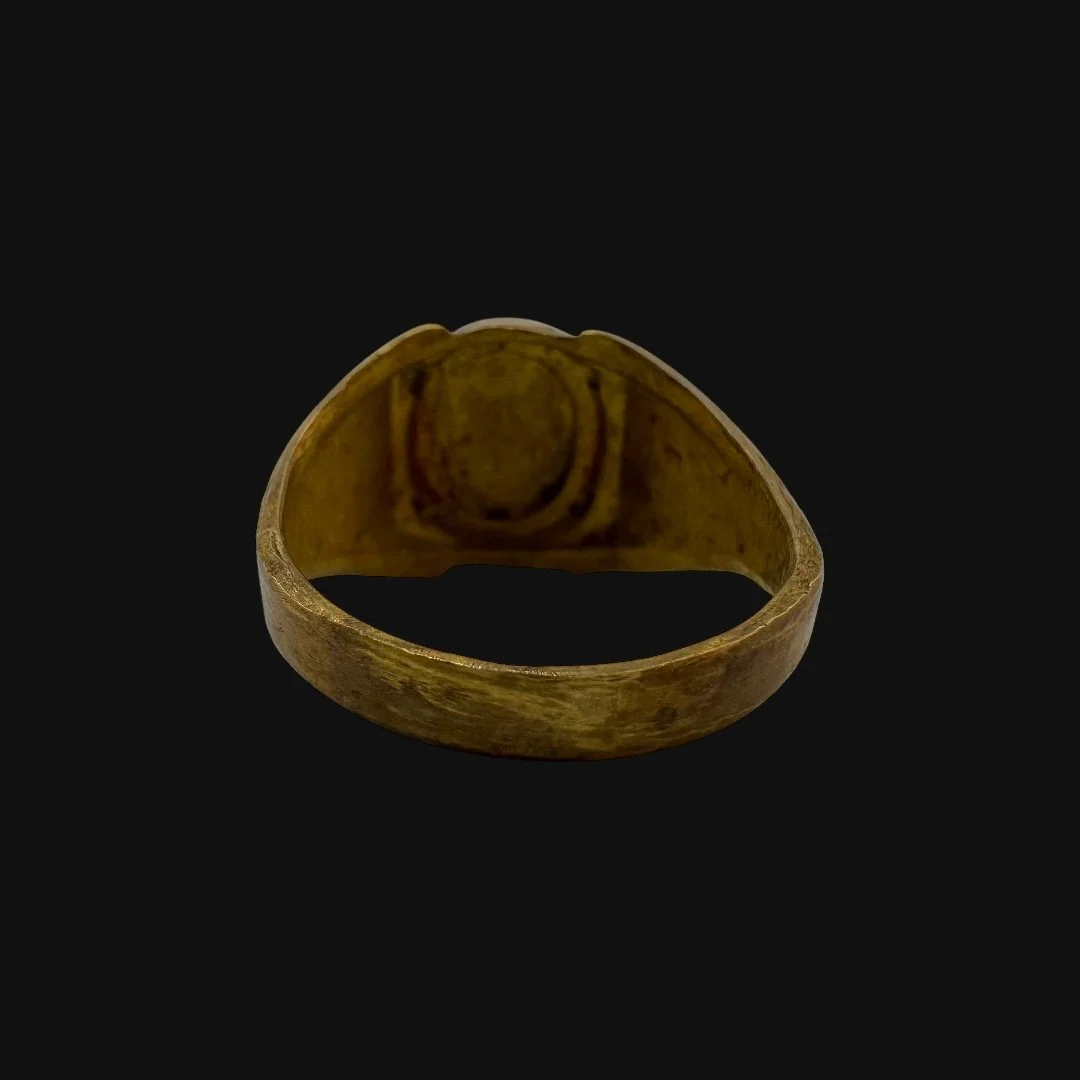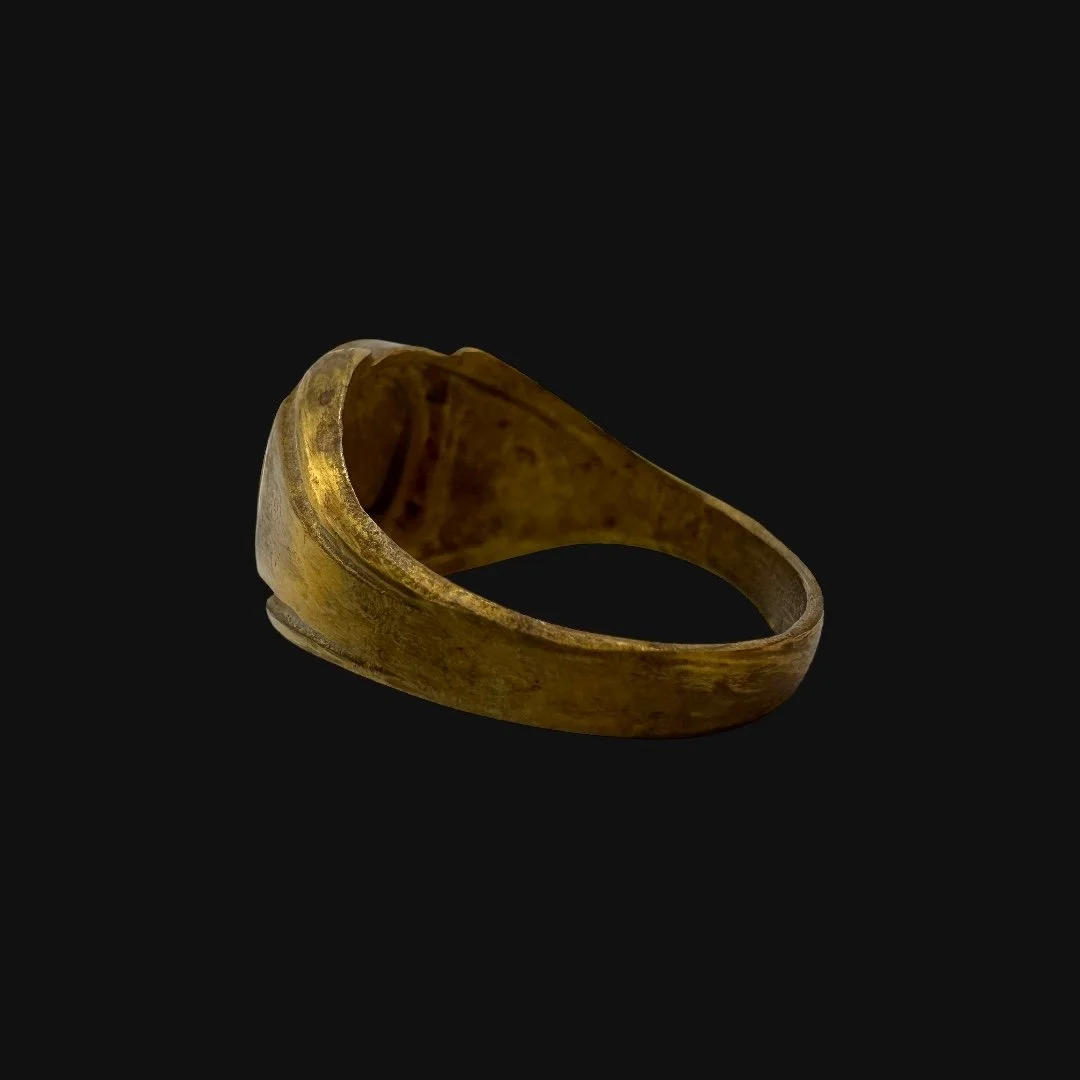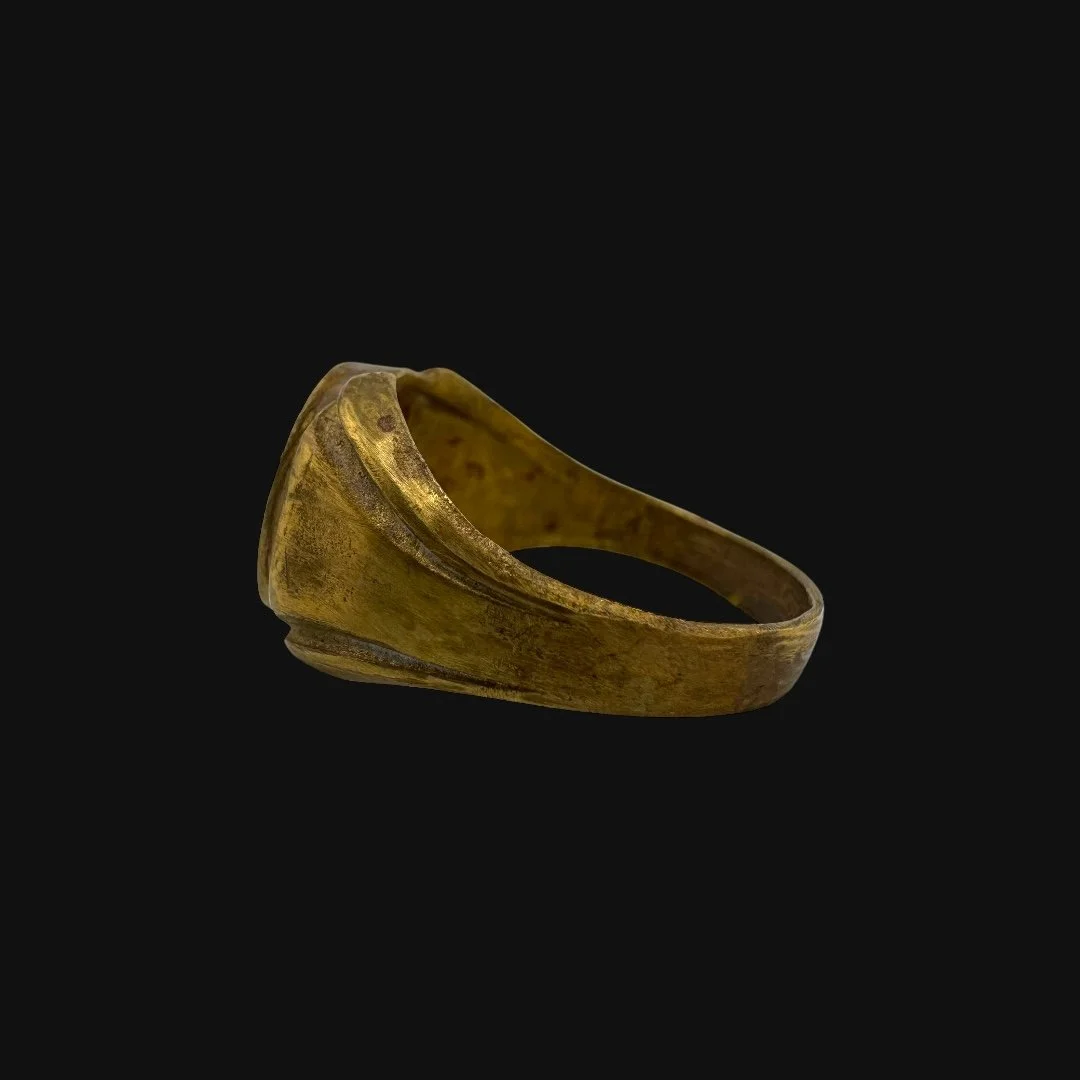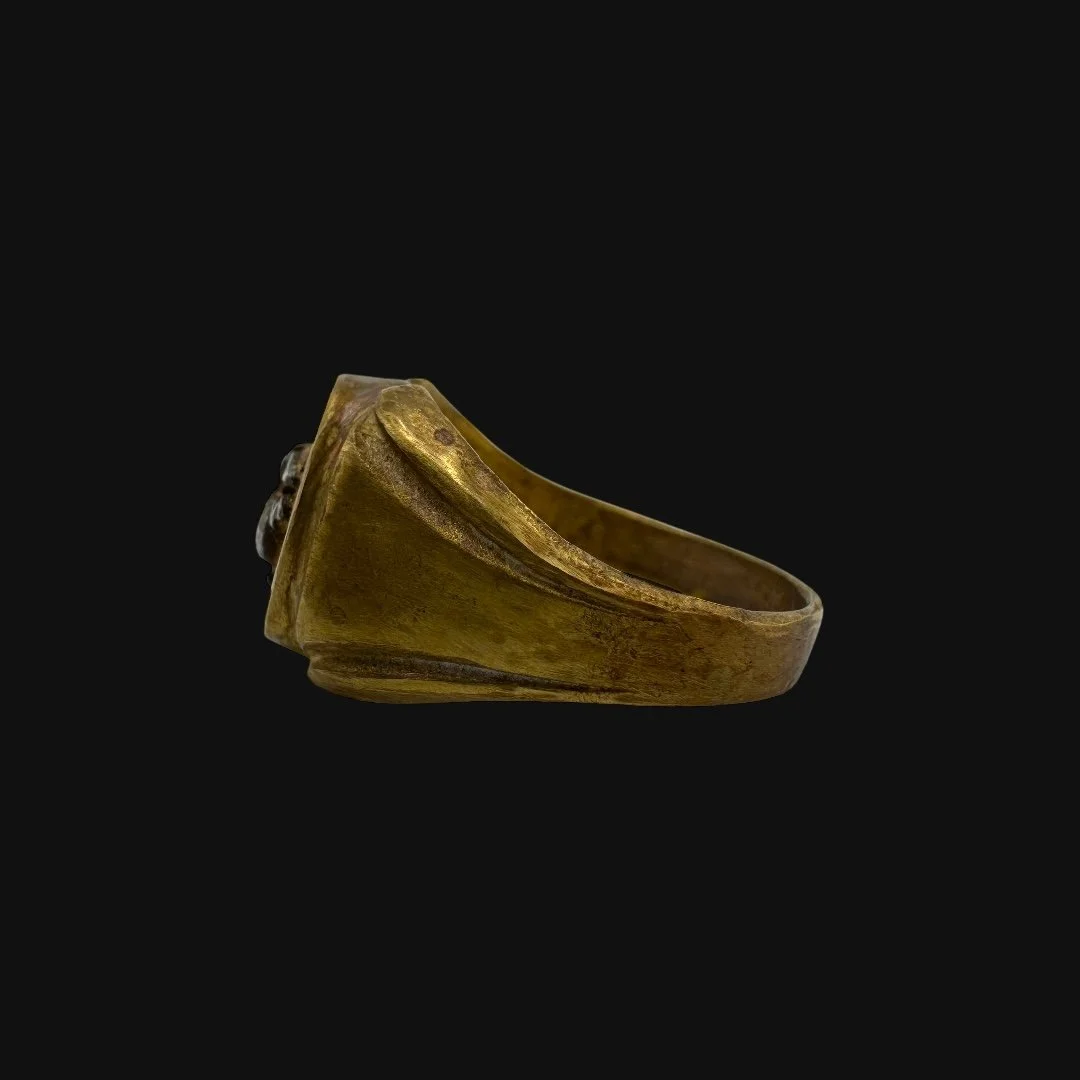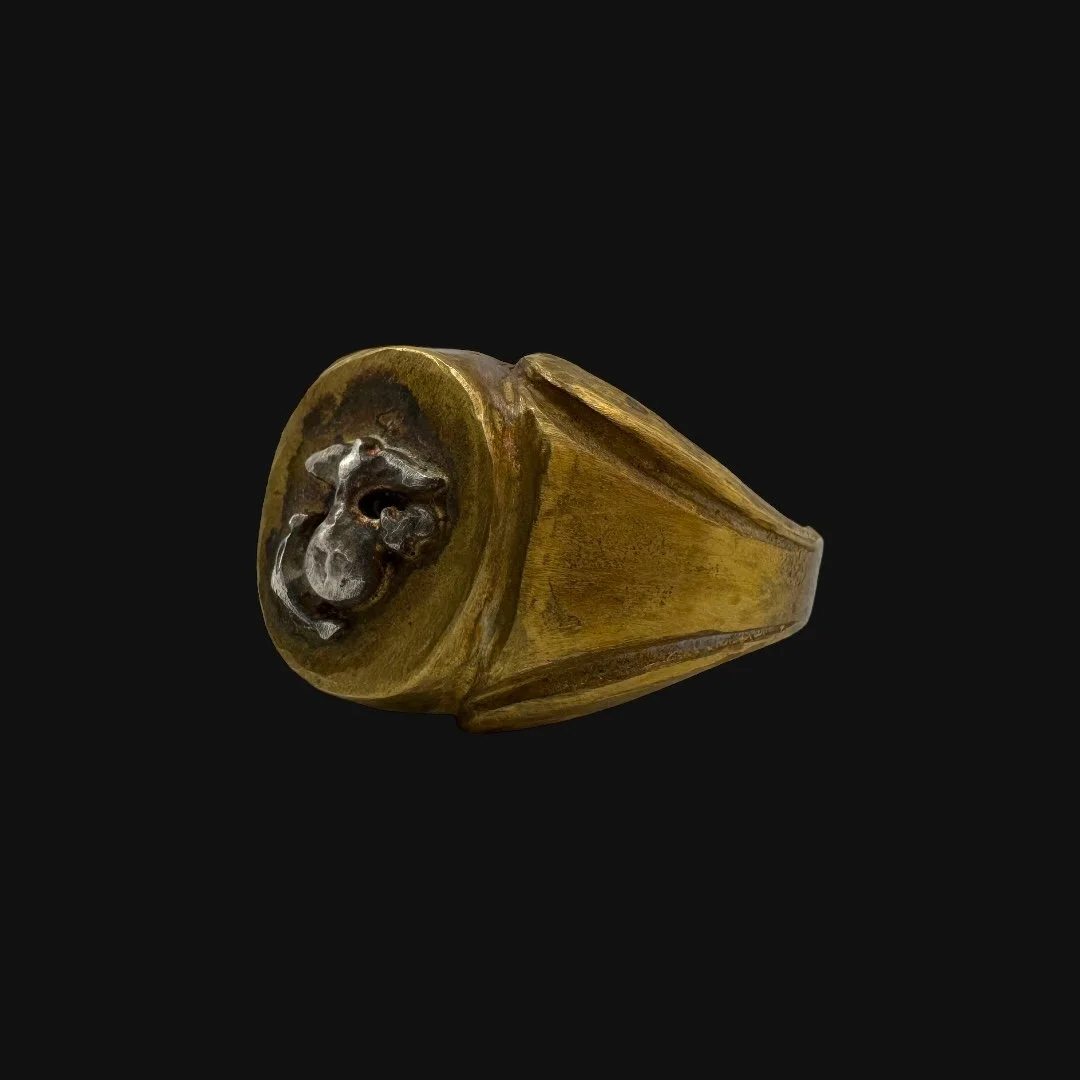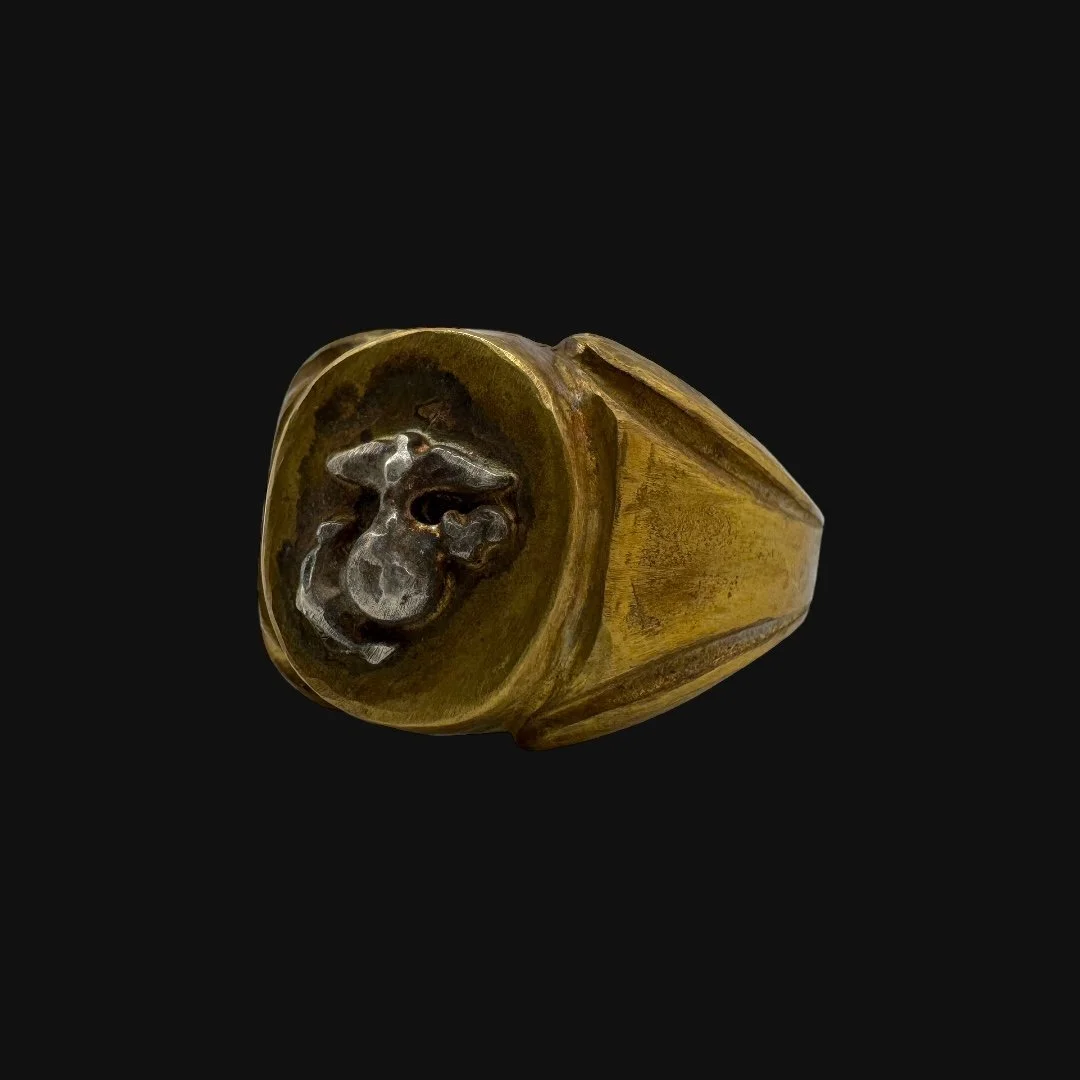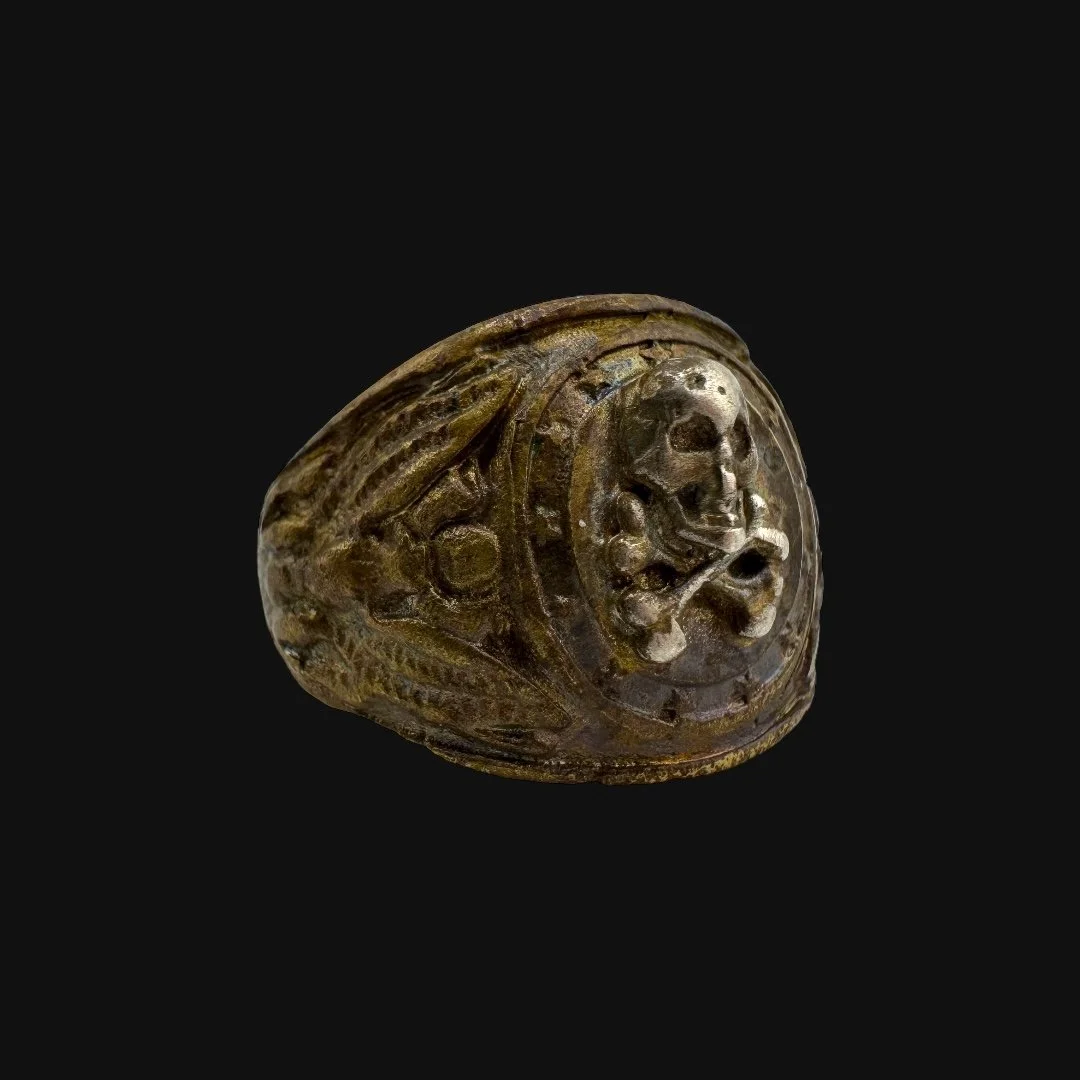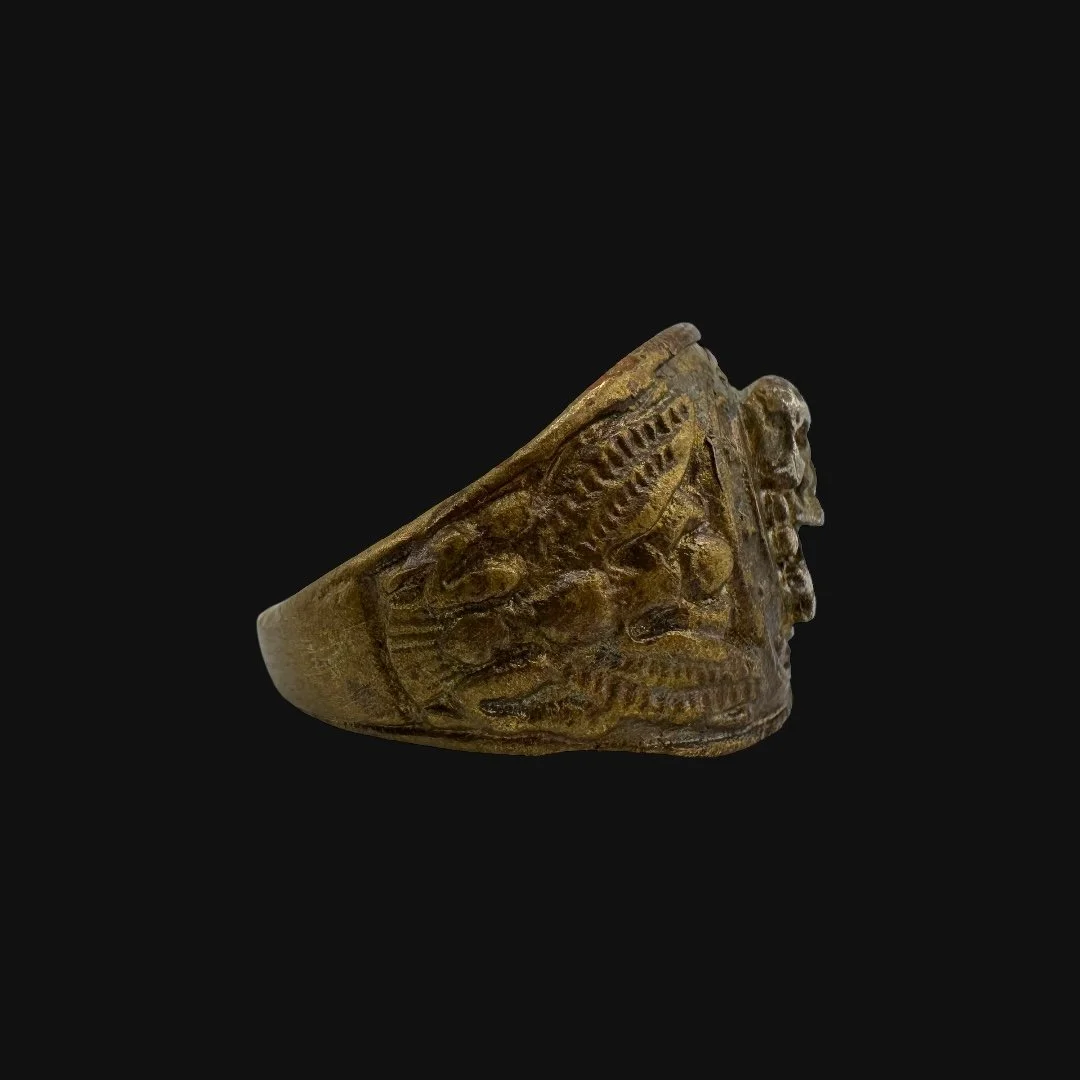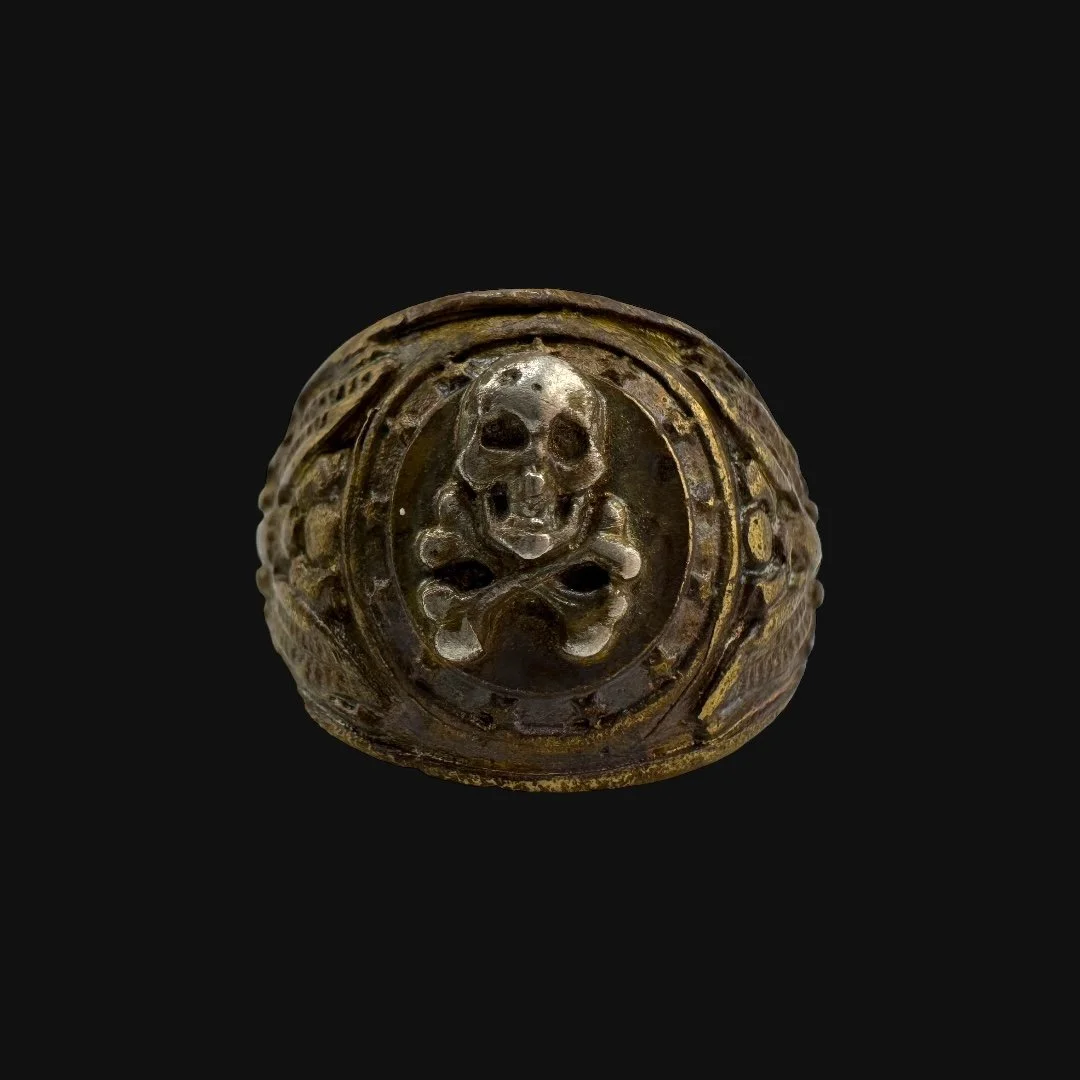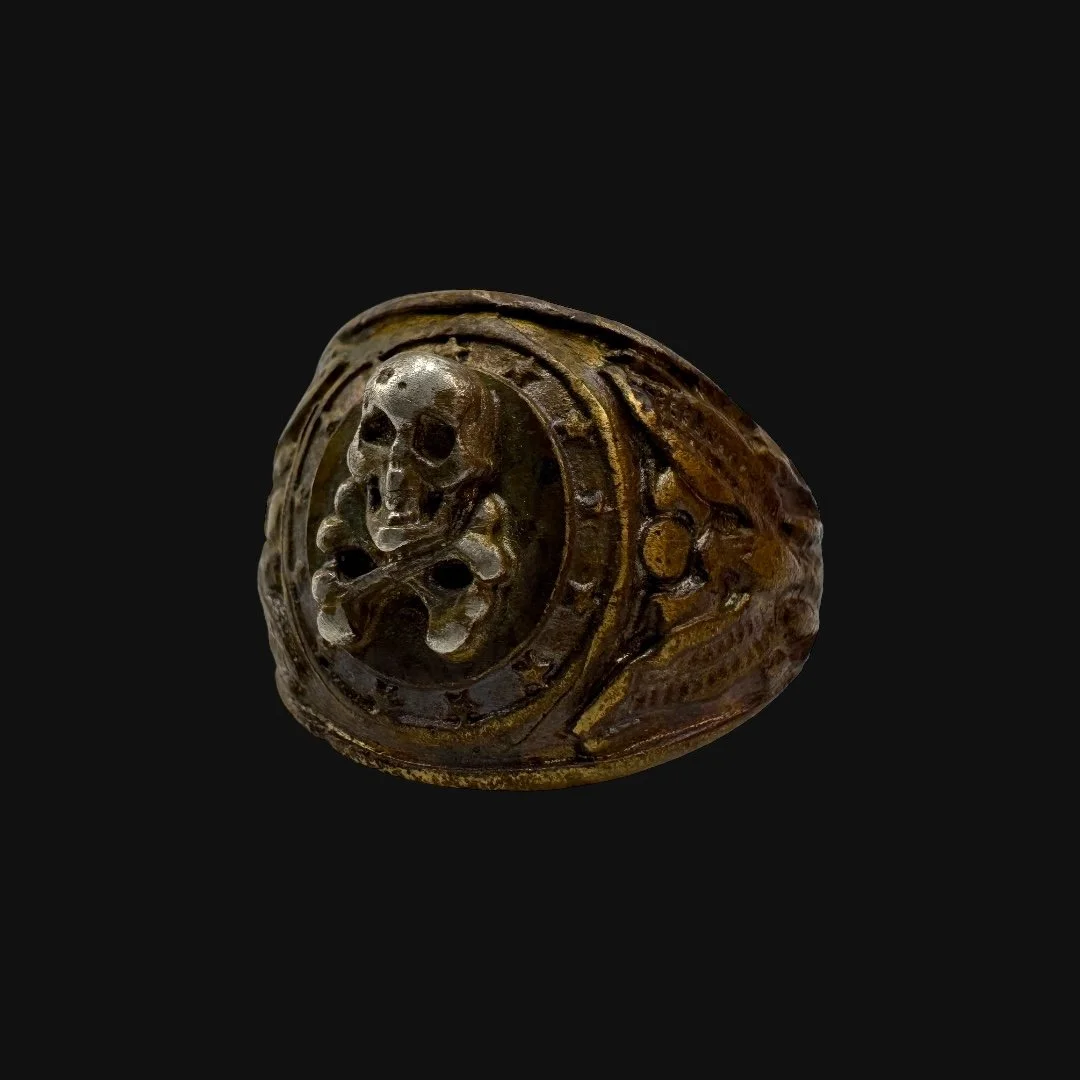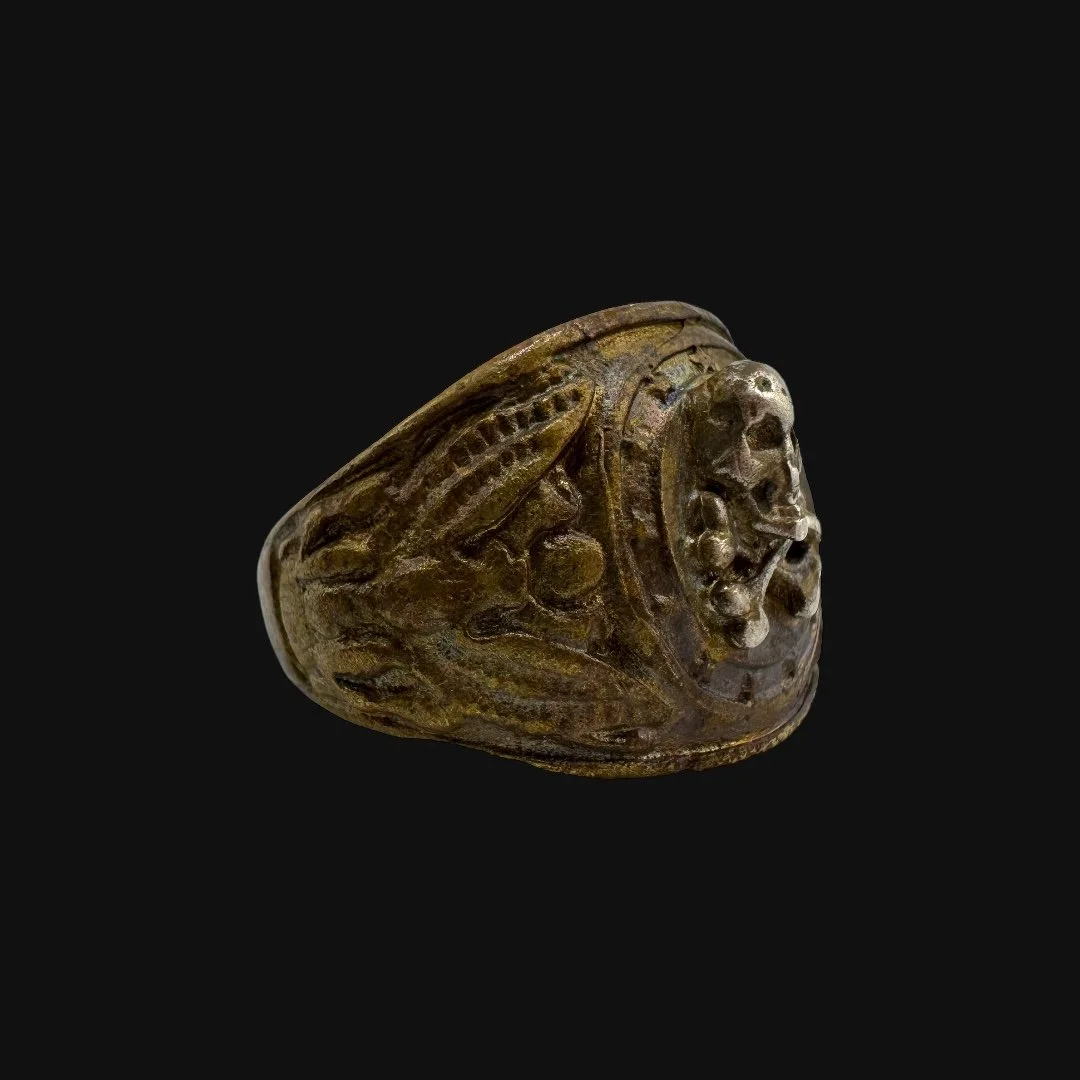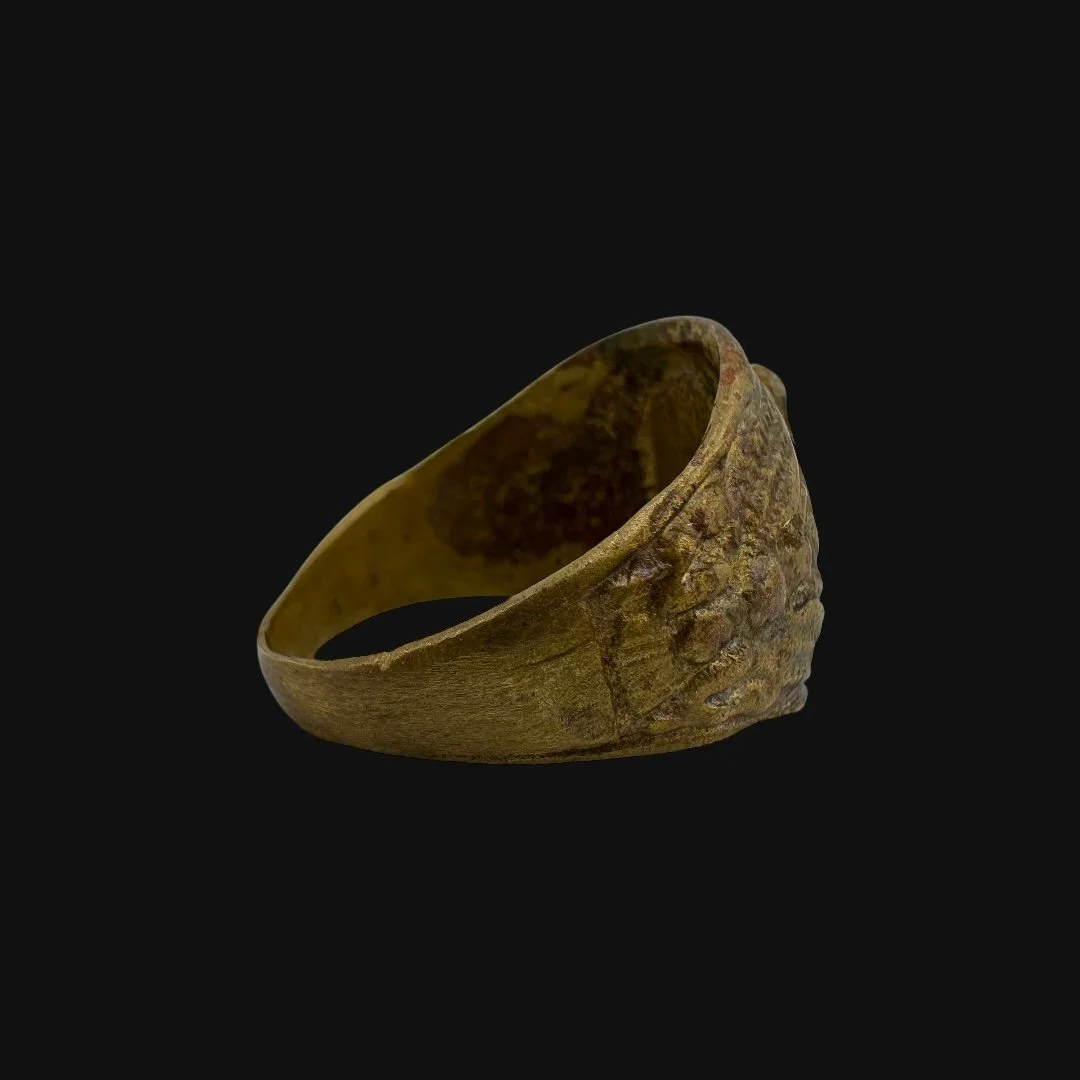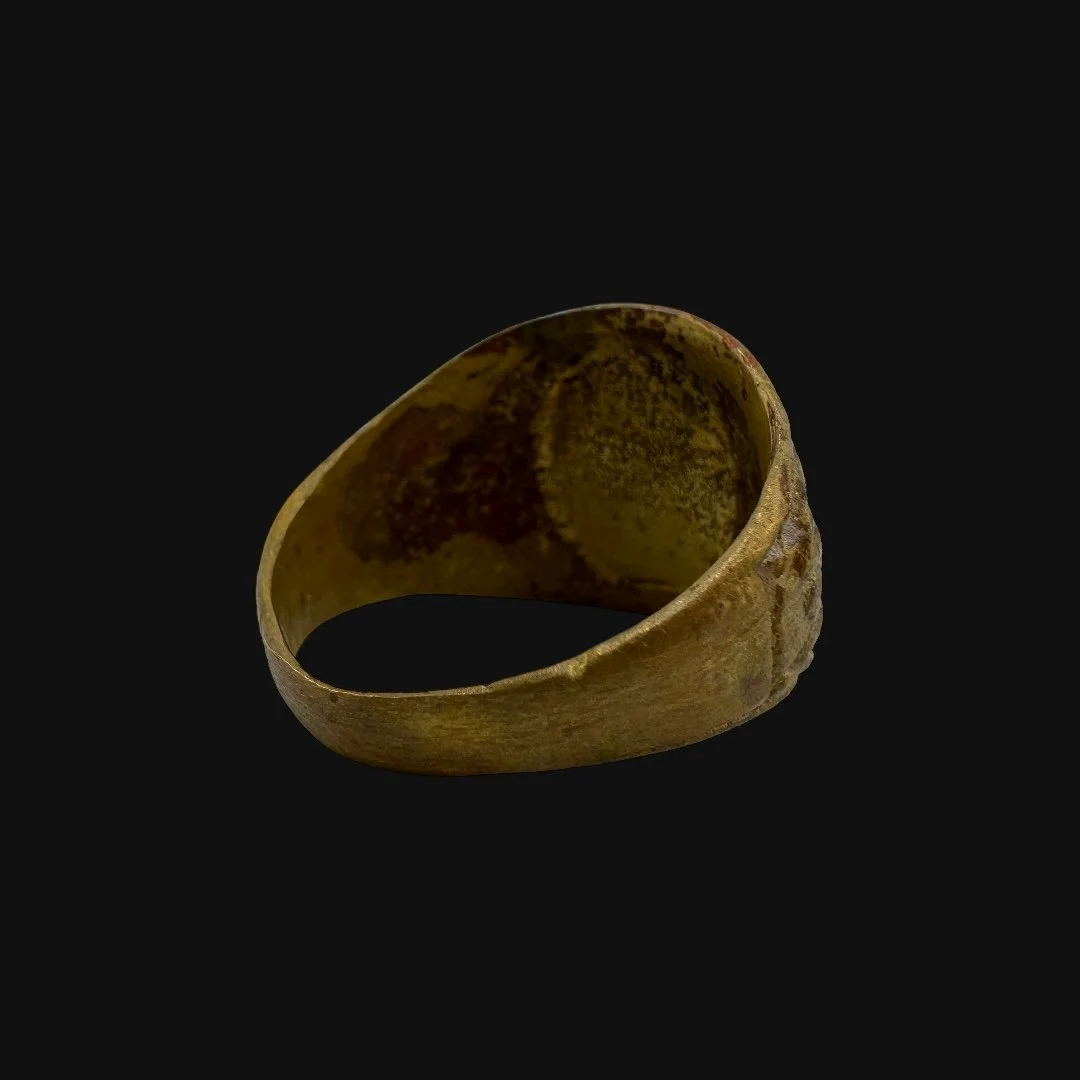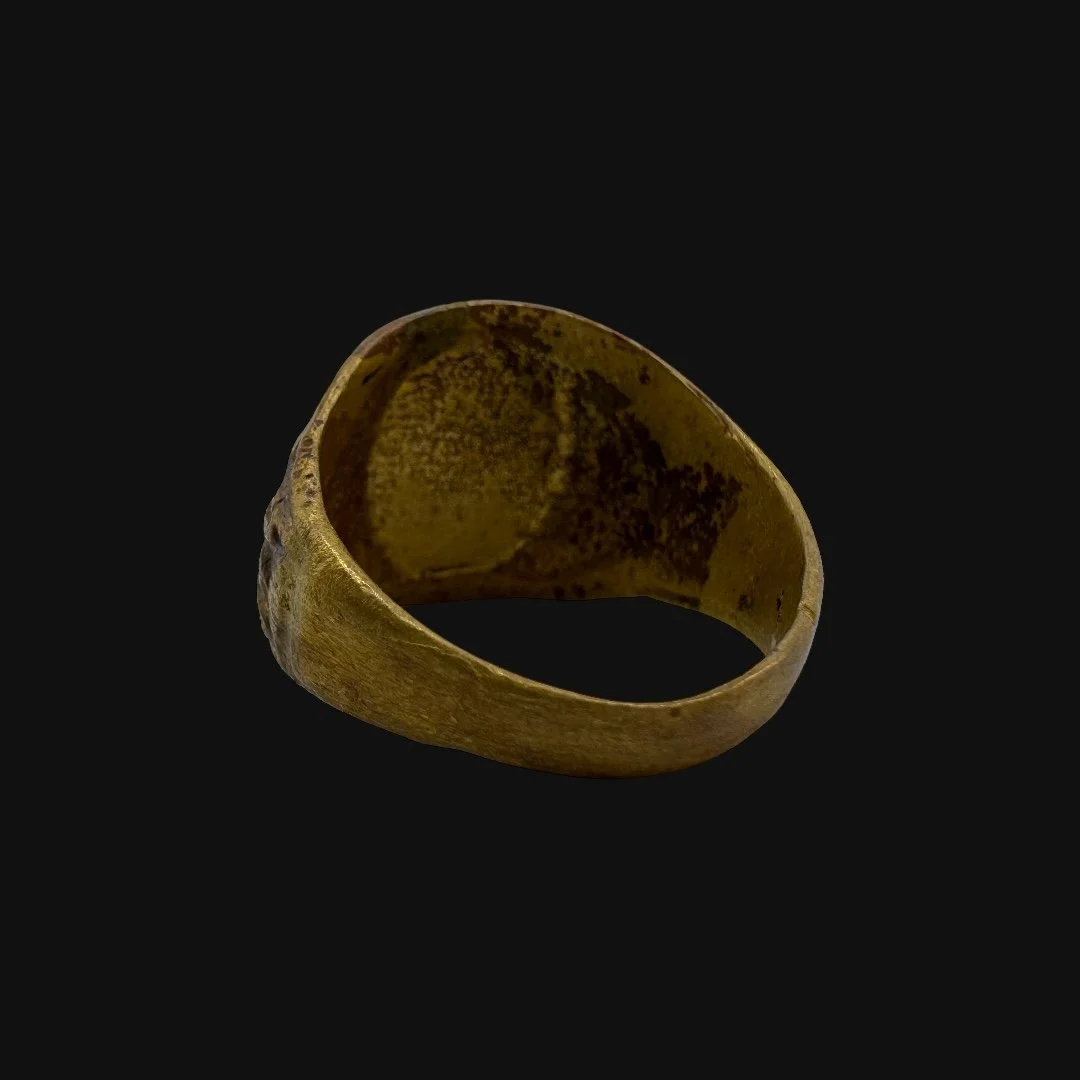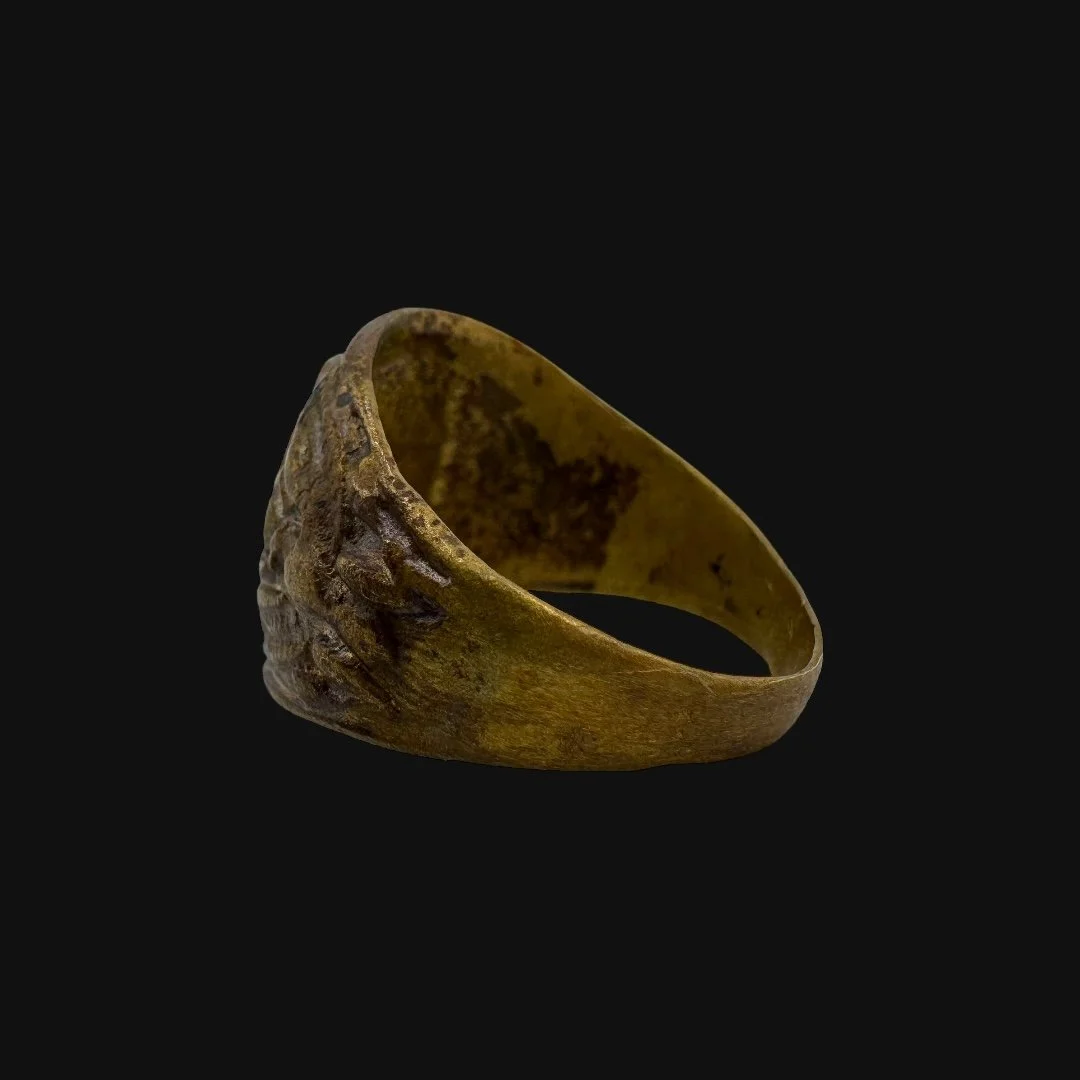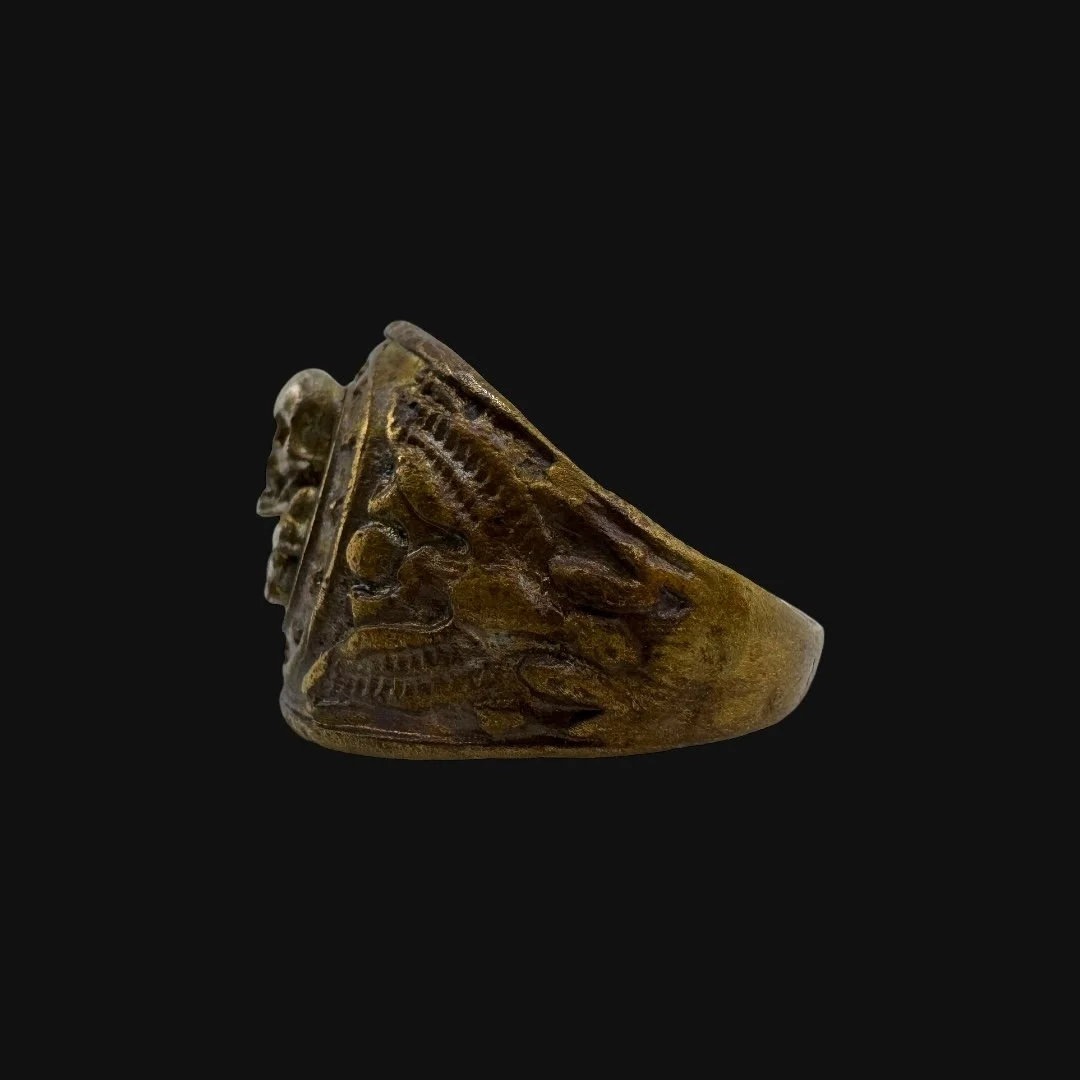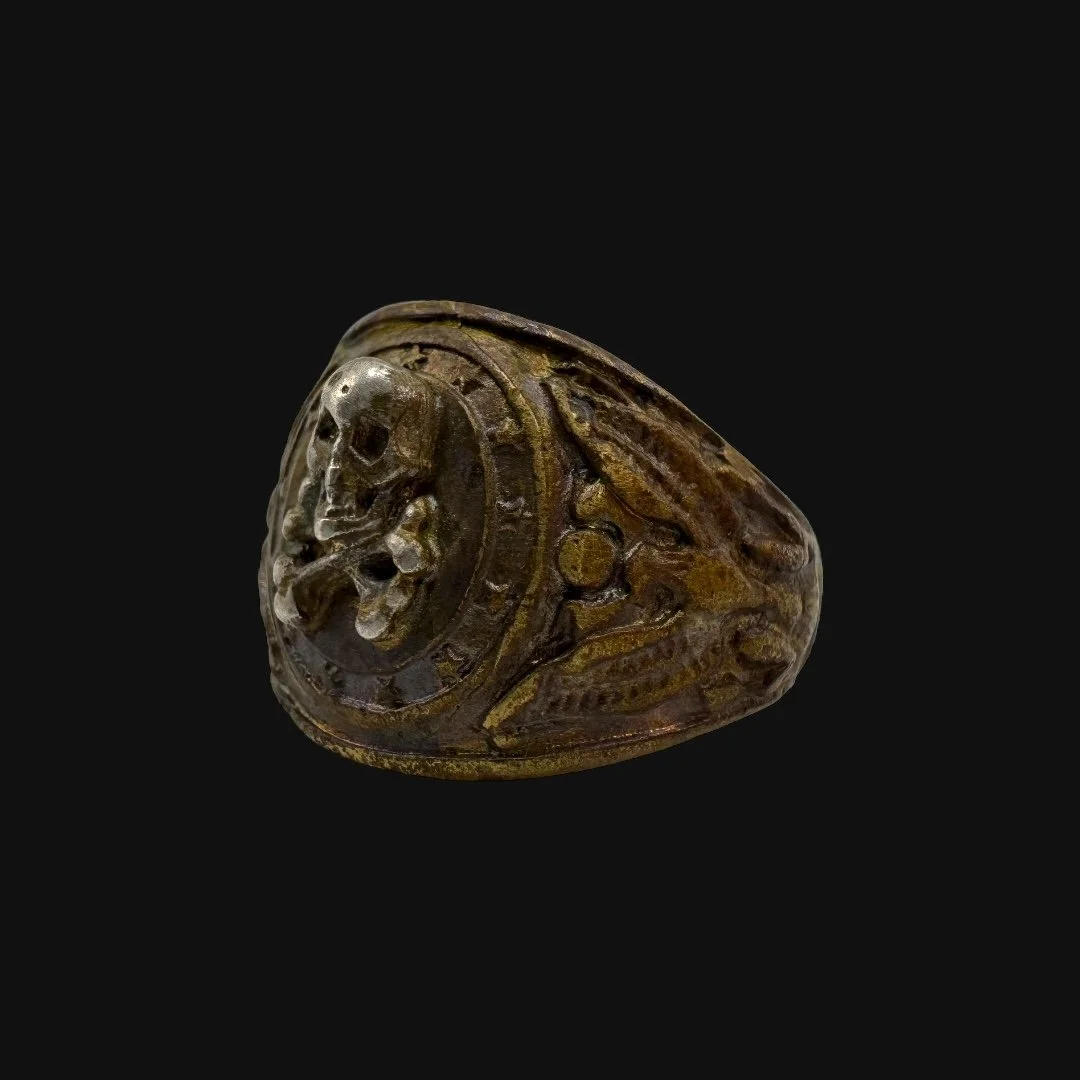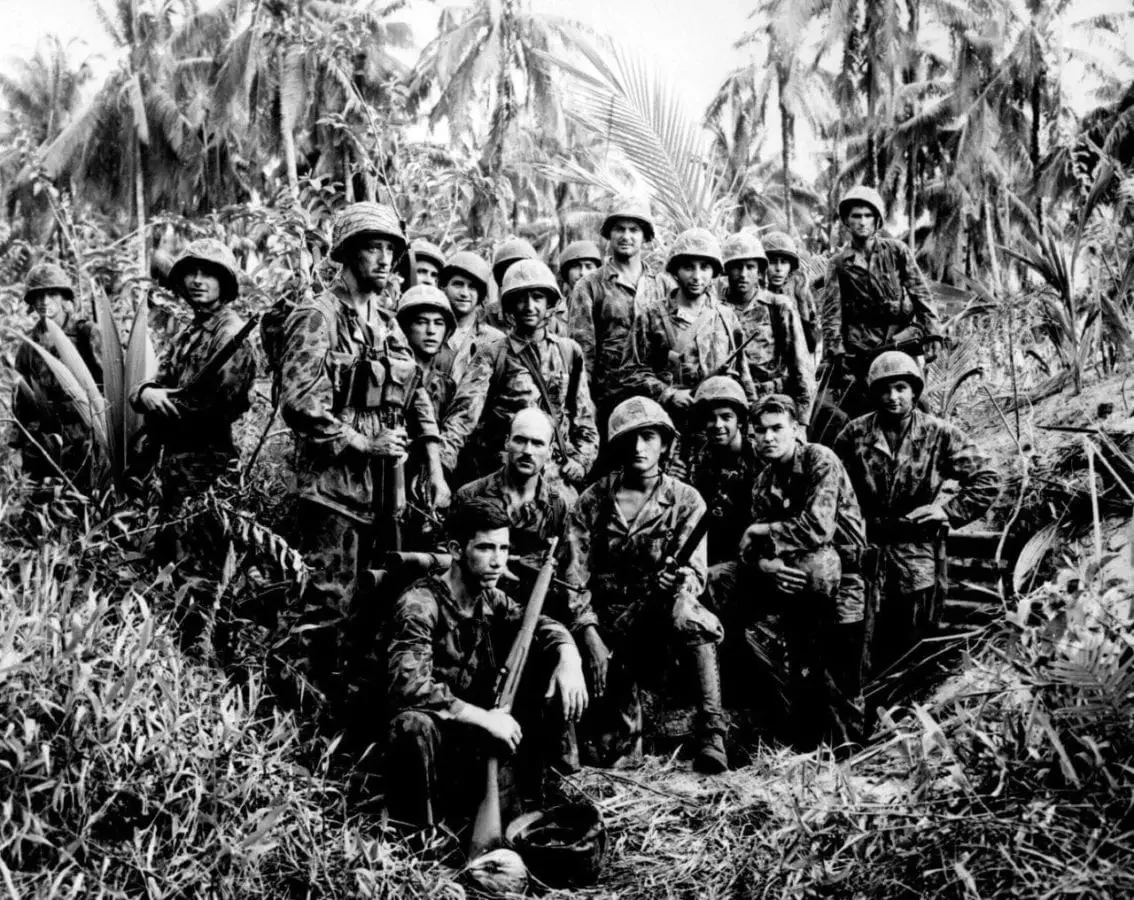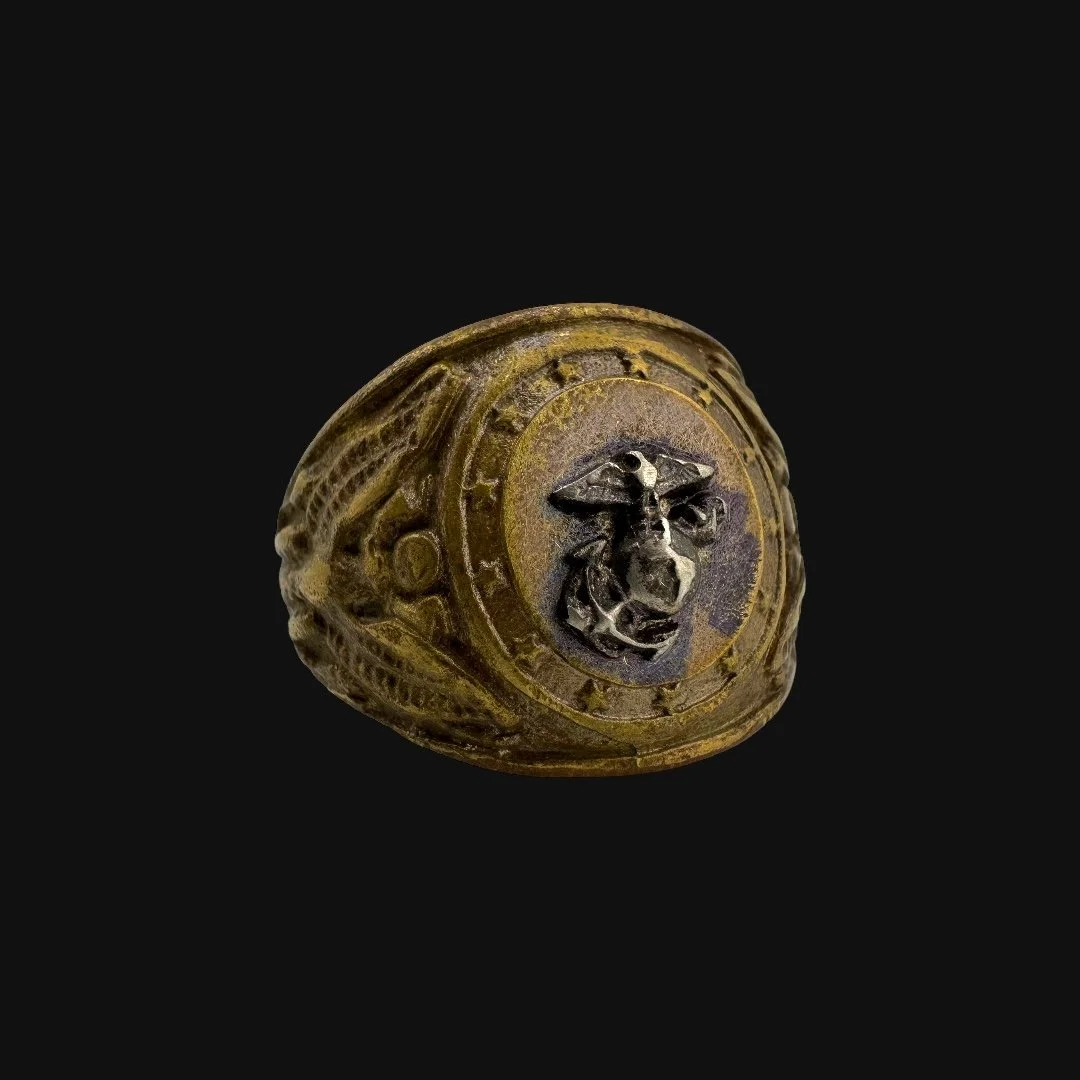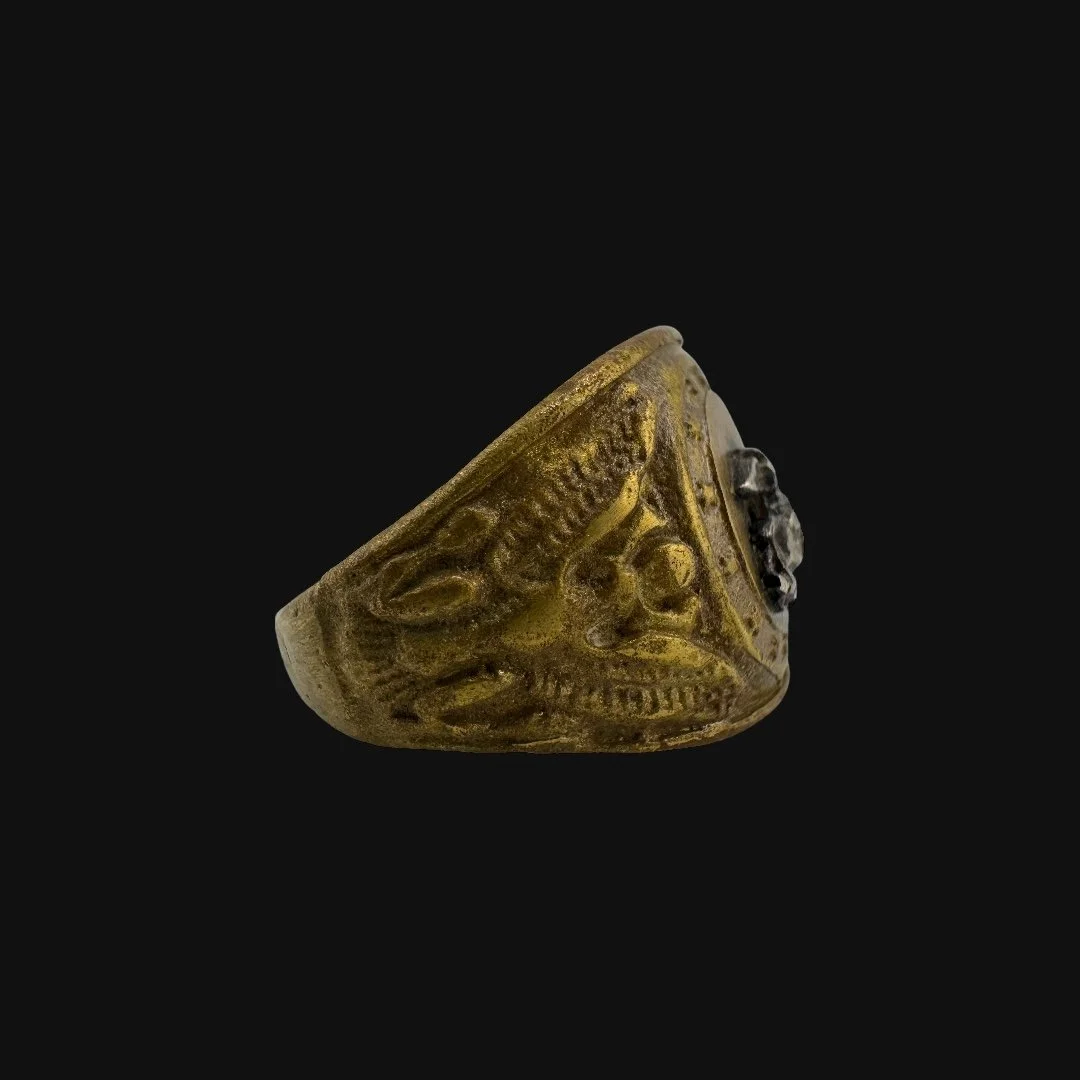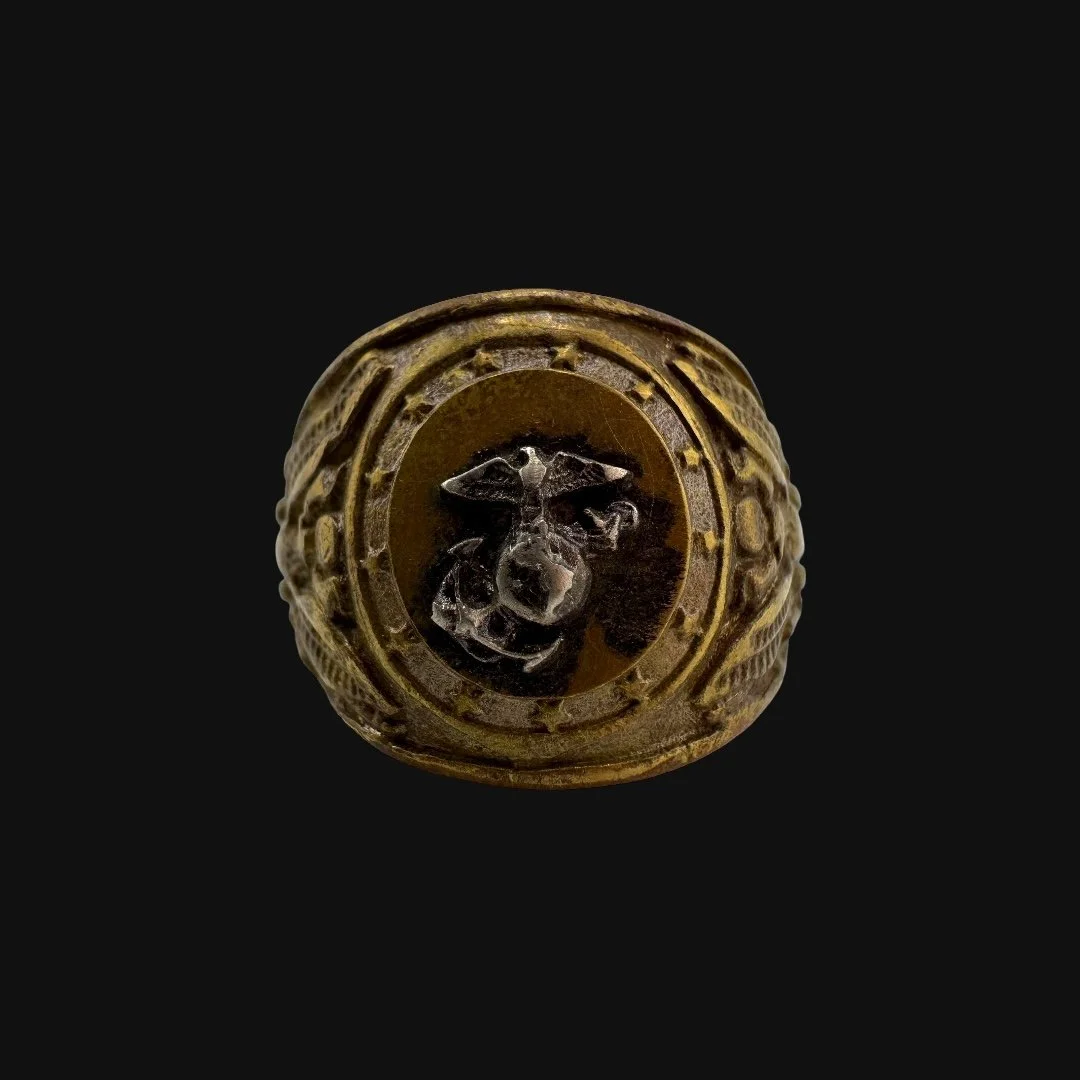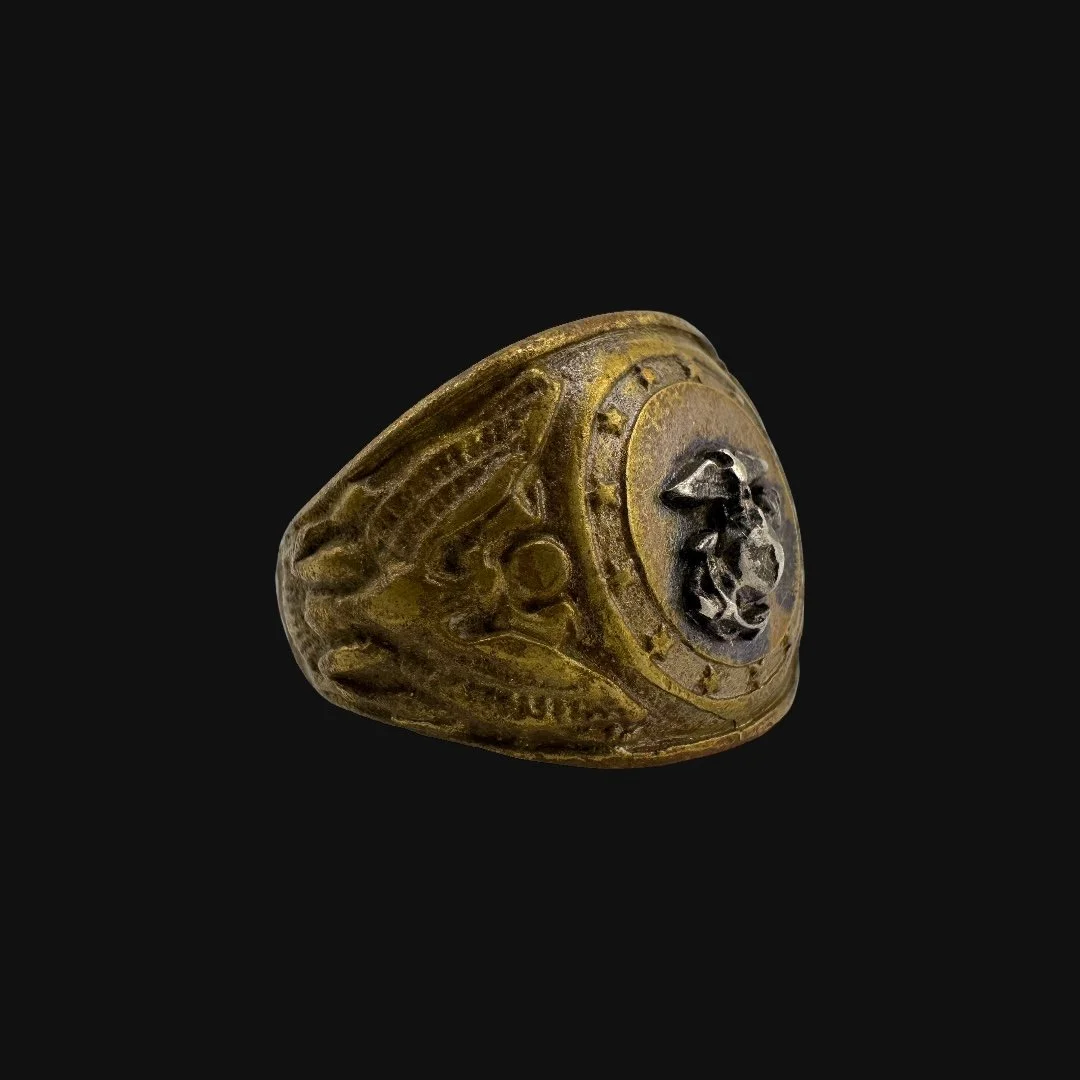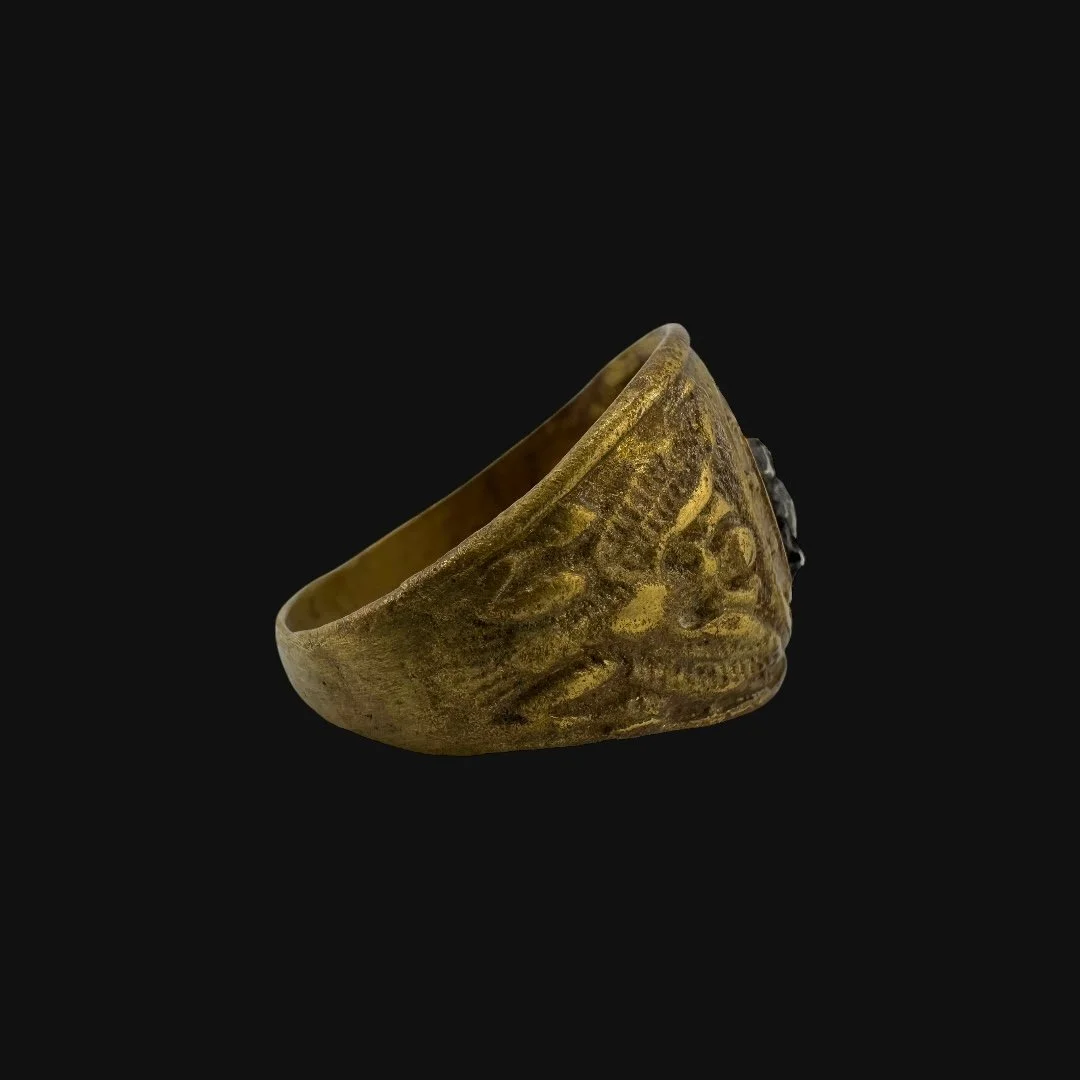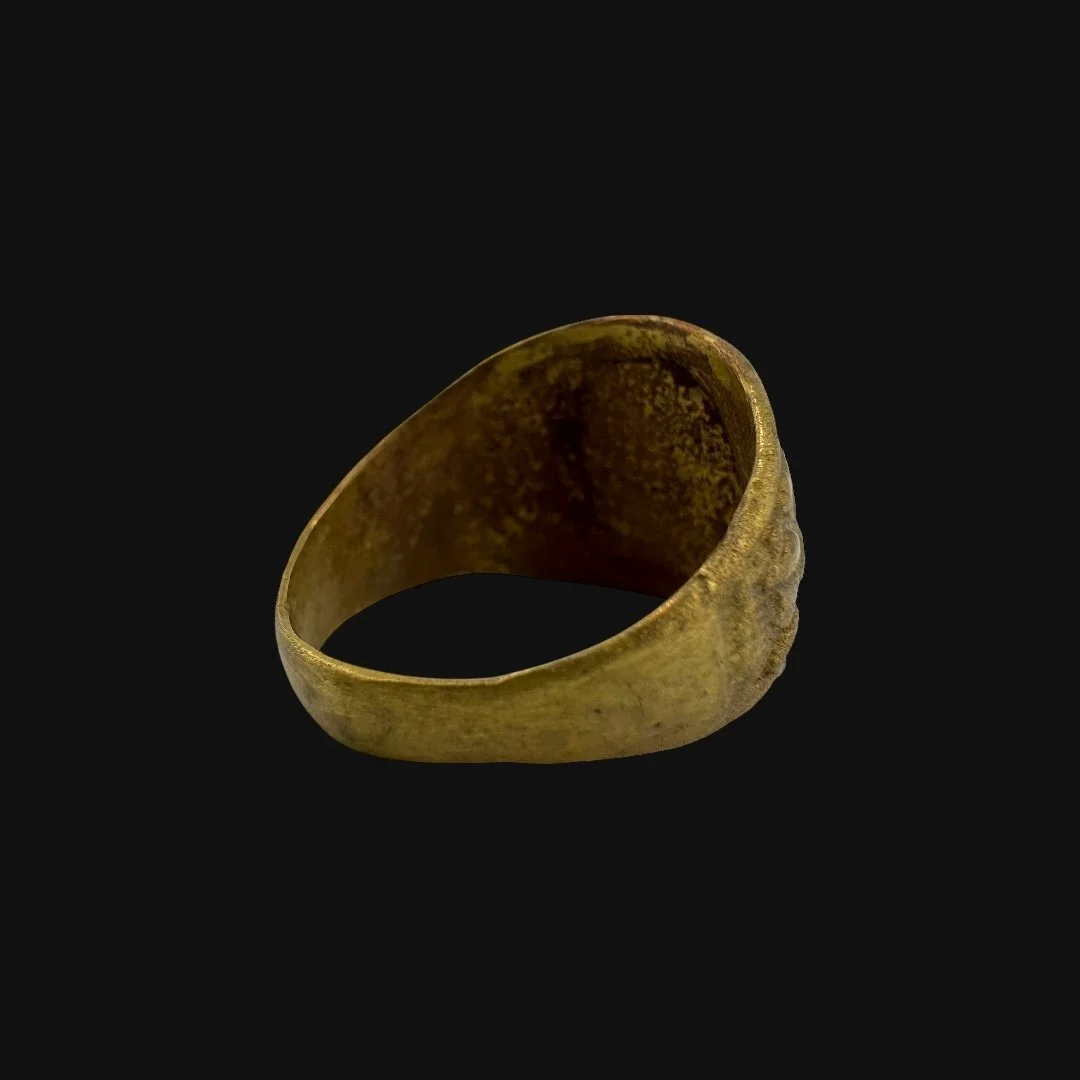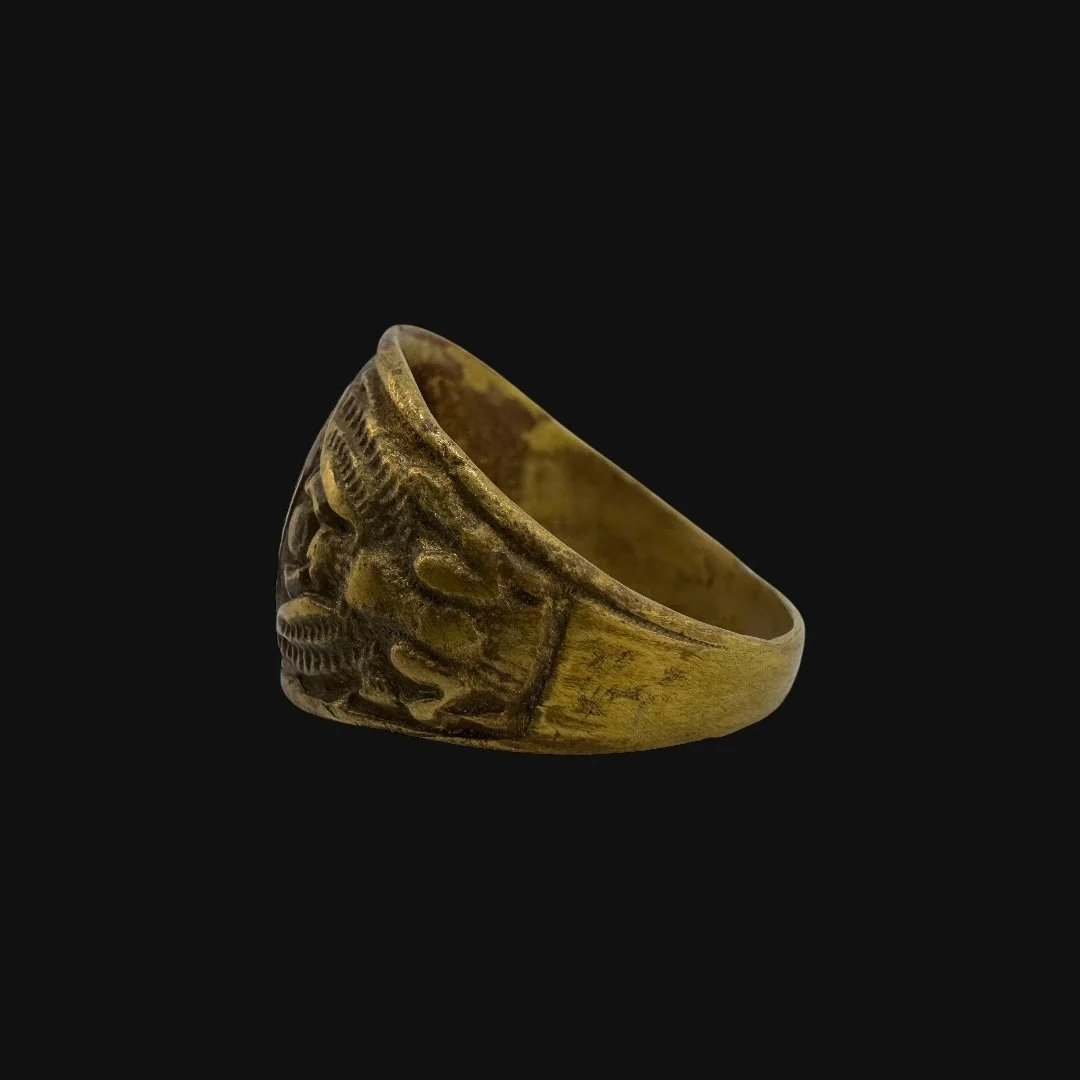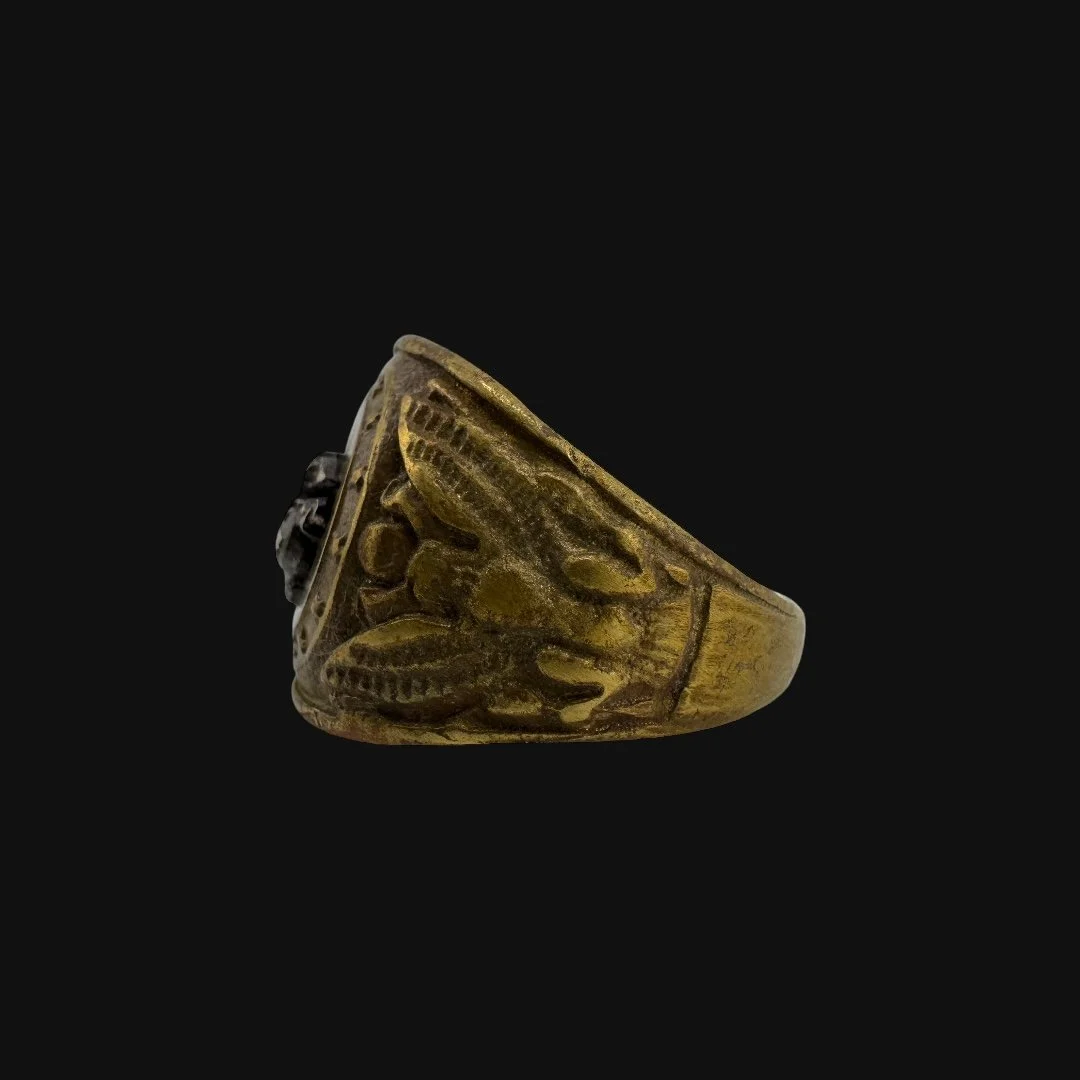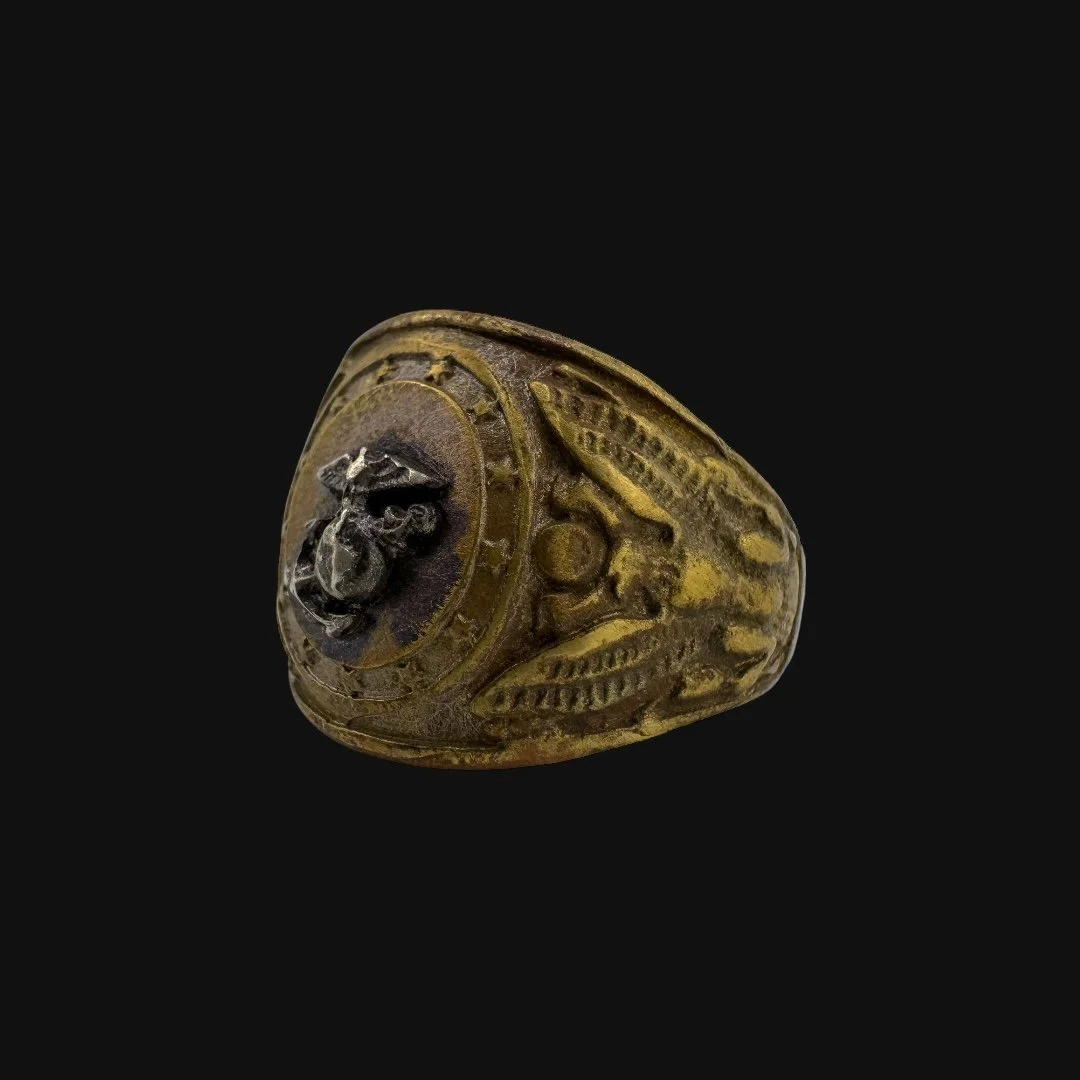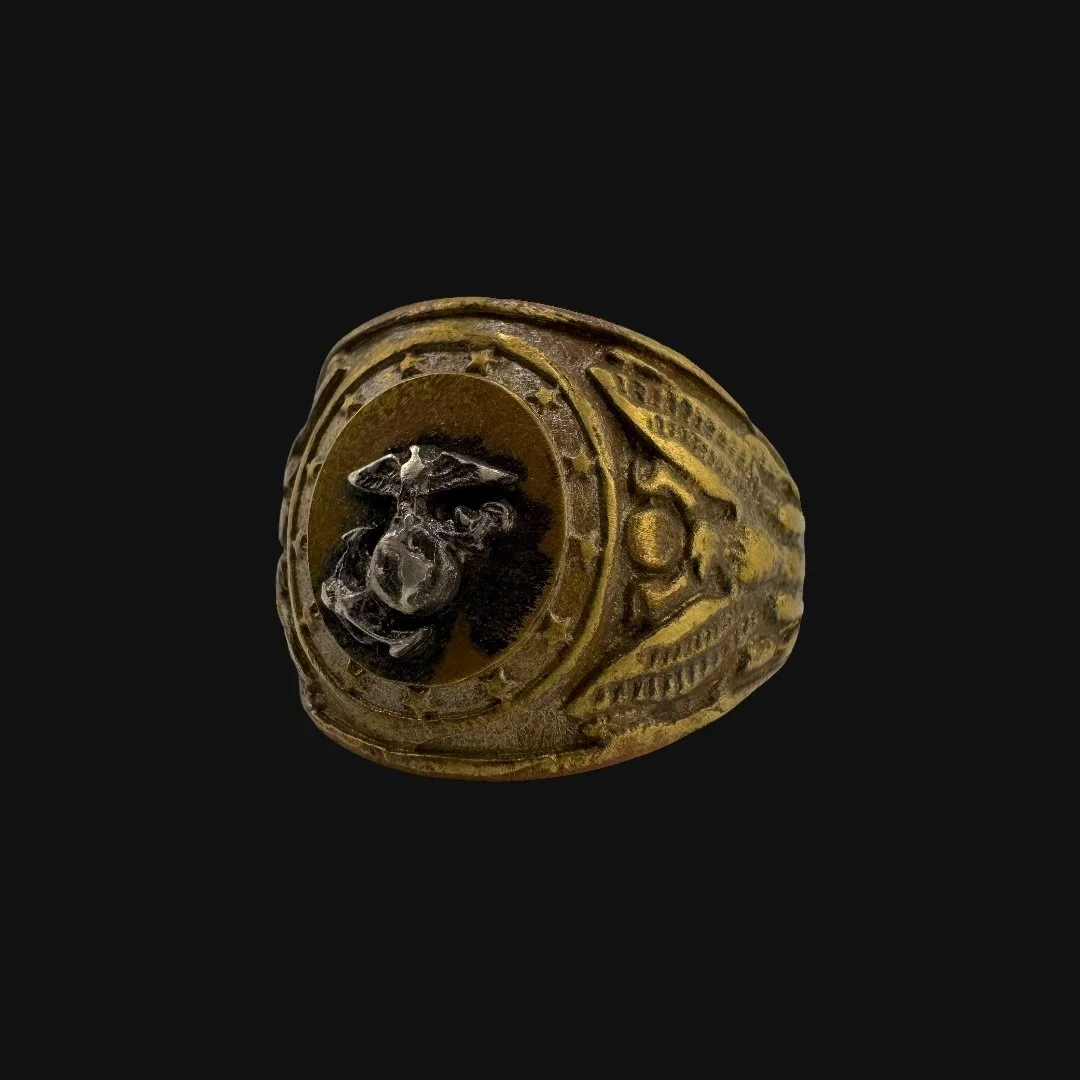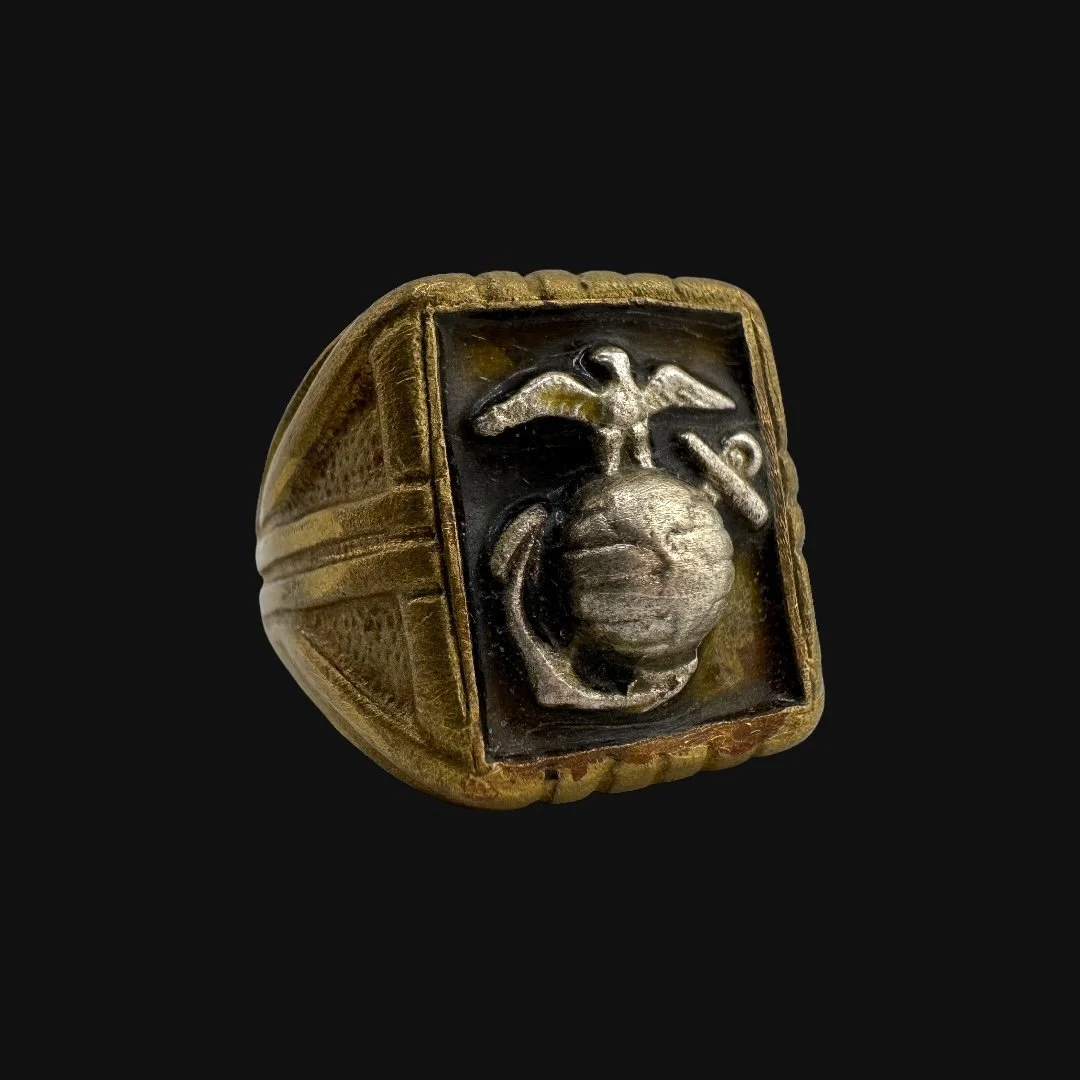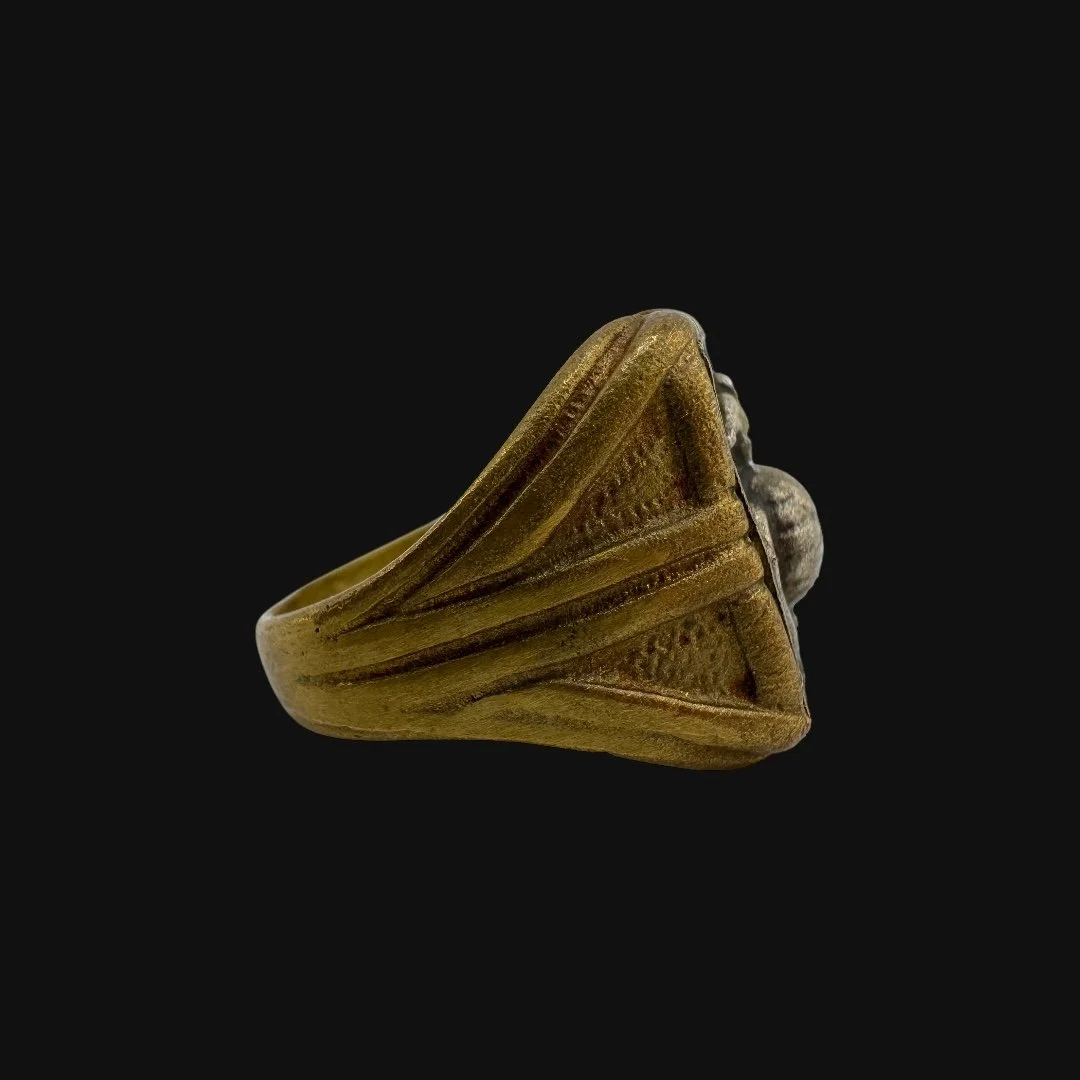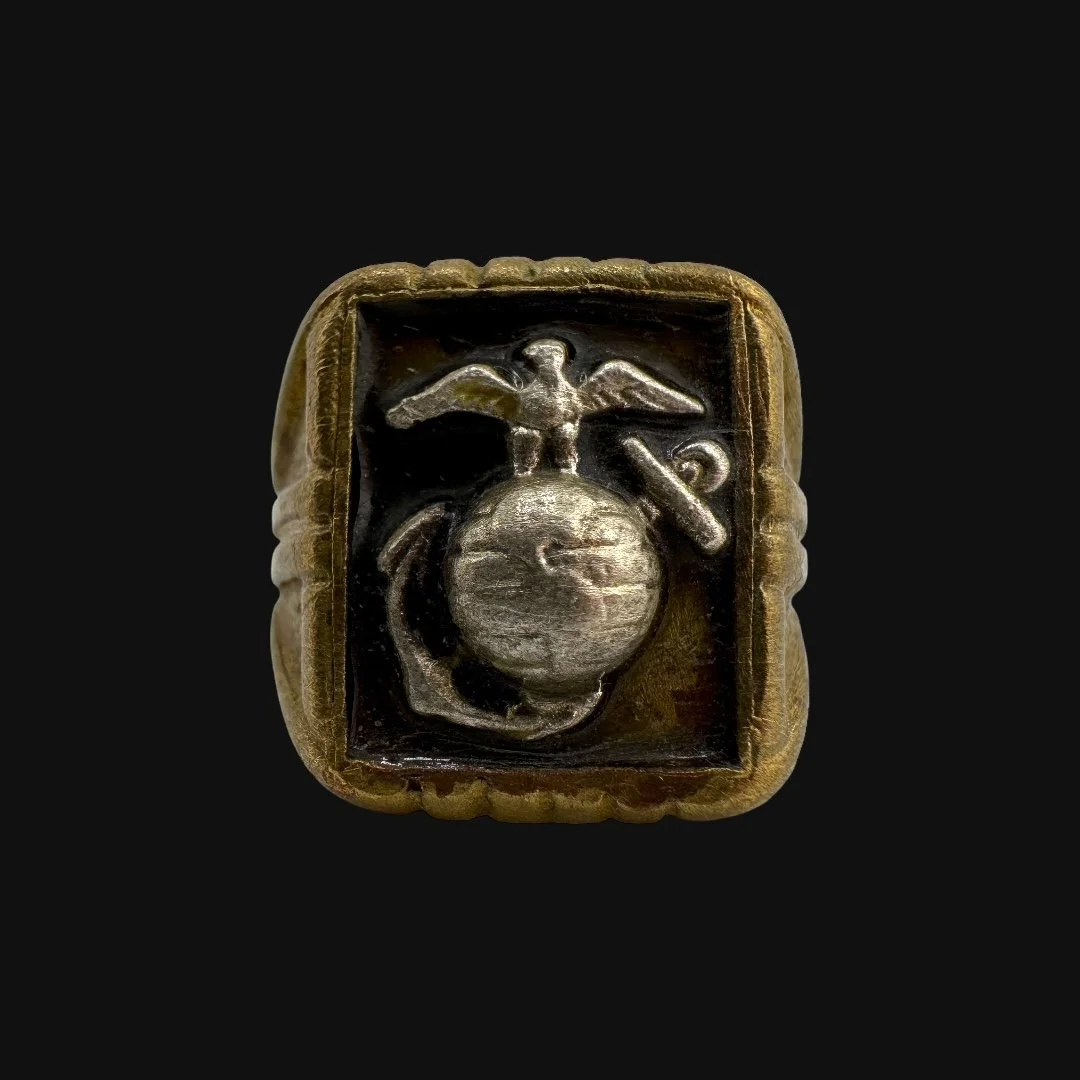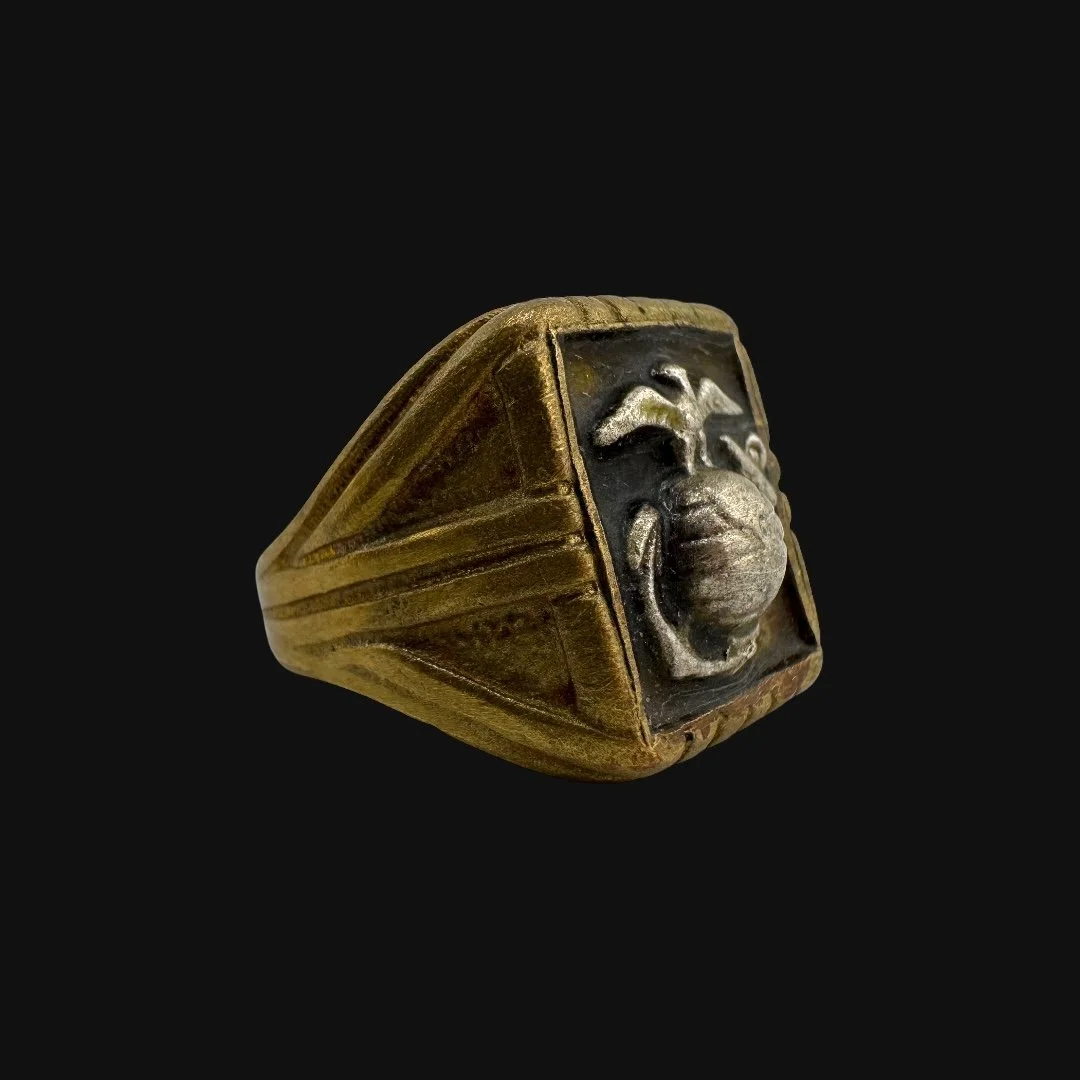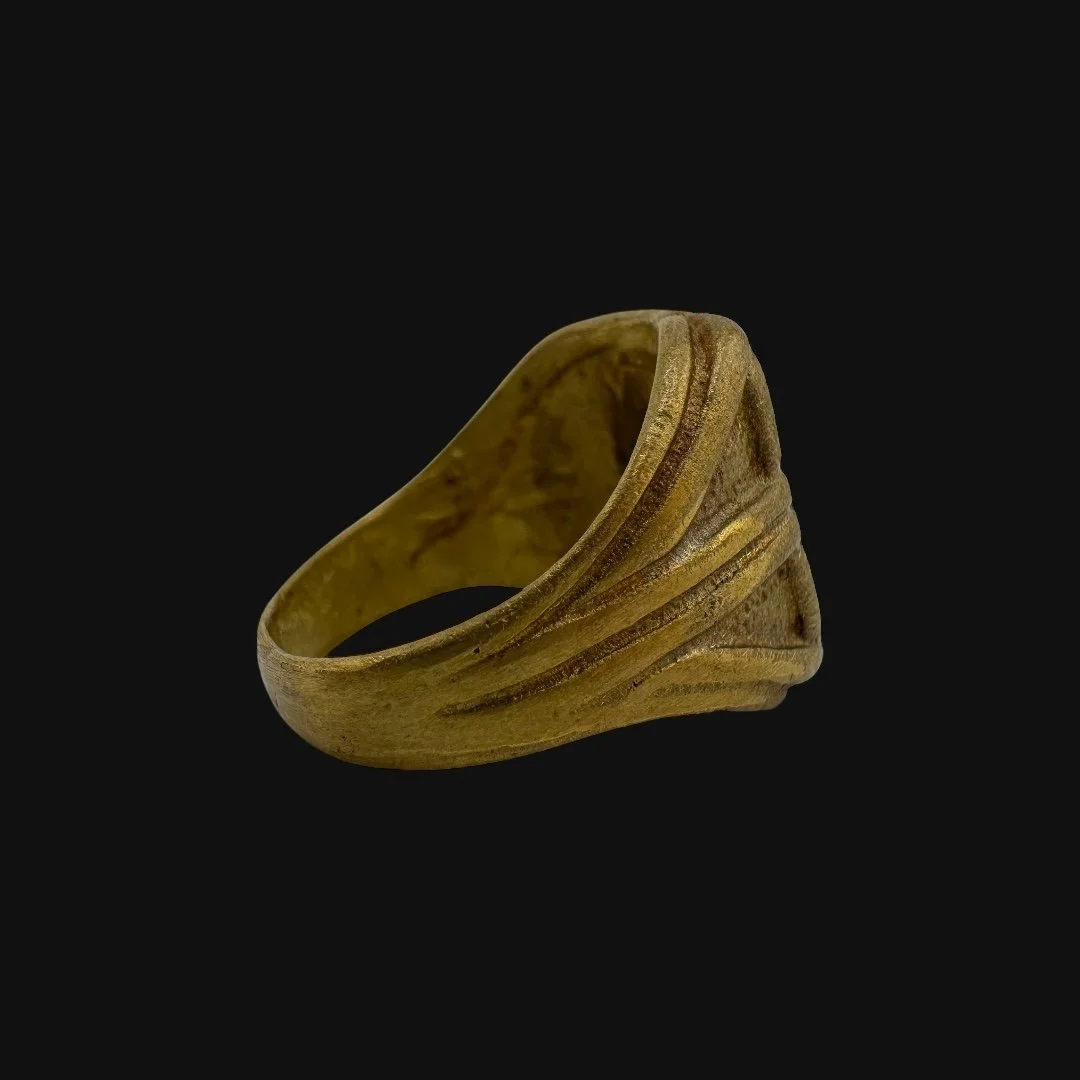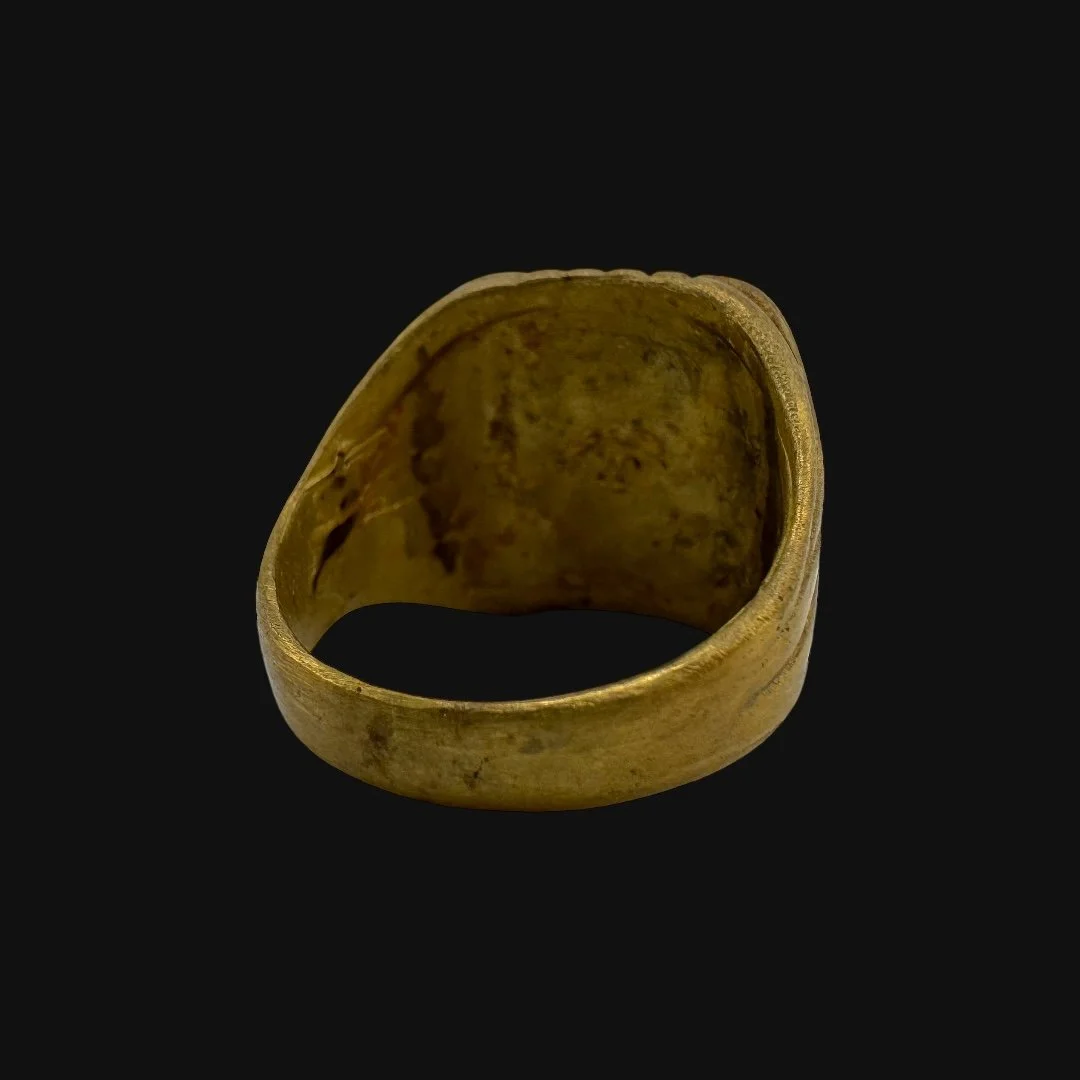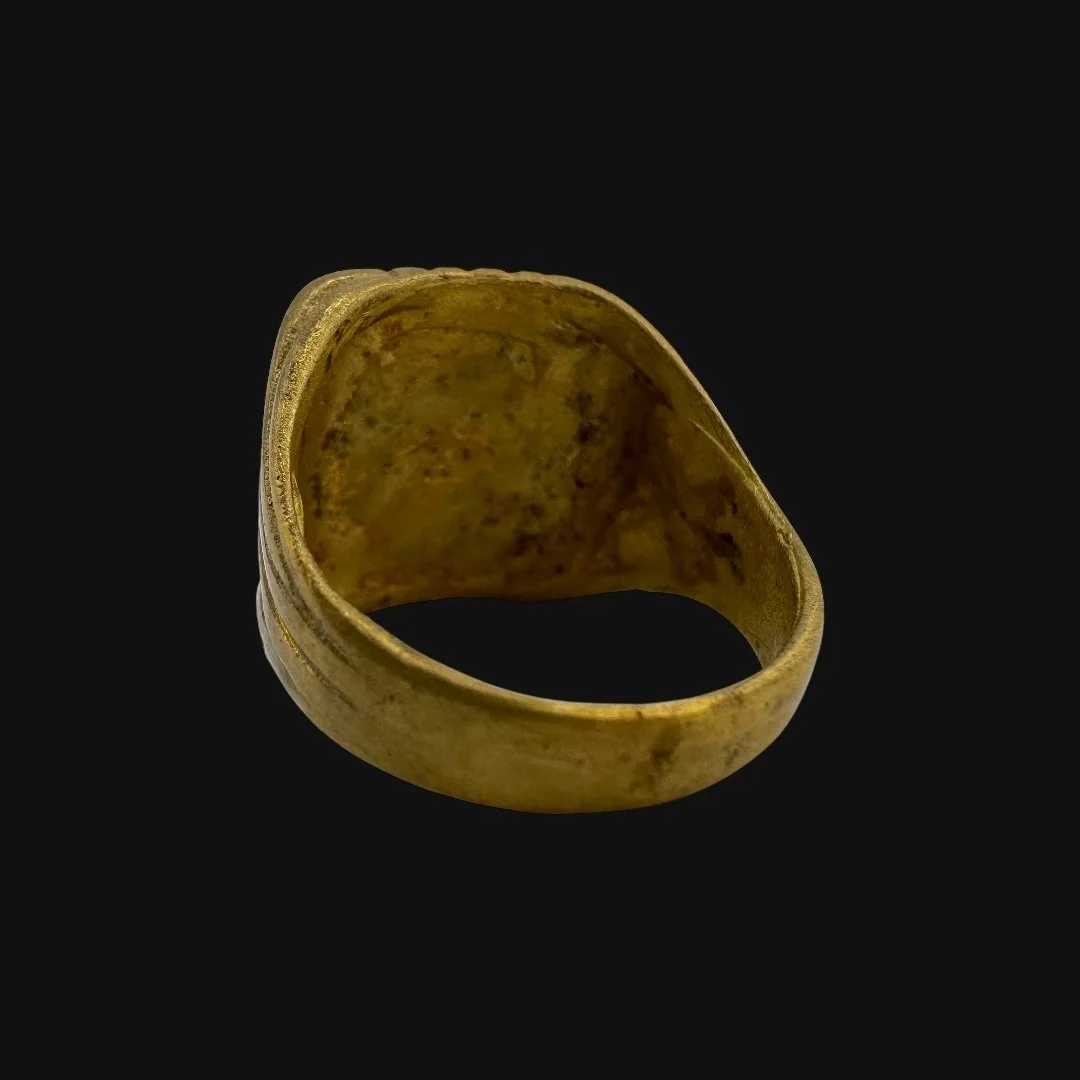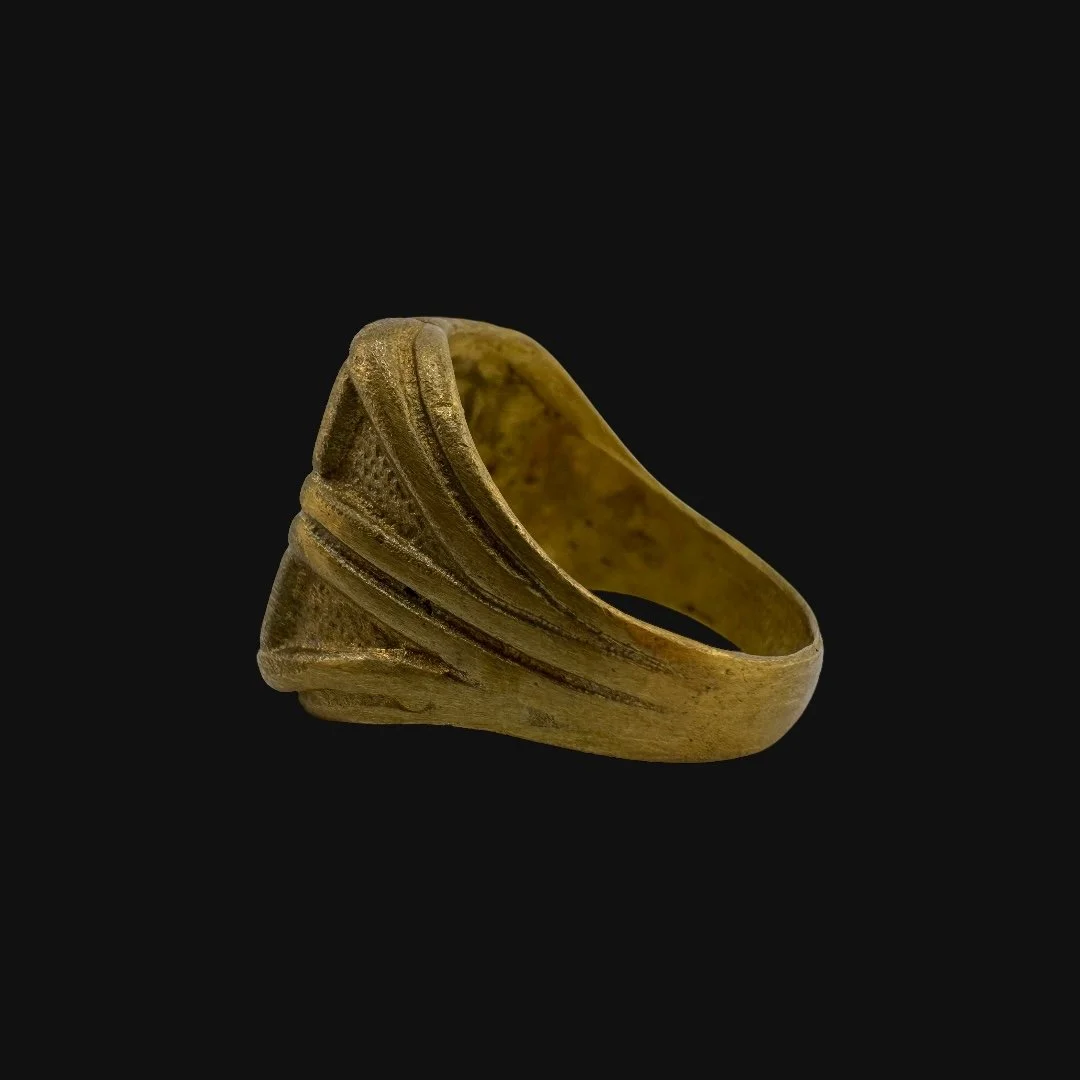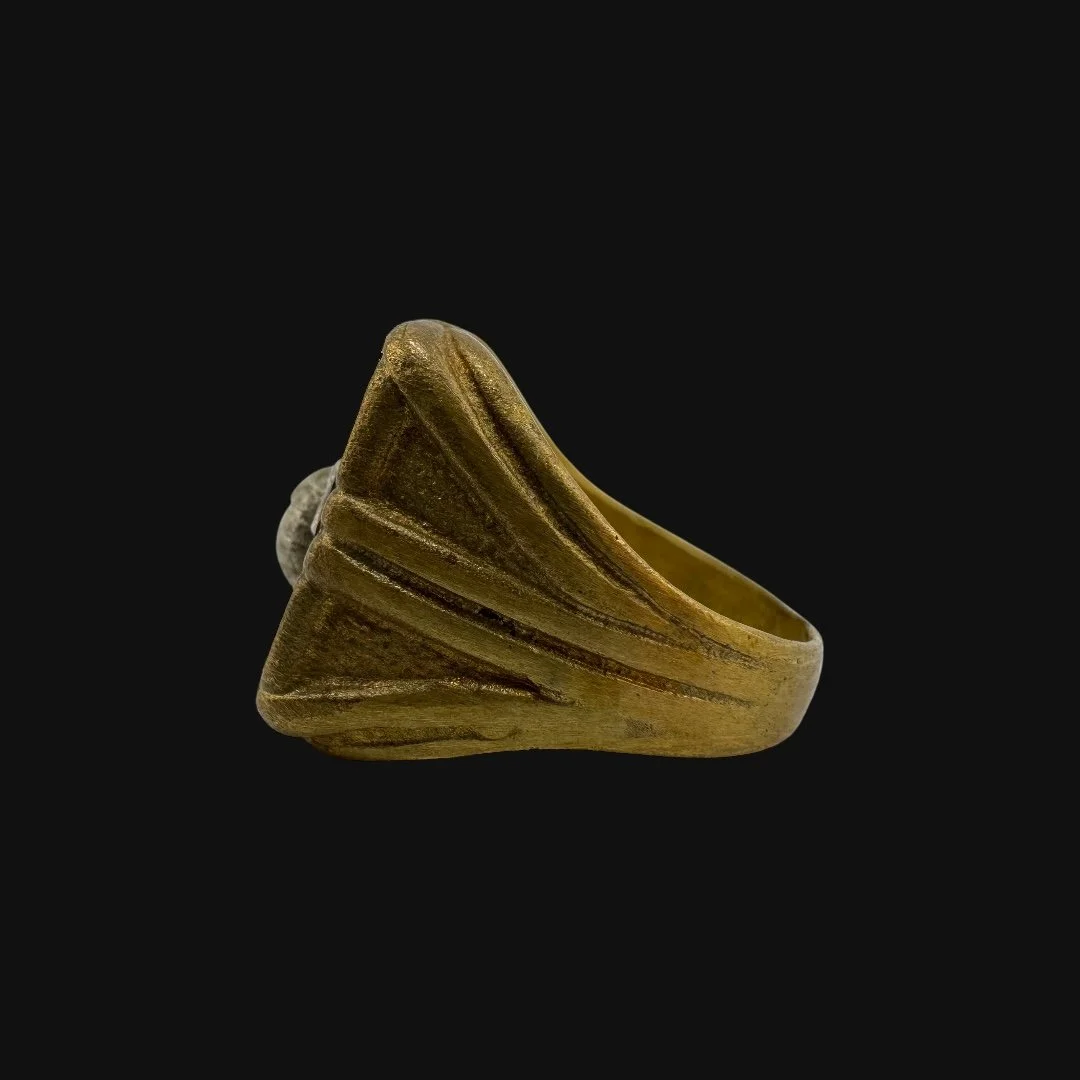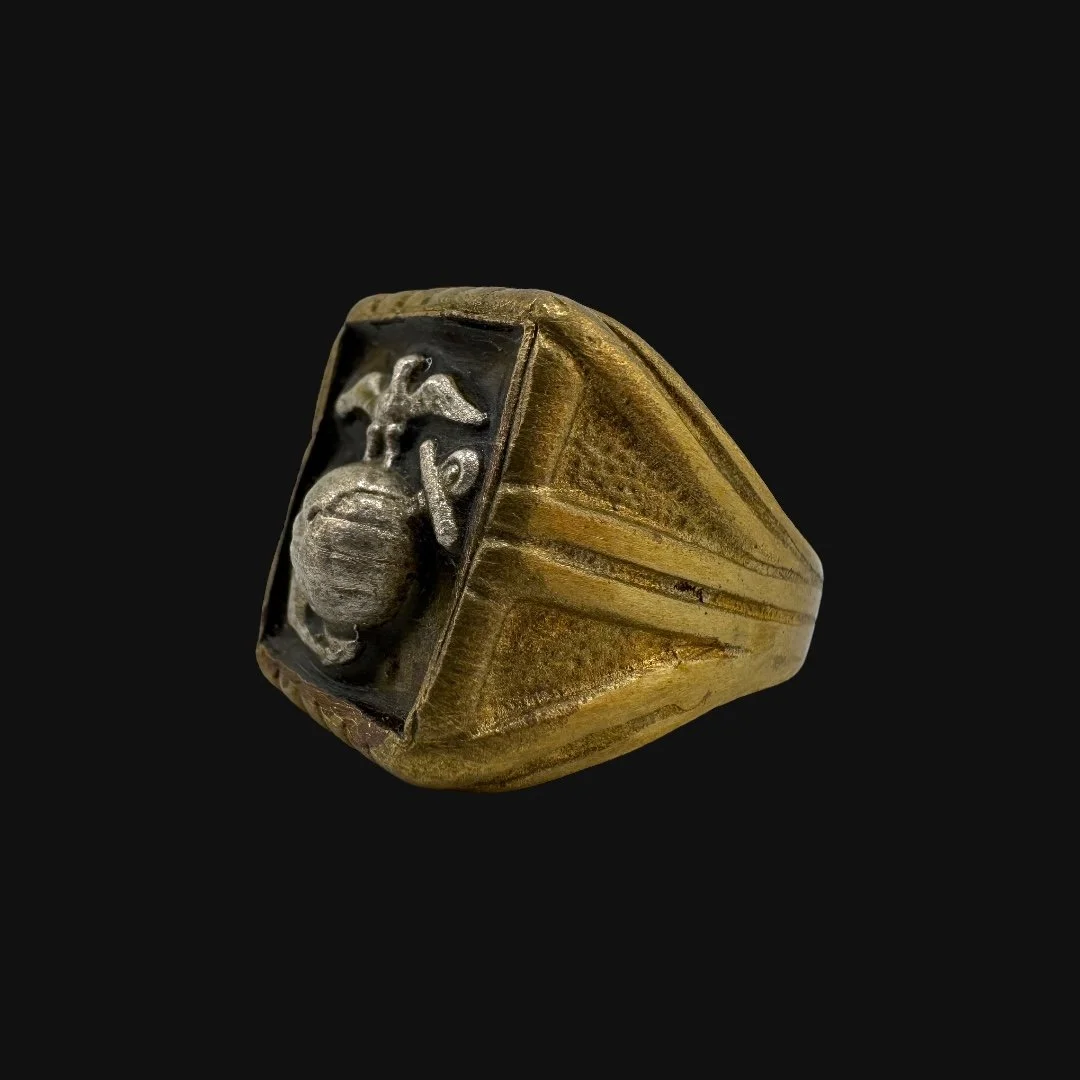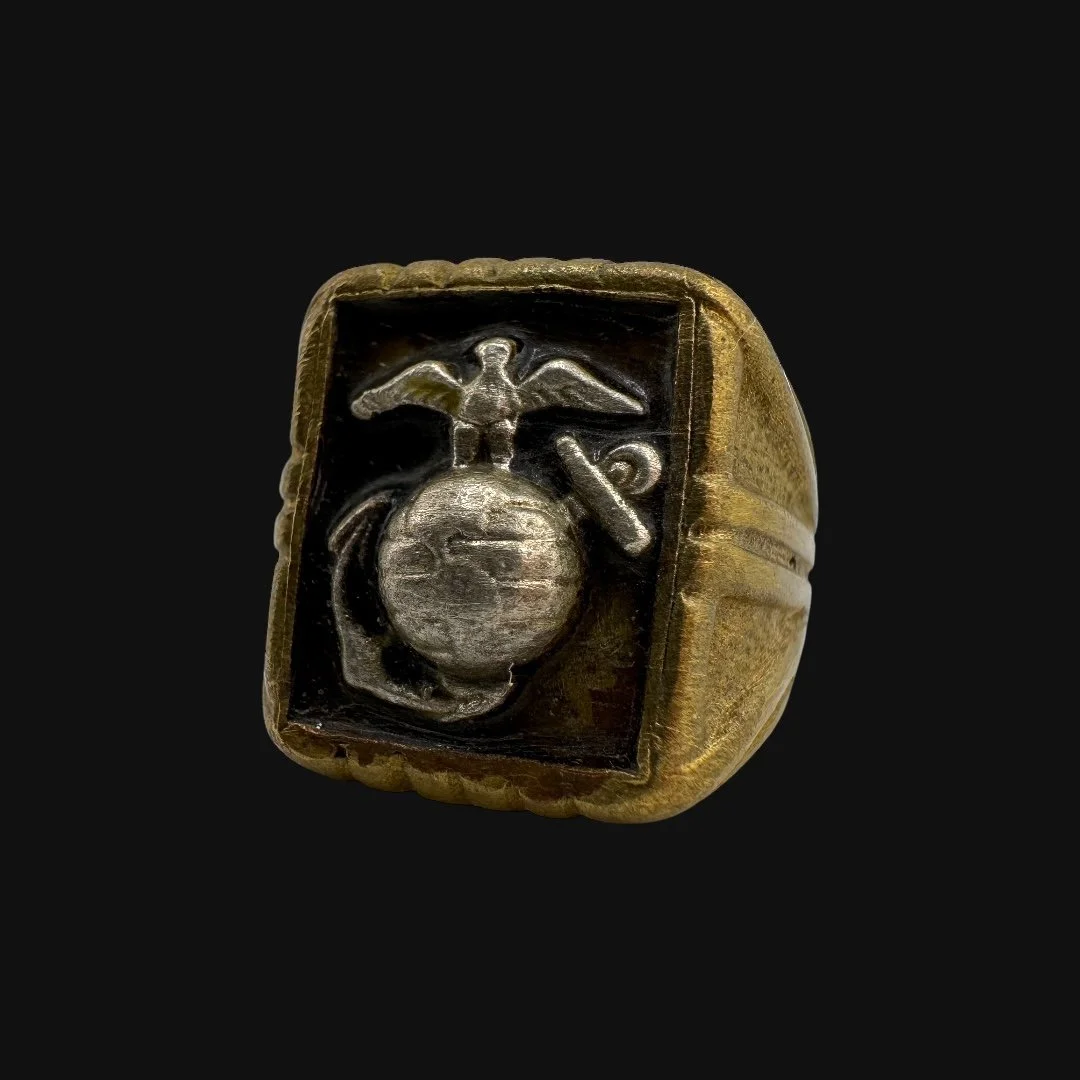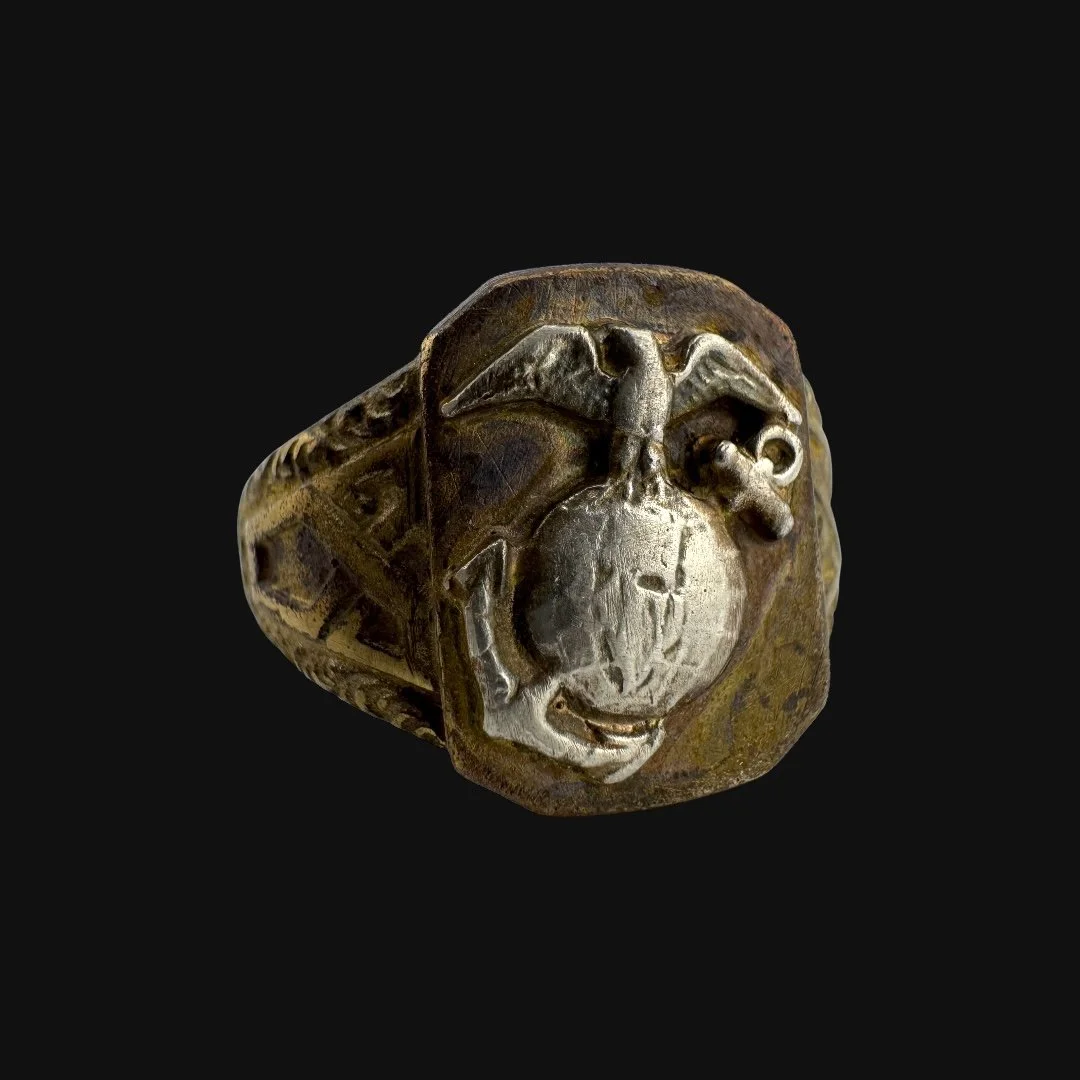 Image 1 of 13
Image 1 of 13

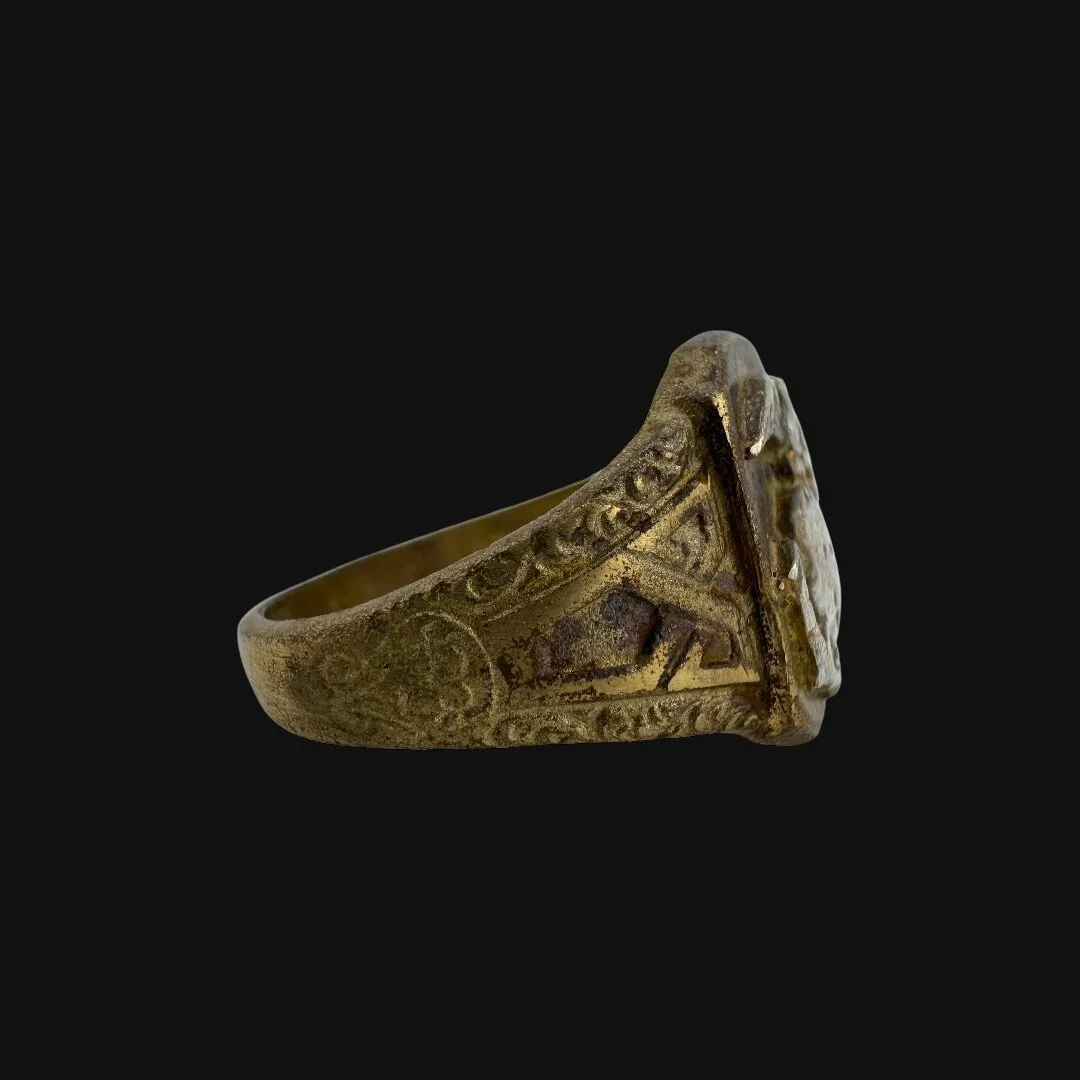 Image 2 of 13
Image 2 of 13

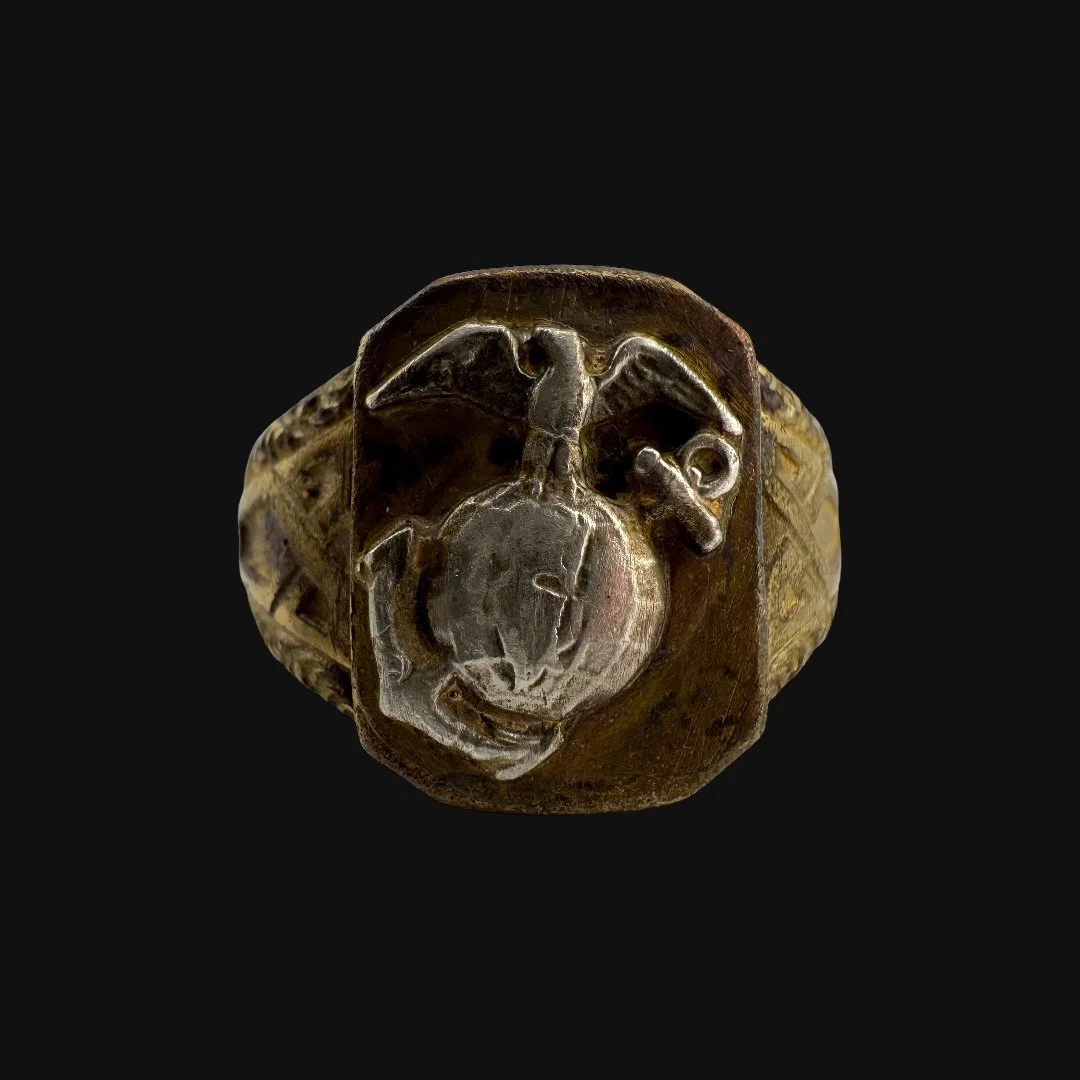 Image 3 of 13
Image 3 of 13

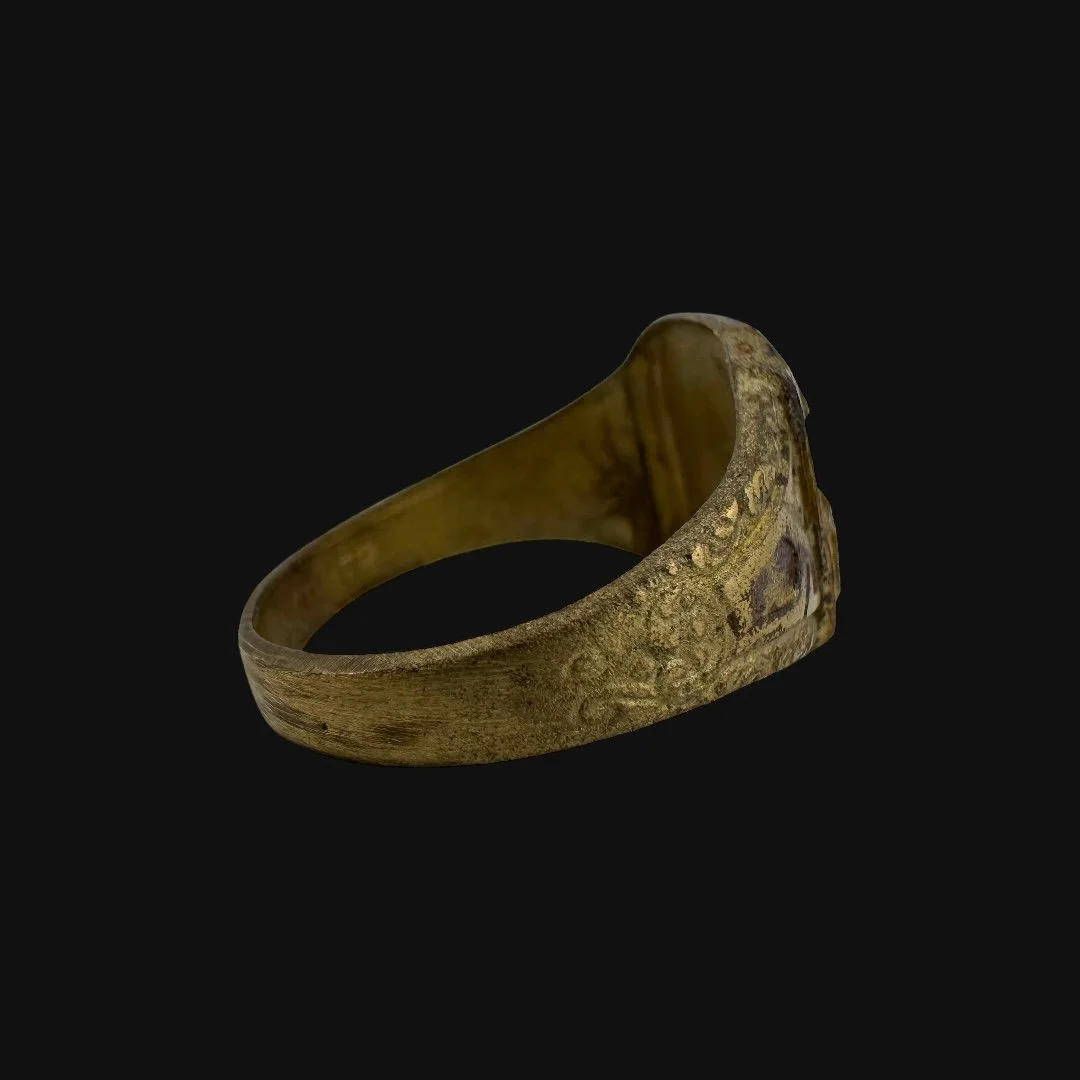 Image 4 of 13
Image 4 of 13

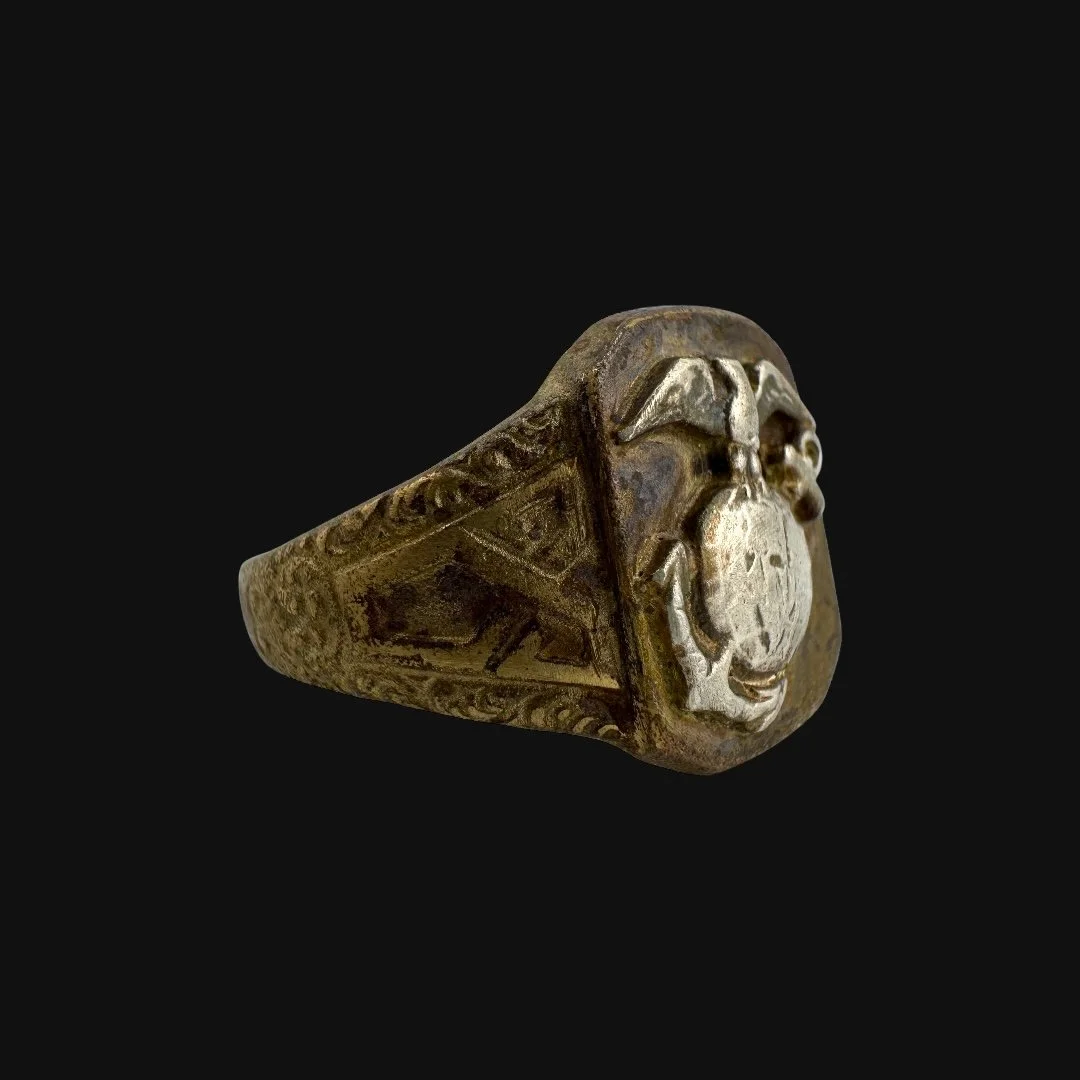 Image 5 of 13
Image 5 of 13

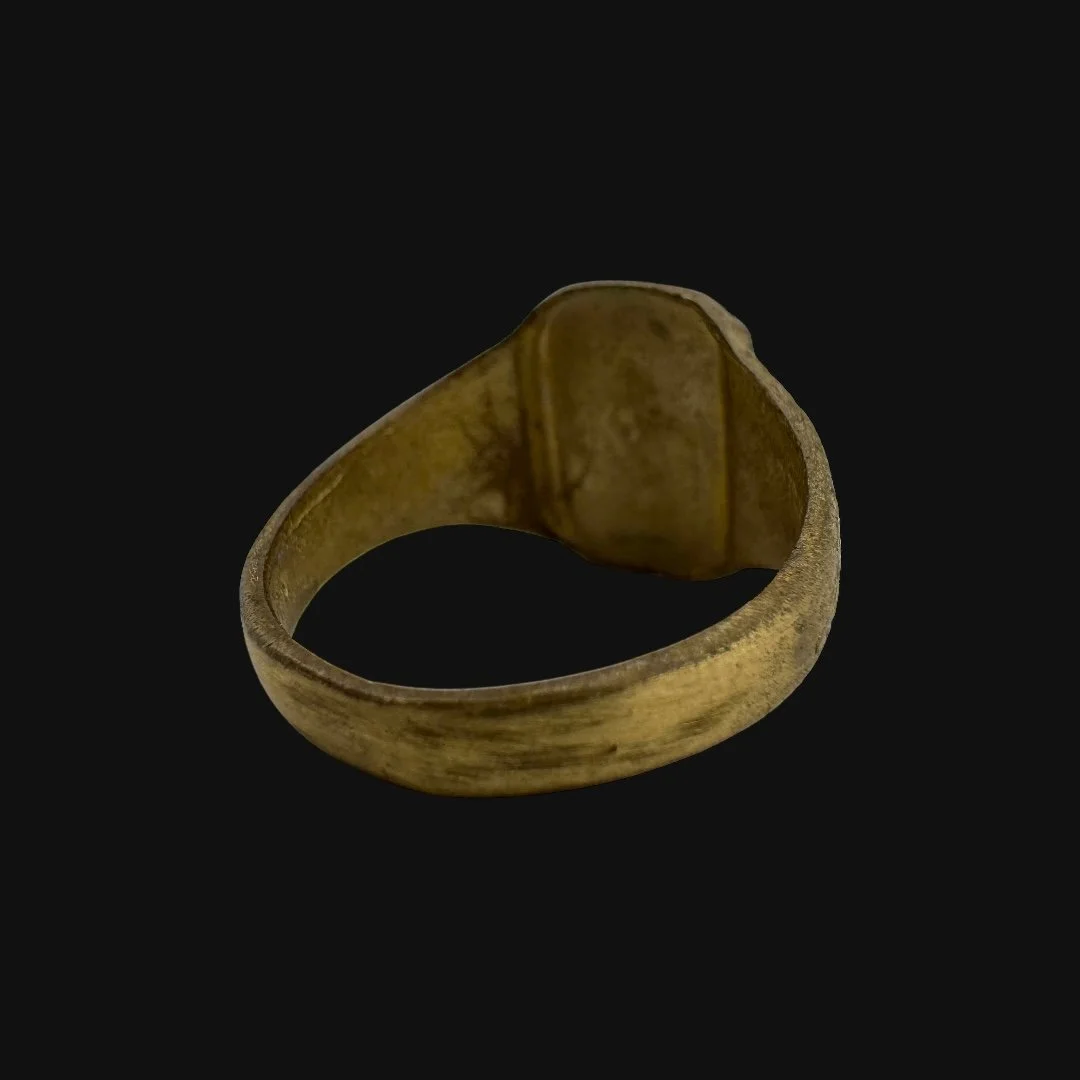 Image 6 of 13
Image 6 of 13

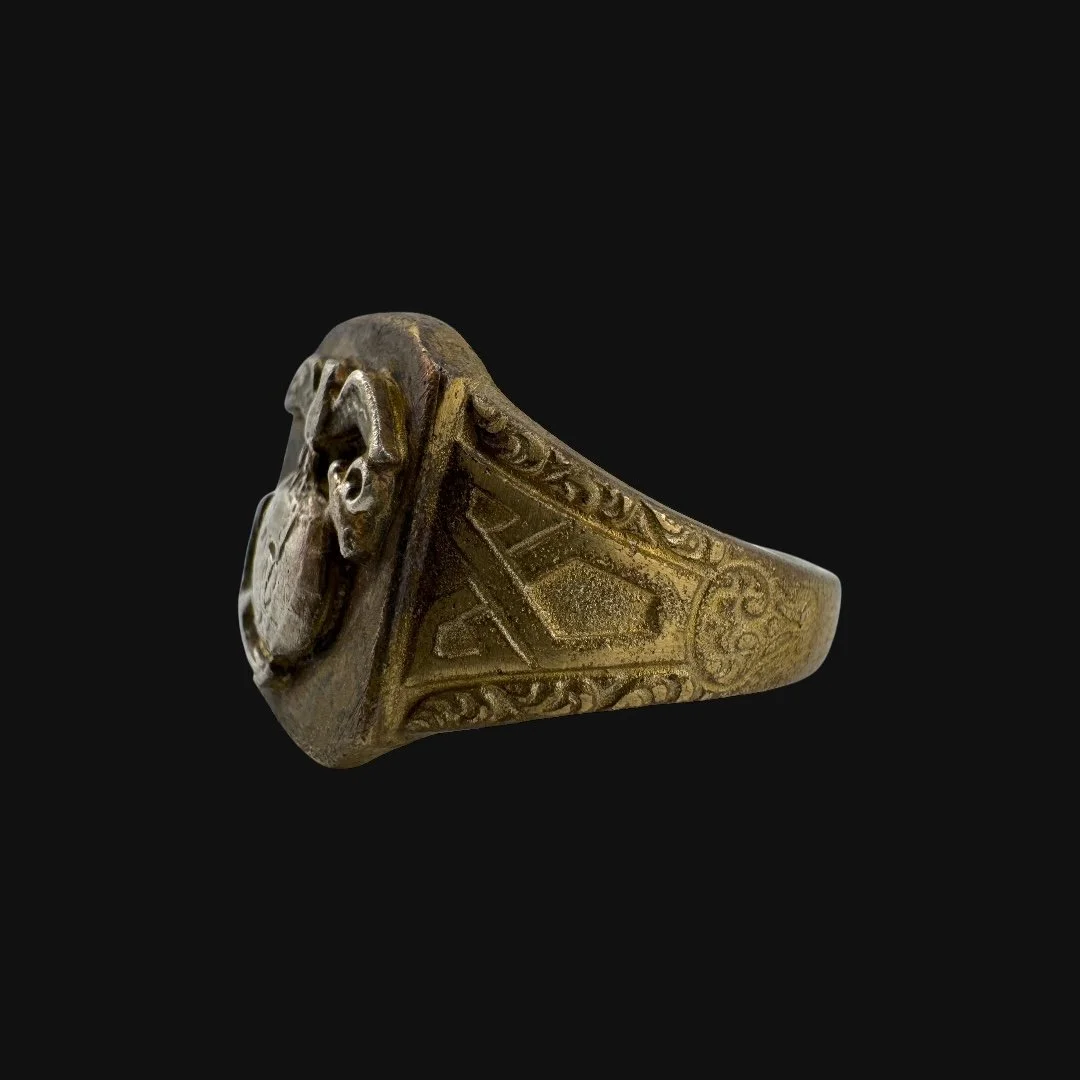 Image 7 of 13
Image 7 of 13

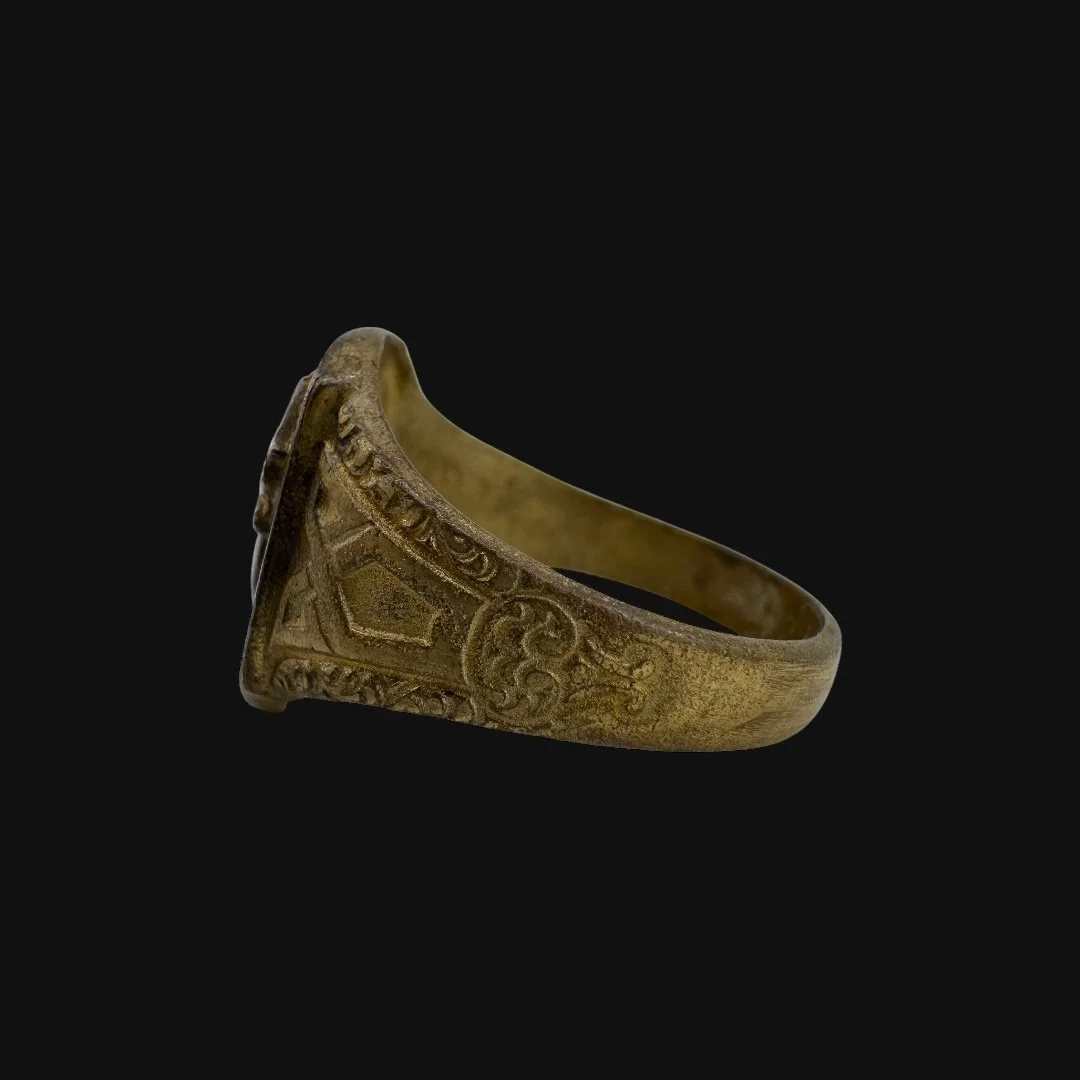 Image 8 of 13
Image 8 of 13

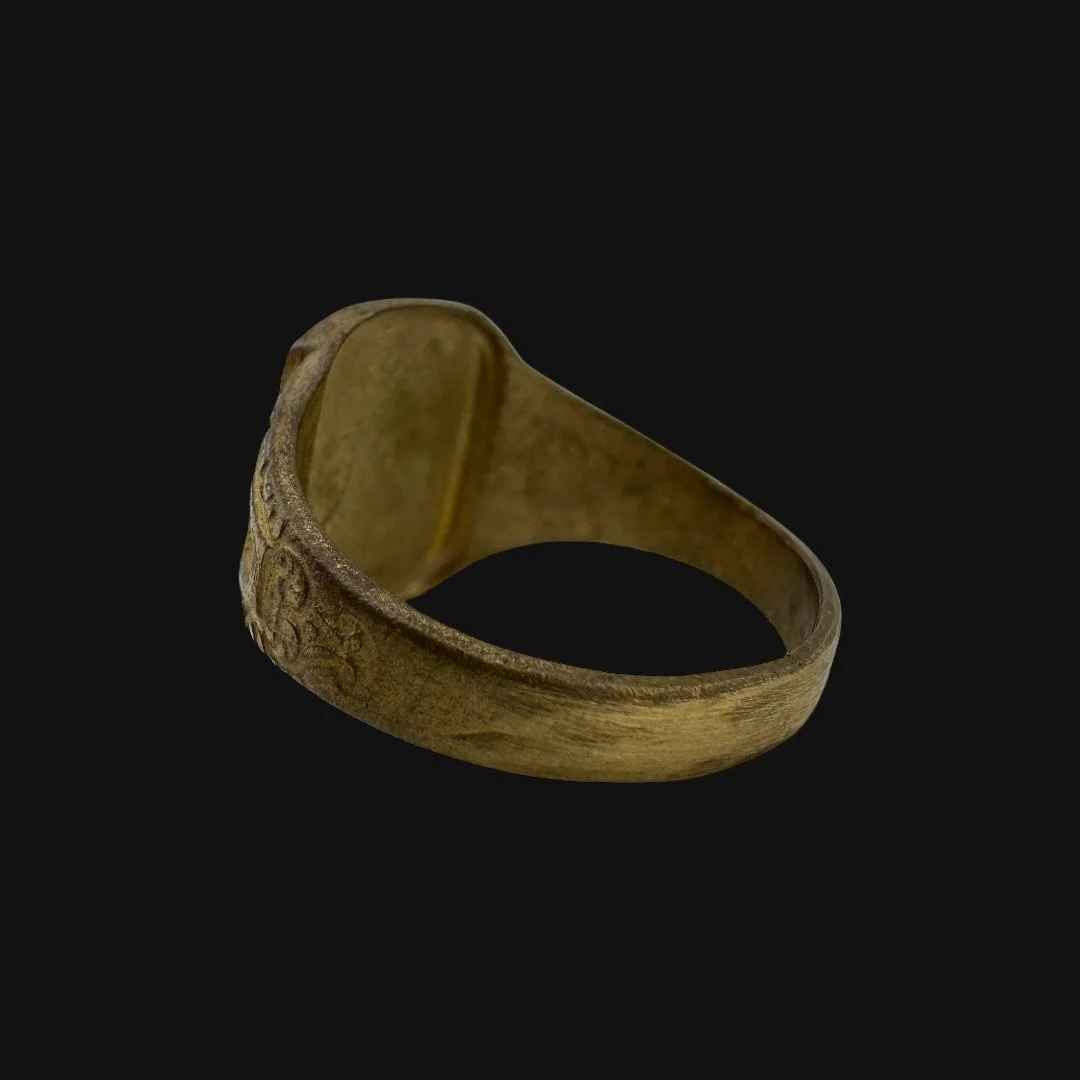 Image 9 of 13
Image 9 of 13

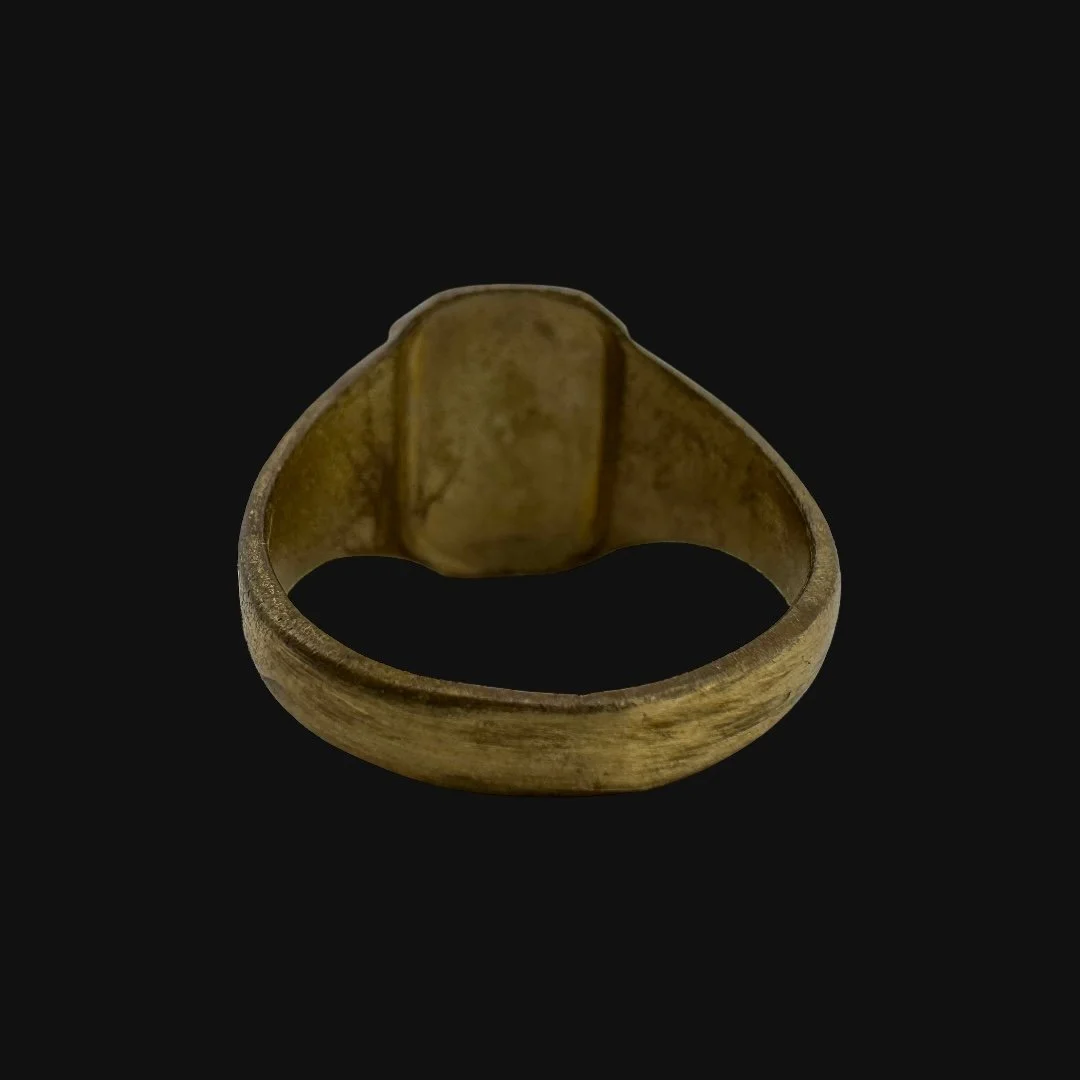 Image 10 of 13
Image 10 of 13

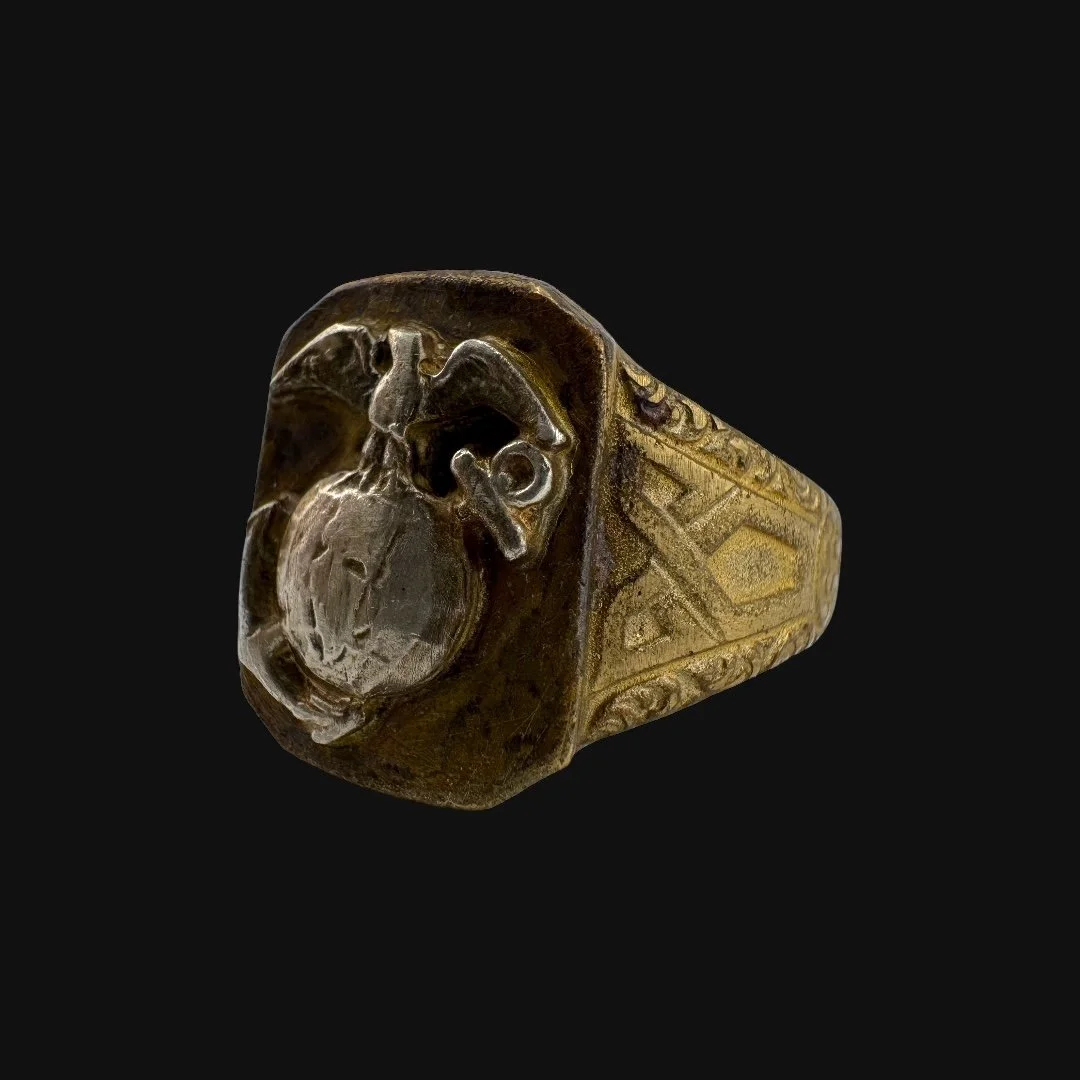 Image 11 of 13
Image 11 of 13

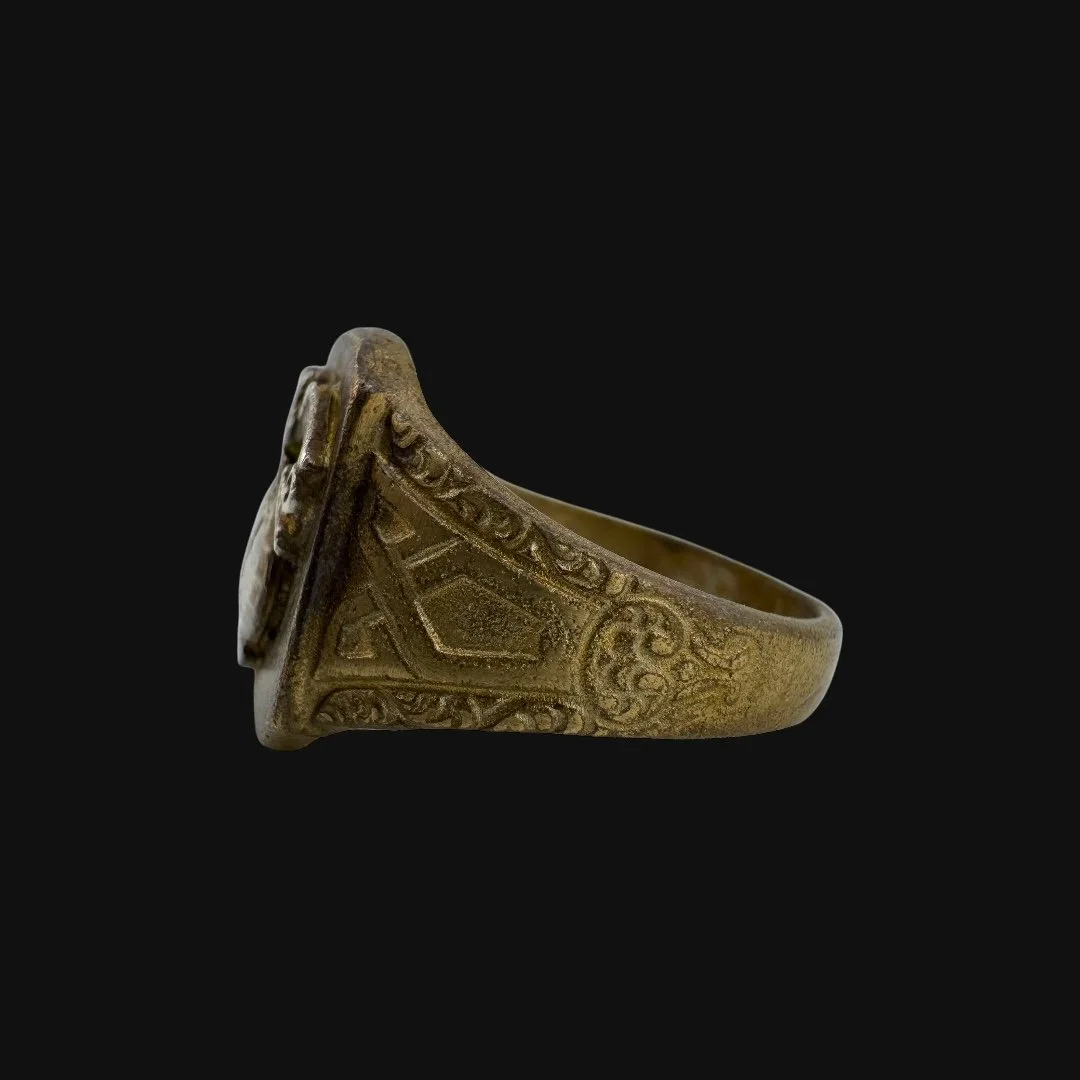 Image 12 of 13
Image 12 of 13

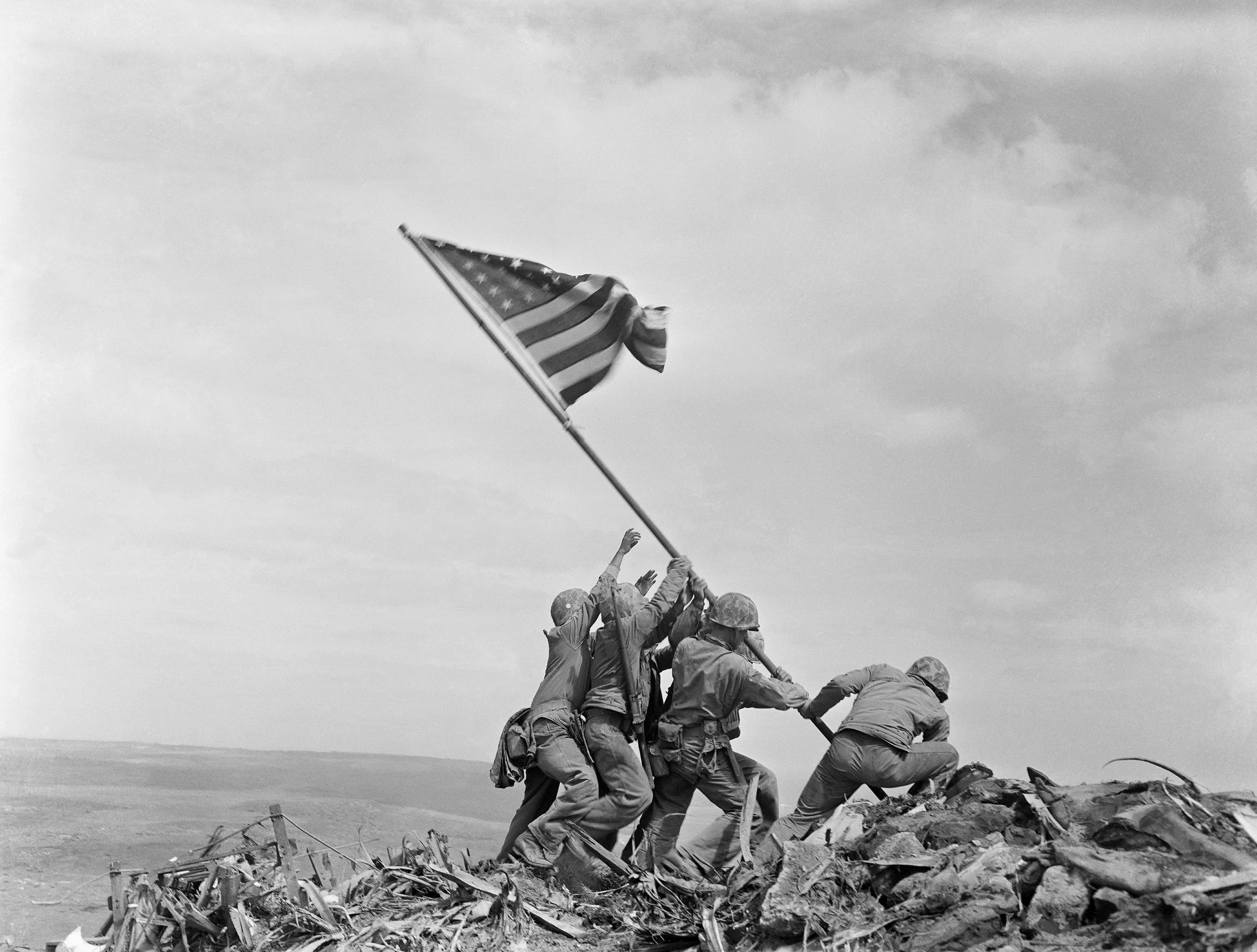 Image 13 of 13
Image 13 of 13














Original 1942-1945 WWII United States Marine Corps "USMC Emblem" Pacific Theater Ring (Size 10.5)
Comes with a hand-signed C.O.A. and a full historical research write-up
From: World War II
Branch: U.S. Marine Corps
Dated: 1942-1945
Ring Size: 10.5 (US)
Wearable History Collection:
This authentic 1942-1945 WWII-era ring, preserved in its original and unaltered condition, combines exceptional craftsmanship with lasting durability, making it fully suitable for modern wear today. As part of our exclusive World War II “Wearable History Ring Collection,” it offers the rare opportunity to own and wear a genuine piece of World War II. Both a timeless accessory and a tangible link to the past, this truly one-of-a-kind ring stands as a wearable tribute to the courage and sacrifice of a generation.
Historical Significance to the United States Marine Corps During World War II:
The United States Marine Corps emerged as one of the most decisive forces in the Pacific Theater during World War II, growing from 66,000 personnel in 1941 to over 485,000 by 1945. At the war’s outset, Marines were scattered across the Pacific, manning remote outposts from China to Midway. When Japan struck Pearl Harbor on December 7, 1941, Marine detachments were immediately in action. On Wake Island, a garrison of fewer than 2,000 Marines and civilians held off repeated Japanese attacks for 15 days, sinking two destroyers and damaging other ships before being overwhelmed. In the Philippines, Marines fought alongside Army units in the desperate defenses of Bataan and Corregidor, resisting until supplies and ammunition were gone.
The first major Marine offensive came in August 1942 with the 1st Marine Division landing on Guadalcanal. Facing disease, jungle warfare, and relentless Japanese assaults, Marines held Henderson Field in a six-month campaign that marked Japan’s first major land defeat. This victory opened the way for the island-hopping strategy that would define the Pacific war. Marines soon tested and refined amphibious assault doctrine at Tarawa in November 1943, where 4,500 Japanese defenders fought nearly to the last man. Coral reefs stranded landing craft, forcing Marines to wade through chest-deep water under heavy fire. In just 76 hours, they took the island at the cost of over 1,000 dead and 2,300 wounded, a sobering lesson in planning and equipment.
In 1944, the Marines struck in the Marshall and Mariana Islands. At Saipan, they fought alongside the Army for three weeks against 30,000 Japanese defenders, enduring fierce counterattacks and civilian tragedies. Victory there triggered political upheaval in Tokyo. On Tinian, Marines executed one of the war’s most brilliant landings, surprising defenders by attacking narrow beaches considered impossible, securing the island with fewer casualties and enabling the construction of massive airfields for B-29 raids on Japan.
By 1945, the Corps faced its deadliest battles. At Iwo Jima, beginning February 19, 70,000 Marines fought a month-long struggle against 21,000 entrenched Japanese. The battle claimed nearly 7,000 Marine lives and over 19,000 wounded. The flag raising on Mount Suribachi became an enduring symbol of sacrifice. Weeks later, Marines took part in Okinawa, the largest amphibious assault of the Pacific War, where kamikaze attacks, fierce ground combat, and mass civilian deaths marked the brutal reality of Japan’s final defenses.
Throughout the war, the Marines perfected amphibious warfare, integrating naval gunfire, air support, and logistics into a cohesive assault doctrine that remains foundational to modern operations. From the desperate stands of 1941 to the climactic victories of 1945, the Corps’ blend of adaptability, aggressive tactics, and unyielding spirit forged a legacy that still defines the Marine ethos.
The Legacy Within This Ring:
This original World War II 1942–1945 United States Marine Corps ring proudly bears the iconic Eagle, Globe, and Anchor emblem at its center, the timeless symbol of the Corps’ honor, courage, and commitment. Worn by a WWII Marine who served during the defining years of the Pacific War, it stood as more than a piece of jewelry. It was a personal badge of identity, forged in an era of relentless battle and unshakable duty. Each mark and contour reflects the pride of service, the memory of island beaches won at great cost, and the brotherhood formed in the crucible of war. This ring carries the echoes of campaigns from Guadalcanal to Iwo Jima, embodying the spirit of the Marines who fought across oceans and into history. Today, it endures as a preserved piece of wearable Marine Corps heritage. A lasting tribute to the grit, sacrifice, and unyielding resolve that helped carry the United States to victory in the greatest conflict of the 20th century.
Comes with a hand-signed C.O.A. and a full historical research write-up
From: World War II
Branch: U.S. Marine Corps
Dated: 1942-1945
Ring Size: 10.5 (US)
Wearable History Collection:
This authentic 1942-1945 WWII-era ring, preserved in its original and unaltered condition, combines exceptional craftsmanship with lasting durability, making it fully suitable for modern wear today. As part of our exclusive World War II “Wearable History Ring Collection,” it offers the rare opportunity to own and wear a genuine piece of World War II. Both a timeless accessory and a tangible link to the past, this truly one-of-a-kind ring stands as a wearable tribute to the courage and sacrifice of a generation.
Historical Significance to the United States Marine Corps During World War II:
The United States Marine Corps emerged as one of the most decisive forces in the Pacific Theater during World War II, growing from 66,000 personnel in 1941 to over 485,000 by 1945. At the war’s outset, Marines were scattered across the Pacific, manning remote outposts from China to Midway. When Japan struck Pearl Harbor on December 7, 1941, Marine detachments were immediately in action. On Wake Island, a garrison of fewer than 2,000 Marines and civilians held off repeated Japanese attacks for 15 days, sinking two destroyers and damaging other ships before being overwhelmed. In the Philippines, Marines fought alongside Army units in the desperate defenses of Bataan and Corregidor, resisting until supplies and ammunition were gone.
The first major Marine offensive came in August 1942 with the 1st Marine Division landing on Guadalcanal. Facing disease, jungle warfare, and relentless Japanese assaults, Marines held Henderson Field in a six-month campaign that marked Japan’s first major land defeat. This victory opened the way for the island-hopping strategy that would define the Pacific war. Marines soon tested and refined amphibious assault doctrine at Tarawa in November 1943, where 4,500 Japanese defenders fought nearly to the last man. Coral reefs stranded landing craft, forcing Marines to wade through chest-deep water under heavy fire. In just 76 hours, they took the island at the cost of over 1,000 dead and 2,300 wounded, a sobering lesson in planning and equipment.
In 1944, the Marines struck in the Marshall and Mariana Islands. At Saipan, they fought alongside the Army for three weeks against 30,000 Japanese defenders, enduring fierce counterattacks and civilian tragedies. Victory there triggered political upheaval in Tokyo. On Tinian, Marines executed one of the war’s most brilliant landings, surprising defenders by attacking narrow beaches considered impossible, securing the island with fewer casualties and enabling the construction of massive airfields for B-29 raids on Japan.
By 1945, the Corps faced its deadliest battles. At Iwo Jima, beginning February 19, 70,000 Marines fought a month-long struggle against 21,000 entrenched Japanese. The battle claimed nearly 7,000 Marine lives and over 19,000 wounded. The flag raising on Mount Suribachi became an enduring symbol of sacrifice. Weeks later, Marines took part in Okinawa, the largest amphibious assault of the Pacific War, where kamikaze attacks, fierce ground combat, and mass civilian deaths marked the brutal reality of Japan’s final defenses.
Throughout the war, the Marines perfected amphibious warfare, integrating naval gunfire, air support, and logistics into a cohesive assault doctrine that remains foundational to modern operations. From the desperate stands of 1941 to the climactic victories of 1945, the Corps’ blend of adaptability, aggressive tactics, and unyielding spirit forged a legacy that still defines the Marine ethos.
The Legacy Within This Ring:
This original World War II 1942–1945 United States Marine Corps ring proudly bears the iconic Eagle, Globe, and Anchor emblem at its center, the timeless symbol of the Corps’ honor, courage, and commitment. Worn by a WWII Marine who served during the defining years of the Pacific War, it stood as more than a piece of jewelry. It was a personal badge of identity, forged in an era of relentless battle and unshakable duty. Each mark and contour reflects the pride of service, the memory of island beaches won at great cost, and the brotherhood formed in the crucible of war. This ring carries the echoes of campaigns from Guadalcanal to Iwo Jima, embodying the spirit of the Marines who fought across oceans and into history. Today, it endures as a preserved piece of wearable Marine Corps heritage. A lasting tribute to the grit, sacrifice, and unyielding resolve that helped carry the United States to victory in the greatest conflict of the 20th century.
